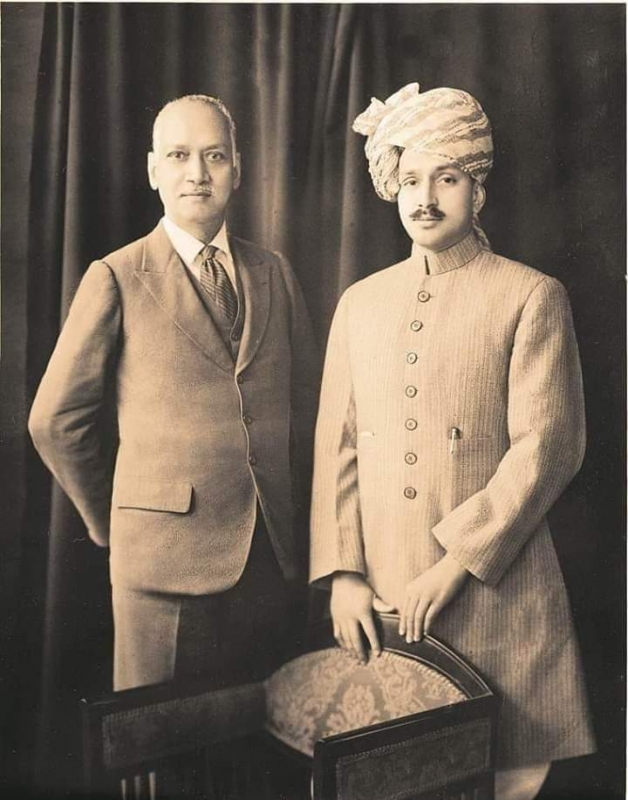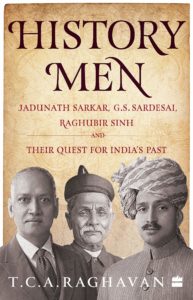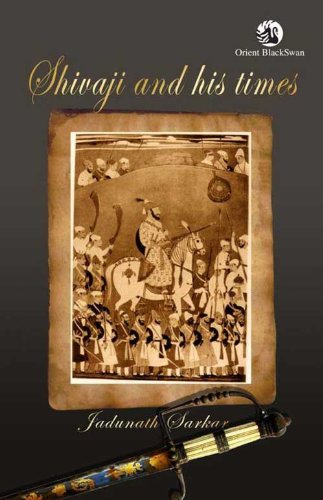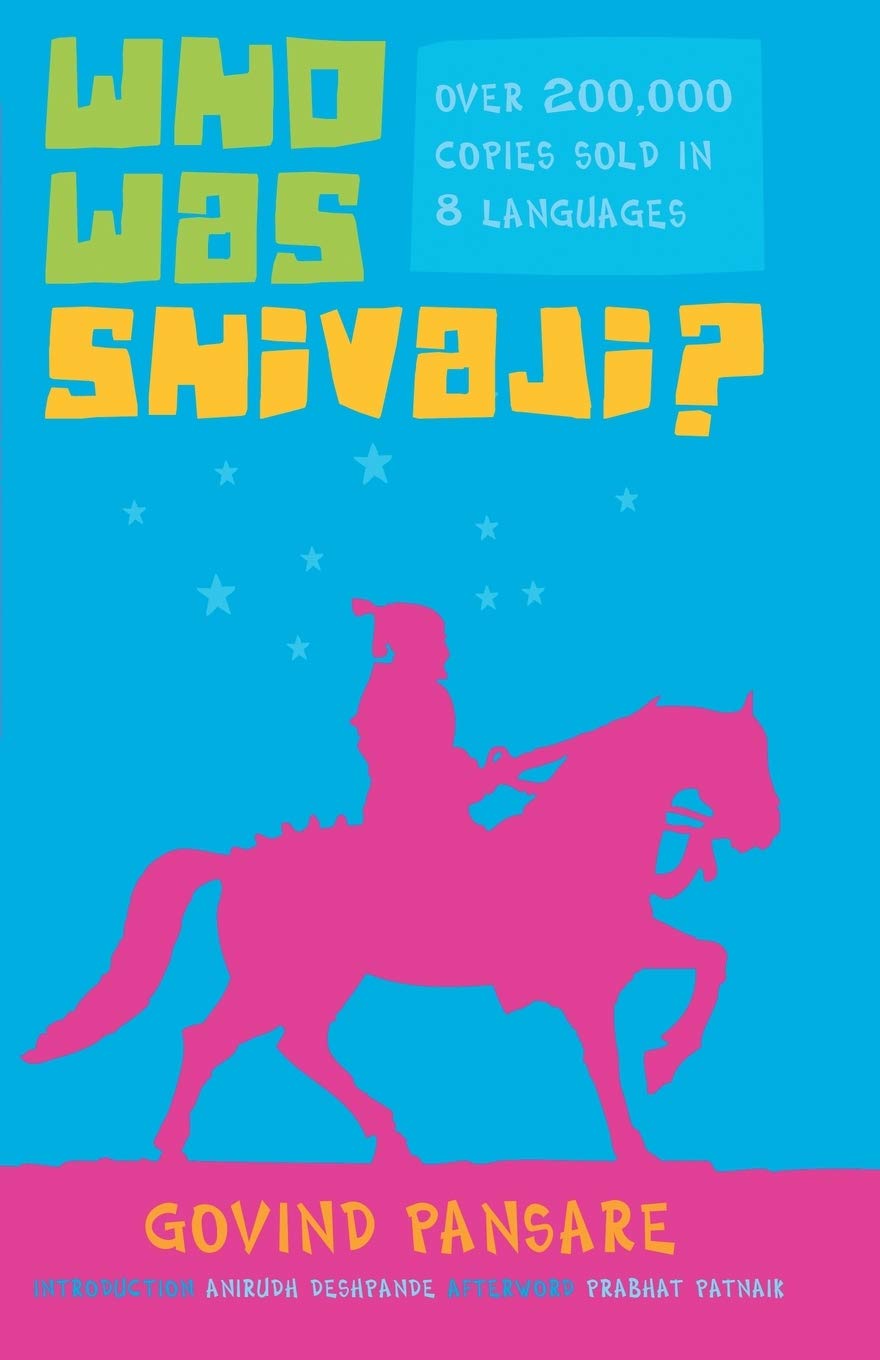ARCHIVE
RAGHUBIR SINH
A Princely Historian
Far removed from the middle–class origins and professional careers of Sarkar and Sardesai is the third actor in this history. Raghubir Sinh — heir to the princely state of Sitamau, located in the patchwork of princely states aggregated by the colonial state in the mid–nineteenth century as the Central India Agency. As such kingdoms went, Sitamau was not small — its ruler bore the title of His Highness and Raja and was entitled to a salute of eleven guns. Within its boundaries of some 350 sq. miles were ninety-three villages. The kingdom of Sitamau had come into being at the end of the seventeenth century, founded by a cadet branch of Rathor Rajputs from Ratlam — which in turn had been founded by Ratan Singh, a descendent of the ruling clan of Jodhpur.
The Rajput ruling houses of Ratlam and Jodhpur thus defined one aspect of Sitamau’s geographical and political environment. The state was also bordered by the large princely states of Gwalior and Indore — founded respectively by the powerful Maratha clans of the Scindias and the Holkars. Sitamau, from the late eighteenth century, had passed into the control of Scindia’s armies and it was a tributary to Gwalior until the appearance of the British on the scene who established a new paramountcy.
The princely state of Indore was Sitamau’s major neighbour and Indore city its closest major urban centre. Sitamau’s history is, therefore, permeated by all the friction of Maratha—Rajput interface that informed so much of Raghbir Sinh’s scholarship and historical research. Much of what Sarkar and Sardesai researched in the fall of the Mughals and the rise of the Marathas and the final extinction of both powers, formed Sinh’s personal inheritance — in terms of family and clan history.
Raghubir Sinh was born in Sitamau in February 1908, the eldest son of the ruler, Raja Sir Ram Singh. His early studies were at the Daly College, Indore, and thereafter at the Baroda High School. Unusually for a ruling prince, he went on to study further — a BA and thereafter a law degree from the Agra University — and taught at the Sitamau high school before securing an MA in history also from the Agra University. What explained this professional and middle–class trajectory for a scion of a ruling house in central India? Raghubir Sinh was often to be asked this question and he would relate the tradition of literature and poetry for which Sitamau rulers had achieved some local distinction. One of his ancestors was thus named as a friend by Suryamal Mishran, the author of Vansh Bhaskar, an important early–nineteenth–century chronicle of the Hada Rajputs of Bundi. His father, Maharaja Sir Ram Singh, too took pride in being a poet and encouraged others including his children in literary activity. Incidentally, he would personally teach English to his children.
Raghubir Sinh was born in Sitamau in February 1908, the eldest son of the ruler, Raja Sir Ram Singh. His early studies were at the Daly College, Indore, and thereafter at the Baroda High School. Unusually for a ruling prince, he went on to study further — a BA and thereafter a law degree from the Agra University — and taught at the Sitamau high school before securing an MA in history also from the Agra University.
Yet, notwithstanding these literary traditions, it was an external event that focused Ram Singh’s attention on the future of the Indian princes and in particular how his sons would manage without a kingdom. This event was the Russian Revolution and the overthrow of Tsar Nicholas. On the afternoon this news came, Sinh recollected that he had found his father worried and somewhat bewildered. He did not begin the customary English tuition but instead spoke about the earlier revolutions in France and England and the fates that had met Louis XVI and Charles I. He then said: ‘At the moment everything is quiet in India but no one knows what the future holds and it is possible that the princely states will face great change and they may well come to an end. It is therefore essential that each of you should be fully educated and learn to stand on your own feet.’
In Raghubir Sinh’s account, doing a BA and then obtaining a law degree was thus chartered out for him then, but his father’s prescience extended to his other progeny also and became a tradition for the Sitamau ruling family. Raghubir Sinh’s own children and grandchildren too were to lead lives in different vocations and careers including the civil services and the corporate world. Their family inheritance has, unlike many other erstwhile princely families of India, not been treated as an asset but as a tradition. Raghubir Sinh gave early evidence of what was to become a lifelong interest in historical research, and history. While still a young man of twenty–two and possibly with little historical training, his first book Poorva Madhyakalin Bharat (Pre–Medieval India), was written in 1930 and published in 1931. It, he reminisced later, enjoyed a brief success largely because there were not many such works then available in Hindi. The book is intended as a reflective look at the Delhi Sultanate — and is novel to the extent it looks at that period of history not in dynastic terms but in terms of broader social and military trends.
Raghubir Sinh subdivided the sultanate history into five themes: Military Rule (1206—94), Progressive Governance (1254—1351); Religious Governance (1251—1388); Period of Weak Governance and Instability (1388—1450); and, Feudal Dominated Government (1450—1526). Such a conceptual disaggregation was intended to provide an overview of sultanate history consciously different from more conventional approaches exemplified by Ishwari Prasad’s History of Medieval India — published in 1925 and which remained for decades later the standard work. Raghubir Sinh’s book shows the author as a serious young man who was embarking on a study of history with high motives. The opening sentence of the book is a quote from Leibnitz, ‘The present began in the past.’ But more novel are the reasons that he advanced for writing the book:Raghubir Sinh gave early evidence of what was to become a lifelong interest in historical research, and history. While still a young man of twenty–two and possibly with little historical training, his first book Poorva Madhyakalin Bharat (Pre–Medieval India), was written in 1930 and published in 1931. It, he reminisced later, enjoyed a brief success largely because there were not many such works then available in Hindi.
Sarkar gave a strong endorsement to Raghubir Sinh’s book in the form of a testimonial:
Yet despite such a strong recommendation from India’s greatest living historian and notwithstanding being prescribed as a text in the Banaras Hindu University and the Nagpur University, the book faded away quickly. A separate story, however, surrounds how Sarkar wrote this recommendation for it, although it was written after Poorva Madhyakalin Bharat was published. Possibly, it was at Raghubir Sinh’s request to establish its worth. He reminisced years later that the acquaintance of the historian with the Sitamau rulers began in 1926 when a difference of opinion arose on a sanad granted by Aurangzeb to Keshav Das, the founder of the Sitamau state. Sarkar studied the available documentation and gave an opinion that settled these disputes. Raghubir Sinh, however, maintained contact with Sarkar thereafter and this possibly explains the endorsement. Sinh was also to recall that his teacher in Agra, J.C. Taluqdar, also introduced him to Sarkar as a possible research student.
Following a brief visit to Sitamau by Sarkar and his family in October 1934 the relationship crystallized with Sarkar agreeing to act as research guide for Raghubir Sinh’s DLitt. thesis. This resulted in Sinh’s best known work, Malwa in Transition. Sarkar himself does not appear to have required much encouragement in accepting Sinh as a student — the idea of guiding the research efforts of the scion of a Rajput state would have been appealing and despite almost a forty–year age gap between the two, a close relationship developed which is apparent from even a cursory reading of their letters. Incidentally, Sarkar, during his visit to Sitamau, was accompanied by his wife, two daughters, a son–in–law and a servant and he was travelling to Ujjain after visiting the battlefield at Haldighati and the fort complex at Chittorgarh, en route. Sitamau was on the way as Sarkar was also visiting Fatehabad, where a major battle between Aurangzeb’s and Shah Jahan’s armies — the battle of Dharmat — took place in 1658.
Following a brief visit to Sitamau by Sarkar and his family in October 1934 the relationship crystallized with Sarkar agreeing to act as research guide for Raghubir Sinh’s DLitt. thesis. This resulted in Sinh’s best known work, Malwa in Transition. Sarkar himself does not appear to have required much encouragement in accepting Sinh as a student — the idea of guiding the research efforts of the scion of a Rajput state would have been appealing and despite almost a forty–year age gap between the two, a close relationship developed which is apparent from even a cursory reading of their letters.
Raghubir Sinh was once asked whether his princely status meant any special privileges or treatment from Sarkar. He had reminisced:
The history of Malwa, the region in which Sitamau is located, in the eighteenth century was Raghubir Sinh’s chosen subject. ‘It is,’ Sarkar wrote to the young prince in March 1934, ‘a fascinating subject, but the difficulty of writing it is no less than its interest.’ The difficulty arose ‘… from the interplay of an immense and complicated variety of races and forces and the lack of written records. … Your task can best be likened to the work of a jeweller also in reconstructing a mosaic which has been shivered into bits and some components/parts of which are missing.’ Sarkar’s advice was characteristic: ‘Collect the extant traditions … of important families (or clans) and of towns too in different parts of Malwa.’ Again, ‘I have always told my research students that a general knowledge is absolutely necessary even for a specialised study and that they must read not only in but also about their chosen subject.’ The initial reading list forwarded by Sarkar included works in Urdu, Persian and Marathi, apart from in English, and contained also the advice that Sinh had to gradually improve his skills in all these languages.
Jadunath’s advice and assistance was that of the research guide of a doctoral student and extended from suggesting lists of primary sources, help in obtaining manuscript resources from the British library, as also loaning manuscripts from his own collection. From 1933 to end of 1935, correspondence between the two concerned the minutiae of manuscript sources to establish the chronology and main developments in Malwa in Sinh’s chosen period of study. Sarkar’s own experience of researching in the backwater of Patna without access to a research library and having to rely on a personal network to tap manuscript sources, clearly informs his guidance of Sinh in even more obscure Sitamau. Sarkar’s advice and assistance stand out and explain much of the close relationship that developed between the two:The history of Malwa, the region in which Sitamau is located, in the eighteenth century was Raghubir Sinh’s chosen subject. ‘It is,’ Sarkar wrote to the young prince in March 1934, ‘a fascinating subject, but the difficulty of writing it is no less than its interest.’ The difficulty arose ‘… from the interplay of an immense and complicated variety of races and forces and the lack of written records. … Your task can best be likened to the work of a jeweller also in reconstructing a mosaic which has been shivered into bits and some components/parts of which are missing.’
On another occasion:
Sinh was fortunate that his guide also had a converging interest in the first half of the eighteenth century and that there was so much overlap of manuscript sources. In 1933 and 1934 Sarkar himself was engaged with Volume II of his Fall of the Mughal Empire which dealt with the period 1754 to 1771 covering Maratha expansion in the north, the battle of Panipat and developments thereafter in Delhi, Rajasthan and Punjab. Some of this, therefore, overlapped with the broad coverage of Raghubir Sinh’s study of Malwa.
Sarkar’s guidance also extended to the drafting of the thesis and to all matters of style and presentation. Thus, as Sinh began writing, his guide wrote: ‘Avoid verbosity by all means, adhere to a methodical arrangement of the matters of fact; terseness of expression and citation of authority should characterise every chapter. Leave reflections to the concluding paragraphs of each chapter or to a separate chapter.’
We also have Sarkar commenting on an early draft of some of the chapters of the thesis:
There are also numerous advisories regarding correct grammar and style:
Writing style was very clearly a passion with Sarkar. Over a decade before correcting Sinh’s errors he had written:
Sinh was fortunate that his guide also had a converging interest in the first half of the eighteenth century and that there was so much overlap of manuscript sources. In 1933 and 1934 Sarkar himself was engaged with Volume II of his Fall of the Mughal Empire which dealt with the period 1754 to 1771 covering Maratha expansion in the north, the battle of Panipat and developments thereafter in Delhi, Rajasthan and Punjab.
When the thesis was nearing completion in early 1936, Sarkar arranged for Nirad Chaudhuri, later to be a well–known writer, to proofread the draft. Nirad Chaudhuri was then, of course, truly an unknown Indian and Sarkar referred to him on occasion as ‘the MA gentlemen’. Nirad Chaudhuri was then unemployed and with a family to maintain was financially in dire straits. His reflections about the young Raghubir bear repetition:
Sarkar’s supervision of Sinh’s work was, however, close and on one occasion a draft was sent to the press before Nirad Chaudhuri had time to go through it. It had many errors and we have Sarkar admonishing Sinh:
You have done your work with less than the necessary heedfulness in some cases; P1 of the final typed copy sent to the press reads ‘The anarchy was rampant’ whereas the definite article is ungrammatical here. … You can easily imagine how European examiners would be shocked on reading sentences like ‘the anarchy was rampant’.
As the thesis neared completion G.S. Sardesai and the English historian P.E. Roberts were appointed as its external examiners. While sending the thesis to Sardesai, Sarkar wrote: ‘This candidate’s work gives me much hope for his future as a worthy recruit to our campaign of sound historical research’, and:
Roberts too was impressed with the work and we have Sarkar informing Sinh in September 1936. I sent my report on the thesis along with Sardesai’s (both favourable) to the examiners in England by the sea mail. But in the meantime, he (P.E. Roberts) quickly read the thesis and sent to me by air mail an even stronger recommendation than ours.’
[P.E.] Roberts too was impressed with the work and we have Sarkar informing Sinh in September 1936. I sent my report on the thesis along with Sardesai’s (both favourable) to the examiners in England by the sea mail. But in the meantime, he (P.E. Roberts) quickly read the thesis and sent to me by air mail an even stronger recommendation than ours.’
And finally, in October 1936 when the thesis was approved and the book printed, Sarkar was effusive in his praise:
It gives me great pleasure to be able to address you as a Doctor of Literature. Your book will remain a standard authority on its special theme and certainly reflect credit on your university as setting the standard of its doctorate degree by the example of the work done…
Your success may have been facilitated by my guidance and loan of manuscripts but I feel you have legitimately contributed to the happy result by your intense application and sincere devotion to the task of clearing the history of your native province.
When an occasional critical review of the book appeared, or others criticized his student, Sarkar was characteristically protective:
Along with some perfunctory complementary remarks the review had said: ‘Maharajkumar Raghubir Singh’s narrative does not possess the charms of Sir John Malcolm’s memoirs. … The average reader may find the volume dull reading for the author is so deeply interested in the individual trees that he seldom takes notice of the wood.’ The review is unsigned but may well have been by Dr Surendranath Sen whose differences with Sarkar we will touch upon in Chapter V. Its authorship is suggested by the following sentences in the review very evidently targeted at Jadunath Sarkar: ‘Those who prefer the chronicle to a scientific history of the modern type will find better guides in such masters of narrative as Gibbon and Macaulay than in the Indian Chelas of William Irvine.’ There was, in fact, much in the thesis that would have appealed to Sarkar and the stamp of his approach to writing an authentic history is visible throughout in Malwa in Transition: chronological accuracy, evaluating the authenticity of a source from different angles and comparing various sources to establish a correct sequence of events, discarding in the process, wherever necessary, older interpretations. Yet, whatever the extent of the guidance from Sarkar, the work clearly bears the stamp of Raghubir Sinh’s own reflections on Malwa history.
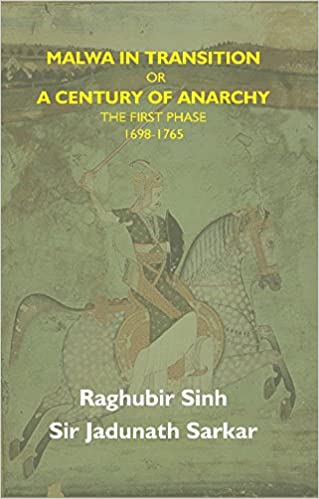
Malwa in Transition, Raghubir Sinh’s most well-known work.
Malwa in Transition or A Century of Anarchy tells the story of an extinction of identity — in this case the identity of Malwa — in the eighteenth century. For Sinh the eighteenth century apart from being a century of anarchy was also a ‘century of revolutions’ as the ‘social and cultural map of India was completely changed’ and ‘many an old political entity was wiped off from the map of India’. This view was deeply embedded in Sinh’s mind and repeatedly recurs both in his historical works as also in his future activities as a politician and public intellectual. In Sinh’s treatment, the anarchy of the eighteenth century meant that his home region lost out in political, cultural and military terms and this was entirely on account of the Marathas. Local Malwa reaction, and especially from the leading Rajput families, to the Marathas was that they appeared ‘more as enemies than as friends’. We will engage in greater length with this perspective and how it was to interface with the views of Sardesai on Maratha expansion and Sarkar on Mughal decline.
Malwa in Transition or A Century of Anarchy tells the story of an extinction of identity — in this case the identity of Malwa — in the eighteenth century. For Sinh the eighteenth century apart from being a century of anarchy was also a ‘century of revolutions’ as the ‘social and cultural map of India was completely changed’ and ‘many an old political entity was wiped off from the map of India’. This view was deeply embedded in Sinh’s mind and repeatedly recurs both in his historical works as also in his future activities as a politician and public intellectual.
Building a Research Library
Even as Malwa in Transition was being researched and written, other facets of the Sarkar—Sinh relationship had also developed: Sarkar acting as a mentor in the collection of books and manuscripts for Sinh’s private library (which also supplemented Sarkar’s and Sardesai’s own historical research), and secondly, Sinh as an ally in hunting for and securing manuscript sources on Maratha and Rajput history from individuals and families reluctant to part with them. If in the initial years of the Sarkar—Sinh relationship we see much more of the guide and doctoral student at work, clearly the other aspects were as important virtually from the start: ‘You have my best wishes in your endeavour to build up an original and authentic history of Malwa in the 18th century … this will be a greater achievement than winning doctorate.’
And:
I am equally pleased to learn of your enthusiastic and judicious acquisition of rare books and still more precious Persian MSS … I can visualise a day when you will find that your library has grown so large and useful to scholars that you will move it from your residential palace to a building of easier access to the public.
In the years following the publishing of Malwa in Transition, Sinh established himself as a leading historian of Malwa and Rajasthan in his own right. In the Poona Residency Records series, of which Sarkar and Sardesai were the general editors, Sinh edited the Selections from Sir C.W. Malet’s Letter Book 1780–84 (1940), Daulat Rao Sindhia and North Indian Affairs 1800– 1803 (1943) and The Treaty of Bassein and the Anglo–Maratha War in Deccan 1802–04 (1951). Soon after Malwa in Transition but different in scope and intent was a full length study titled Indian States and the New Regime (1938) which addressed, as we shall see, the issues of a future federal India and the role the princely states could play in it. Through the 1930s he worked as a judge in the Sitamau high court and in other administrative capacities in the state administration. Service in the army during the war years added another dimension to Sinh’s public duties.
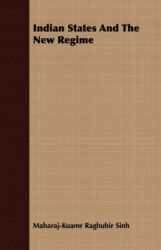
Indian States and the new regime.
With Independence, the claims of public life became stronger. Yet, the pull of history remained. The Sitamau library expanding from a small personal collection was now a major centre for research in its own right and in 1949 Sinh published a descriptive list or catalogue of its main holdings. The kernel of this was a presentation Sinh had made at the famous Kamshet conference in 1938 at Sarkar’s suggestion. Sarkar had then written to Sinh: ‘A small list (say, 8 or 12 pages) of your Persian MSS and Photostat acquisition would be well appreciated at Kamshet and though it must not be regarded as a final descriptive catalogue, it would add greatly to the value of your speech there.’
With Independence, the claims of public life became stronger. Yet, the pull of history remained. The Sitamau library expanding from a small personal collection was now a major centre for research in its own right and in 1949 Sinh published a descriptive list or catalogue of its main holdings. The kernel of this was a presentation Sinh had made at the famous Kamshet conference in 1938 at Sarkar’s suggestion.
The 1949 detailed catalogue had a glowing Foreword by Jadunath Sarkar. ‘The creation of this library,’ he wrote, ‘is due to the patriotic zeal, foresight, and persistence of an enlightened prince.’ Sarkar explained the reason behind Sinh’s venture:
The Raghubir Library now filled this gap. It was, Sarkar wrote:
Sarkar had been a partner in the growth of this library and remained so till his death. The following letter with all its detailed instructions is only one of many.
I have just secured through an ex–pupil of mine in Bihar, an imperfect MS of the letters of Ahmad Shah Abdali to Sawai Madho Singh of Jaipur. Please set your best munshi immediately to copy the leaves marked in blue pencil 1 to 34 on one side of the paper.At the end of the folio 34 back, leave the rest of the page of the copy blank as there is a gap here.
Then on a new sheet start copying the two folios marked 36 and 37 — in all 73 pages. (To be copied only 71 pages not 73, because folio 35 is a blank.)
Please send the original back to me with the copy made at Sitamau and after taking notes I shall return the copy to your library.
Kindly keep it a secret from the Jaipur Darbar (and indeed from all other people) that I have secured these records of their ancestor’s dealings with Abdali. Very likely they have lost the originals.
The letters in question related to 1759—61 and one may therefore well wonder whether the emphasis on secrecy came from an exaggerated sense of self–importance or an excessive caution. But equally, perhaps, given the sensitivities at play — which both Sinh and Sarkar were conscious of — the caution was not entirely misplaced. The letters show the ruler of Jaipur, Madho Singh, more concerned about evicting the Marathas and reducing their influence from his territory and willing to do what he could in the matter in concert with the Afghans led by Ahmad Shah Abdali. That the historical conjuncture in which this correspondence took place was before and after the battle of Panipat when the Marathas were defeated added to their significance. The caution had, therefore, some basis.
Sarkar explained the reason behind Sinh’s venture: “The oldest, completest, and best–transcribed copies of most Persian histories and State–papers of the Muslim period are preserved in the public libraries of Europe, and our patriotism naturally feels hurt at so many of our best historical material having gone out of our country.”… The Raghubir Library now filled this gap.
But there is also — amidst the talk of sources, manuscripts and historical personages — regular and detailed practical advice to Sinh on his growing library:
In 1937–38, Sinh introduced a technological leap in the research culture of the time with its reliance on copying of manuscript sources by hand, engaging paid copyists and clerks. Sinh recollected later:
From 1937–38 microfilms were in use which were cheaper. … I began corresponding with England and read in a newspaper that Kodak had introduced a special amplifier called Recordek to read microfilms. I wrote to the Kodak people in Bombay that I wanted to buy a Recordek. They replied that they did not know what it was and would get in touch with suppliers in England. The Recordek reached Sitamau in Nov–Dec 1938.
Evidently Sinh had consulted Sarkar earlier for we have this excited letter of October 1937: ‘What you say about micro– filming has thrilled me. We can now get all that we need for our historical workshop, at a cost within our means.’
The microfilm reader in Sitamau is believed to be the first in use in India. A decade later this quantum leap still fascinated Sarkar and in an introduction to the handbook on the Sitamau Library we have the following description:
The discovery of the possibility of photographing records and then being able to store them on microfilm or take copies for use in case microfilms were not available opened up many possibilities. The research by Sarkar and Sardesai in the Peshwa Daftar and the Poona Residency Records and their familiarity with this archive meant that with a microfilm reader available in Sitamau, records in Poona could be filmed and then transferred to Sitamau. We see a somewhat unusual enterprise now emerging. The good offices of Sarkar and Sardesai meant that Sinh was able to get the government authorities concerned to approve the filming of selected records in the Poona Archives.
The discovery of the possibility of photographing records and then being able to store them on microfilm or take copies for use in case microfilms were not available opened up many possibilities. The research by Sarkar and Sardesai in the Peshwa Daftar and the Poona Residency Records and their familiarity with this archive meant that with a microfilm reader available in Sitamau, records in Poona could be filmed and then transferred to Sitamau. We see a somewhat unusual enterprise now emerging.
This was easier said than done since the process involved the documents being physically sent to another government office — the Government Photo Registry Office in Poona — to be filmed there and thereafter the microfilms being sent by railway parcel to Sitamau. That at least one of Sardesai’s former assistants and a historian in his own right, V.G. Dighe, was employed or working at the Poona Archives, made the logistical work of separating the documents to be filmed and then sent to the Photo Registry Office easier. Even with Sarkar’s full help in terms of getting the necessary permissions, the fact that this task could be carried out with two government establishments coordinating and cooperating with each other to see the task to fulfilment is testimony to Sinh’s own persistence and powers of persuasion as also his commitment to the task by investing the not inconsiderable sums required.
A thick file in Sitamau in the Raghubir Library is a silent witness to these efforts as it shows a long and protracted correspondence for over a decade with the Poona Archives and the Photo Registry Office. The documents chosen for filming were the Persian records in the archives and comprised a mass of papers including newsletters (akhbarat) sent to the British resident in Poona during the period 1796–1817. In all, the work involved some 15,000 exposures and its scale was further compounded with wartime shortages of film, paper, equipment, etc. The task in brief is a classic illustration of how a new technology could be successfully applied in an environment, prima facie adverse.
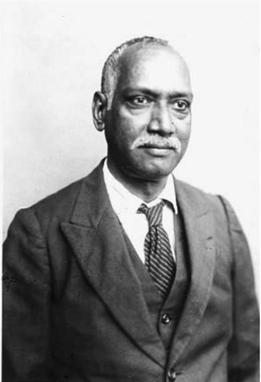
Jadunath Sarkar
From the 1940s onwards Sardesai’s often poor health and concerns about the fate of his own not inconsiderable library of books and records after his death led Sarkar to explore the possibility of the Sitamau Library being the final custodian of the Sardesai collection. We have this letter to Sinh in March 1948:
And a little later:
But there were other bidders and in particular the Government of Bombay. A little over a year later Sarkar cautioned in a note marked ‘Confidential’:
The desire of the owner of the Maratha historical library at Kamshet is to sell it to the highest bidder and hand over the price money to the School at Kamshet as a part of its endowment fund. Dr P.M. Joshi will bid anything to get it. Govt. money ‘has no father or mother’.It would not be advisable for the owner of the Raghubir Library to spend recklessly at this auction — as there are more pressing demands — rare old Eng. Books yet to be acquired
Raghubir Sinh had, in fact, quickly acquired a dual role in Sarkar’s and by extension Sardesai’s life. He was the younger colleague, and student, to be guided, encouraged and treasured. Yet Sinh as scion of a princely state, howsoever small, also fulfilled another role. He, in building up his own research collection and library, had resources, access and connections that neither Sarkar nor Sardesai could match to acquire or have copied manuscripts that would be valuable to their own research.
Raghubir Sinh had, in fact, quickly acquired a dual role in Sarkar’s and by extension Sardesai’s life. He was the younger colleague, and student, to be guided, encouraged and treasured. Yet Sinh as scion of a princely state, howsoever small, also fulfilled another role. He, in building up his own research collection and library, had resources, access and connections that neither Sarkar nor Sardesai could match to acquire or have copied manuscripts that would be valuable to their own research.
Secondly, with regard to Sinh’s dual role, by reason of his birth alone, Sinh had an intimacy with Rajput history and with the Rajput—Maratha interface which made him invaluable for Sarkar’s and Sardesai’s own research. Being a part of the fraternity of the ruling princes of central India meant also a close relationship and in some cases even friendship with the ruling houses of princely states such as Scindia, Jodhpur, Kota, Jaipur, Indore, etc., — the history of each of which figured substantively in Sarkar’s major research work of the 1930s and 1940s, namely, the Fall of the Mughal Empire. A letter of February 1938 from Sarkar to Sardesai illustrates this role and brings out an almost paternal pride with which it was regarded:
Dr Raghubir Sinh when on a visit to Gwalior at the end of January last at the invitation of Maharajah Sindhia, had had a talk with Sir Manubhai, who promised to take steps in the matter of the Meenavali Daftar. The Maharajkumar adds, ‘I made a casual reference to the matter while talking to Maharaj Sindhia also … I did not talk (at length) otherwise it would have touched Sir Manubhai whose cooperation is most essential just now.’ You mark the young Diplomat!!!
Raghubir Sinh had, in fact, direct access to a vast corpus of Rajput history which could illustrate and animate the Rajput— Maratha interface in the late eighteenth century:
Sarkar wrote in September 1937:
Sinh was in fact a full–fledged member of the circle extracting and unearthing manuscripts and Sarkar had often the role of the equally enthusiastic researcher but also a more careful older voice of caution. A letter to Sinh in January 1941 says:
But in other cases, even Sarkar, normally a hard bargainer, realized the need for expedition as in this letter of August 1938:
…with regard to Sinh’s dual role, by reason of his birth alone, Sinh had an intimacy with Rajput history and with the Rajput—Maratha interface which made him invaluable for Sarkar’s and Sardesai’s own research. Being a part of the fraternity of the ruling princes of central India meant also a close relationship and in some cases even friendship with the ruling houses of princely states such as Scindia, Jodhpur, Kota, Jaipur, Indore, etc., — the history of each of which figured substantively in Sarkar’s major research work of the 1930s and 1940s, namely, the Fall of the Mughal Empire.
A Supportive Fraternity of History
Following the award of the DLitt. for ‘Malwa in Transition’ we find Sarkar trying to refocus Raghubir Sinh’s next research interest on Mirza Rajah Jai Singh:
Sarkar’s recommendation followed: ‘You should master the Persian language (historical prose only) sufficiently to make yourself independent … and to be able to pick information out of MSS directly without having to wait for their being transcribed and translated.’ In January 1937, Sarkar pressed both points again — learning Persian, and ‘I anticipate that the career of Mirza Rajah Jai Singh will fascinate you so much that you will concentrate on him and, most probably continue the study of the dynasty of Amber up to 1698 and forget for a time your beloved Malwa.’
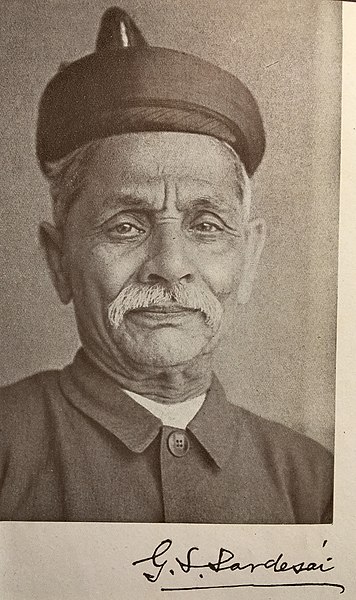
GS Sardesai.
While this particular idea does not appear to have generated sufficient enthusiasm in Sinh, Sarkar had in fact put his own reputation in getting him acknowledged as a major historian.
Sarkar suggested that Sinh buy the letter book of Charles Malet for the period 1780–84 from a rare book and transcript dealer in London who had put it up for sale. These letters would be a valuable supplement to the documents relating to Malet included in the Poona Residency Records series. Sarkar’s practical advice to Sinh was that since these letters were not available in the Poona records in editing the Malet letter book ‘… you will not be called upon to visit Poona’.
In case Sinh was unsuccessful in securing the letter book, Sarkar outlined his backup plan: ‘I shall arrange with Sardesai to give you the editing work of some other volumes of the Poona Residency Records.’ In the event Sinh’s attempt at securing the manuscript was successful. We have Sarkar writing to Sinh of how ‘thrilled’ he was at the news of ‘this great victory’ which he attributed to Sinh having sent a cable to secure the document (which also Sarkar had not just advised but also sent a draft of the telegram).
Sarkar’s recommendation followed: ‘You should master the Persian language (historical prose only) sufficiently to make yourself independent … and to be able to pick information out of MSS directly without having to wait for their being transcribed and translated.’ In January 1937, Sarkar pressed both points again — learning Persian, and ‘I anticipate that the career of Mirza Rajah Jai Singh will fascinate you so much that you will concentrate on him and, most probably continue the study of the dynasty of Amber up to 1698 and forget for a time your beloved Malwa.’
In the preparation of the edited volume of Malet’s letters Sarkar’s instructions were detailed and precise: ‘You will have to consult Sardesai on the details of Maratha affairs during the four or five years covered in it.’ And:
And later:
Sarkar’s efforts to establish Sinh as a historian of repute in his own right in fact were many. He arranged for Raghubir Sinh to speak at the 1937 session of the Indian Historical Records Commission and present in summary form the contents of Malet’s letter book. Similarly, in September 1938 before the Kamshet meeting we have him advising Sinh that a report on his manuscript collection would ‘add greatly to the value of your speech’. Selections from Sir C.W. Malet’s Letter Book 1780–1784 appeared in 1940 and it is listed as a supplementary volume in the Poona Residency Records series. By mid–1939 Sarkar and Sardesai decided that the responsibility of editing a second volume in the Poona Residency Correspondence could also be given to Sinh. By this time the Malet letter book volume was nearing finalization — and Sinh was assigned the period 1800–03. The volume finally formed Vol. IX of the Poona Residency Correspondence with the title ‘Daulat Rao Sindhia and North Indian Affairs 1800–1803’ and was published in 1943. A third volume forming Volume X in the Poona Residency Correspondence collection was also edited by Sinh and published in 1951 as The Treaty of Bassein and the Anglo Maratha War in Deccan 1802–1804.
Raghubir Sinh, however, continued to be associated with public issues to a far greater extent than either G.S. Sardesai or J.N. Sarkar or the other historians and scholars in their circle. As heir to the throne of a princely state, howsoever small, it was inevitable that Raghubir Sinh would have a public life outside history, notwithstanding his passion for historical research and studies. His life as a historian, in fact, followed a complementary and parallel track of his role as the heir. Having a law degree, he had been appointed a judge of the high court of Sitamau — a post he held from 1932 till 1940. He was, as heir, also assigned the responsibility over other departments of Sitamau’s administration — revenue, education, health and others, apart from being associated with the Chamber of Princes.
Sarkar’s efforts to establish Sinh as a historian of repute in his own right in fact were many. He arranged for Raghubir Sinh to speak at the 1937 session of the Indian Historical Records Commission and present in summary form the contents of Malet’s letter book. Similarly, in September 1938 before the Kamshet meeting we have him advising Sinh that a report on his manuscript collection would ‘add greatly to the value of your speech’.
His participation in the sessions of the Chamber of Princes led to an intervention on the issue of princely states which should be seen in the context of the wider political debate then under way in India. The intervention was in the form of a book, Indian States and the New Regime, published in 1938 and is an early attempt to address issues arising from the 1935 Government of India Act for a future independent and federal India and the role of the princely states in such a federation. The book had a forward by Sir C.P. Ramaswamy Iyer, then dewan of Travancore a and who was in the eyes of many a virtual institution of law and politics of early twentieth century India.
Ramaswamy Iyer wrote: ‘It is a sign of the times that the heir apparent of the Sitamau State in Central India, should not only win academical distinctions and a doctorate for his writings on historical topics but should publish a comprehensive and well–conceived monograph dealing with the history of the relations of the Indian states with the Paramount Power.’
The reason for embarking on this treatise — the book runs into some 500 pages — were stated by Raghubir Sinh as: ‘The tide of democracy is rising with an added force: it would not be very long before this rushing tide will overflow the bounds that separate the Indian States from British India and will flood the Indian States as well.’
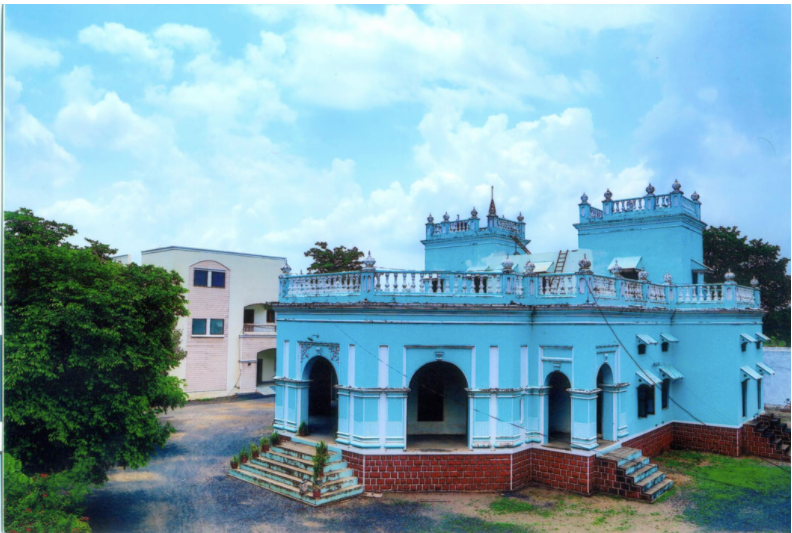
Raghubir Library and Research Institute. [Credits: natnagarsitamau.com]
The answer lay for Raghubir Sinh in a federal arrangement requiring cooperation between the princely states. While this process was assisted by the creation of a Chamber of Princes, it remained weak and faltering on account of differences between the larger and the smaller princely states. A reviewer in International Affairs, the journal of the Royal Institute of International Affairs, pointed out ‘… the author found fault with “small” states though he himself is connected with a “small” state’.
His participation in the sessions of the Chamber of Princes led to an intervention on the issue of princely states which should be seen in the context of the wider political debate then under way in India. The intervention was in the form of a book, Indian States and the New Regime, published in 1938 and is an early attempt to address issues arising from the 1935 Government of India Act for a future independent and federal India and the role of the princely states in such a federation.
For scholars as driven as Sardesai and Sarkar, Raghubir Sinh’s public commitments, howsoever worthy, were nevertheless also costly distractions from historical research. While Sarkar is more forgiving of his protégé and favourite student, Sardesai often was not. We have a letter he wrote to Sarkar in January 1940 with regard to the Malet Letter Book that Raghubir Sinh was editing:
Sarkar’s defence of his protégé is also characteristic:
During the war years Raghubir Sinh joined the British Indian Army — not uncommon for princes. He rose to the rank of major before resigning his commission in 1945. He did not see active service and was posted at Peshawar and Madras while in uniform. Decades later Raghubir Sinh reminisced that he was prompted to join the army to learn something new: understanding military tactics would help in understanding history. Sarkar’s letter to Sinh on the latter’s joining the army also merits to be quoted:
The correspondence with Sarkar continued through this period and with it a steady stream of proofs of the Poona Residency Correspondence, copies of manuscripts and suggestions of books and papers to acquire for Raghubir Sinh’s now growing library.
For scholars as driven as Sardesai and Sarkar, Raghubir Sinh’s public commitments, howsoever worthy, were nevertheless also costly distractions from historical research. While Sarkar is more forgiving of his protégé and favourite student, Sardesai often was not.
For instance, Sarkar wrote in September 1943:
And in April 1944:
Over time, as the relationship matured, we see, as in the case of Sardesai and Sarkar, concern and affection becoming more visible in the Sinh—Sarkar correspondence. The younger man’s obvious esteem and regard are made evident in ways that move the now ageing and grief–stricken Sarkar greatly. Writing about the Hindi edition of A Short History of Aurangzeb which Sinh was helping prepare, Sarkar wrote in June 1950:
In fact, as the two masters aged and grew more frail their students had formed a protective cloak around them. We have the following letter from Qanungo to Raghubir Sinh in January 1957:
And again a few weeks later in in March 1957:
Through the early and mid–1950s, although Sarkar had been regularly in correspondence with Sinh the letters of the last few years show a gradual and unmistakable role reversal as the former student now becomes a principal support. The daily grind of frailty and old age, worries about his family and further tragedies are a prominent part of the letters that Sarkar writes.
Through the early and mid–1950s, although Sarkar had been regularly in correspondence with Sinh the letters of the last few years show a gradual and unmistakable role reversal as the former student now becomes a principal support. The daily grind of frailty and old age, worries about his family and further tragedies are a prominent part of the letters that Sarkar writes.
In September 1955: ‘After five years of decline my sole surviving son … left us. His agonies have ended but his mother’s know no consolation.’
And in April 1957:
And in addition to his wife’s and his own ill health there is the ever–present concern regarding Sardesai:
But despite all these preoccupations, the engagement over history and straightening the most obscure historical detail remains a priority. Thus, we have Sarkar writing to Raghubir Sinh in November 1955 again with regard to the battle of Dharmat:
In question was the date of the battle of Dharmat, important as we shall see both for Sardesai and Sinh, in which Aurangzeb had secured his first victory against Shah Jahan and Dara Shukoh’s armies led by Jaswant Singh, the Raja of Jodhpur. One of Jaswant Singh’s principal commanders was Raghubir Sinh’s ancestor Ratan Singh, the ruler of Ratlam who was killed in this battle.
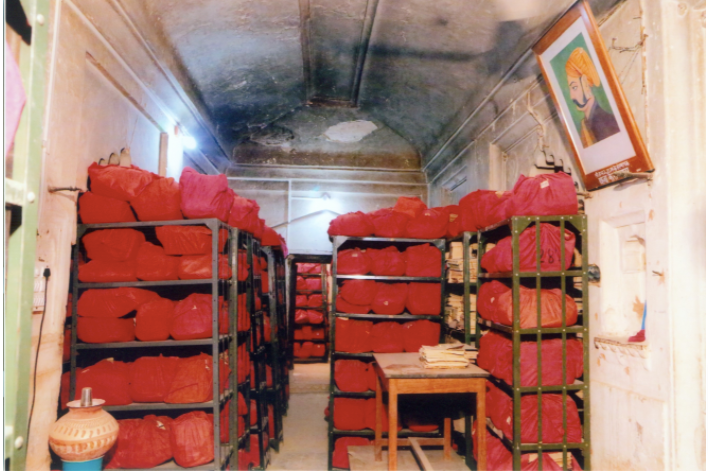
The Raghubir Library is a treasure trove of rare manuscripts and documents. [Credits: natnagarsitamau.com]
And again: ‘… for the past week or so, I was enjoying the company of these elders who are no more while reading the proofs … Oh, what a grand company it was and what an enjoyable experience was mine.’
Contacts between the circle of historians around G.S. Sardesai and Jadunath Sarkar continued after their mentors’ death. S.R. Tikekar, Sardesai’s devoted associate, and Raghubir Sinh in particular wrote regularly to each other for over two decades — about old times and the masters, gossiping occasionally about the new history establishment that now called the shots but also occasionally discussing possible new projects.
Tikekar’s letters bring out all the difficulties of working with the government in a project such as this even though he himself worked in the Maharashtra State Archives. However, when the work appeared in 1975 it enthused both Tikekar and Sinh to think of publishing Sarkar’s letters to his other students. The Tikekar—Sinh correspondence also occasionally dissected specific occasions of the masters’ lives. On one occasion, while the editing of Making of a Princely Historian was in progress, Tikekar inquired whether Sarkar had written to Sinh after Mahatma Gandhi’s assassination and, if not, the reason for this. Sardesai had then written to Sarkar on 2 February 1948: ‘The wicked act of the Mahatma’s murder will remain a standing disgrace to the Brahmans of Maharashtra.’ With regard to the absence of any reference to the assassination in Sarkar’s letters to himself, Sinh wrote:
Whatever be the cause, I feel that he was in no mood to comment or soliloquize on the tragic event. I feel that the partition of the country, separation of his own hometown and district from the Indian dominion, his dear ones and his own property thus going into the foreign land must have only aggrieved his feelings which were sufficiently scarred by the sad death of his elder son, A.N. Sarkar, during the pre–partition riots in 1947. Hence this ominous silence.
He also related the concerns Sarkar may have had about his (Sinh’s) future:
Raghubir Sinh and Tikekar also relieved in their own letters many of the regional parochialisms their mentors had experienced. After The Making of a Princely Historian was published, we have Tikekar writing:
Raghubir Sinh’s reply also underwrote the long afterlife of older rivalries: ‘These bloody Poona Pandits must have been quite shocked and now (are) busy cursing you with all their heart.’ And a few weeks later Tikekar wrote about other fronts: ‘What’s the princely reaction that you have received so far? I don’t know how the Bengali gang is going to react to the publication.’
The Bengali gang, Sinh replied, would welcome the book although many ‘… who think highly of themselves without much real worth will necessarily be very jealous’ and there would be others who would not be happy ‘… as it means a propaganda for a former prince’. The letter concluded somewhat characteristically: ‘This is all your mischief, for which I shall remain grateful.’
Tikekar’s letters bring out all the difficulties of working with the government in a project such as this even though he himself worked in the Maharashtra State Archives. However, when the work appeared in 1975 it enthused both Tikekar and Sinh to think of publishing Sarkar’s letters to his other students. The Tikekar—Sinh correspondence also occasionally dissected specific occasions of the masters’ lives
Raghubir Sinh was to remain a committed letter writer all his life. Apart from the correspondence with Sarkar, at least two other collections of his letters have been published and these too underline lifelong interest in Rajput and Malwa history, literature and, most of all, authentic manuscripts.
A Historian in Public Affairs
At the same time Raghubir Sinh himself was now moving on to a larger national stage. In May 1952 he was nominated a member of the Upper House — the Rajya Sabha — of the Indian parliament and remained so up to 1964. In 1951 he published two works in Hindi, Ratlam Ka Pratham Rajya (The First Kingdom of Ratlam) and Poorva Adhunik Rajasthan (Pre–Modern Rajasthan) and we will engage with both these works later. This was also the year in which the Hindi translation of Sarkar’s abridged version of Aurangzeb was published on which Sinh had worked so hard and which had so touched Sarkar. Later in his life he was to write popular but accurate and well–researched works in Hindi such as Maharana Pratap (1973) and Durgadas Rathor (1975). Revised and updated works on Maharana Pratap appeared in 1980 and 1983.89 As a member of parliament, Sinh is described as having followed in particular issues such as culture, literature and Hindi as the national language.
Writing history in Hindi — rigorously researched and lucidly written — had become and was to remain a priority for Sinh. The commitment to Hindi led to an unusual situation at the 1952 session in Gwalior of the Indian History Congress where Sinh had been invited to deliver the presidential address to the Local History Section. Sinh wanted to ‘… deliver this address of mine in Hindi, the national language of our beloved motherland’. Although this ‘… would have been a real departure from the past practice’, Sinh said he was confident ‘that all those interested in the history of the land of Bhartrihari and Bhoj, even though coming from the distant non–Hindi speaking regions, know Sanskrit sufficiently enough to understand such an address in Hindi’. Sinh, as it happened, was persuaded to do otherwise and address the session in English although he issued a Hindi version of his address as he felt ‘… he must speak to the people of my home province only in Hindi’.
In Sinh’s engagement with public affairs at the national stage we see a clearer, sharper focus on what had been earlier his principal research interest: the preservation of regional identity, its integration into a larger national edifice and the writing of objective history to smoothen the interface between the regional and the national. In his 1952 address to the Local History Section of the Indian History Congress he underlined that ‘… in a vast country like India, a really complete and fully comprehensive national history cannot be prepared without the help of the authoritative histories of the different provinces, as these regional histories provide the solid foundations of the national history’.
In Sinh’s engagement with public affairs at the national stage we see a clearer, sharper focus on what had been earlier his principal research interest: the preservation of regional identity, its integration into a larger national edifice and the writing of objective history to smoothen the interface between the regional and the national.
If in the early years after Independence, the regeneration and reconstruction of India, was ‘the primary concern’, history also pointed to the danger of centrifugal tendencies:
For independent India the answer, in Sinh’s view, could only be constituting the regional units so that ‘… they provide for a solid foundation… as the integrant parts of a composite body politic’. This was essential because ‘the Constitution of India’, Sinh asserted, ‘cannot by itself perpetuate the Union.’
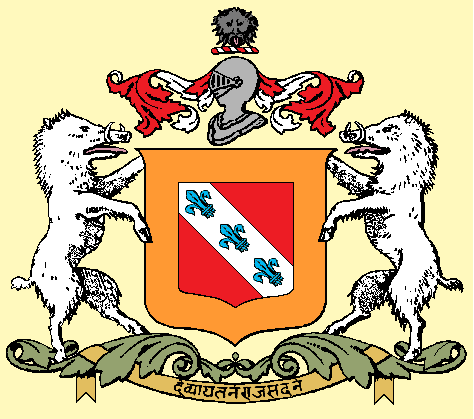
Sitamau State Coat of Arms.
This argument was clearly derived from his research on Malwa’s history. Malwa’s identity had disintegrated in parallel with the fall of the Mughal Empire and by the time of its transfer to the Marathas it was parcelled into a number of principalities of Rajput rajas, Muslim nawabs and Maratha warlords. The Peshwa ‘generally gave their generals more than one non–contiguous areas interspersed with the lands ruled by others … [and this] cut deep at the very roots of the cultural homogeneity of Malwa’. The British may have established peace and security but ‘… they failed to restore to Malwa its political unity and thus the centuries–old historical continuity of the region was completely cut off and lost in the maze of the political boundaries of the different states into which it was divided’. For a historian, therefore, the task was to supersede the dynastic and family–oriented multiple histories emanating from Malwa ‘through which family rivalries, dynastic jealousies, racial animosities and interstate antagonisms … gained added importance’.
In these circumstances, the priorities, for Sinh at least, was to expedite the rise and growth of a ‘new regional outlook’ that would supersede the dynastic. For which it was essential that ‘… regional history be compulsorily taught even at lowest classes of the schools and encouraged in later years of college studies.’ Regional history would be the building block for national history just as regional identities would reinforce the nation. It is easy to see the themes that predominated in Malwa in Transition and the non–dynastic treatment of political history that characterized his 1951 book Poorva Adhunik Rajasthan informing these views.
But most of all Independence meant an opportunity to undo the historical wrong done to Malwa in the eighteenth century with the collapse of the Mughals and Maratha expansion. We get occasional glimpses of how much the subject of Malwa engaged Sinh’s attention in the post–1947 period from occasional comments in letters of Sarkar. In March 1948 he wrote to Sinh: ‘The Union of Malwa when accomplished will heal a long–standing grievous wound in the body of mother India.’
In these circumstances, the priorities, for Sinh at least, was to expedite the rise and growth of a ‘new regional outlook’ that would supersede the dynastic. For which it was essential that ‘… regional history be compulsorily taught even at lowest classes of the schools and encouraged in later years of college studies.’ Regional history would be the building block for national history just as regional identities would reinforce the nation.
Sinh’s policy takeaway from his research and understanding of regional identity and history, however, comes through most strongly in a long memorandum he submitted to the Indian States Reorganisation Commission in 1954 titled’. ‘The Reorganisation of the States of Madhya Bharat.’
Madhya Bharat had existed as an improvised administrative unit since Independence comprising the large princely states of Gwalior and Indore along with some dozen and a half smaller princely states. Sinh’s memorandum is a compression of the administrative history of this region under the Mughals, the Maratha and the British as equally an analysis of the linguistic and cultural diversity within the region. In the writing of the memorandum and in framing its recommendations there is very evidently a reliance on his understanding of the forces and factors he had identified as a historian of Malwa.
For instance, writing of contemporary administrative problems and difficulties, Sinh said: ‘The first and foremost of all such problems is the very well–known rivalry and tussle between the cities of Indore and Gwalior. Even though originally a direct result of the dynastic jealousies and state rivalries between those of Sindhia and Holkar, it has continued unabated…’ The memorandum, in fact, is deeply permeated by Sinh’s study of the late eighteenth century in Malwa in Transition and his recommendation to the States Reorganisation Commission emerge out of his view of the rupture in the history of Malwa in the eighteenth century.
The substance of this submission was a demand for a separate state of Malwa to replace the administrative expediency adopted after 1947 of accumulating disparate areas from different princely states into Madhya Bharat, which was based on the ‘… old pattern originally laid down by the British rulers of the country during the latter half of the XIXth century’. Madhya Bharat as constituted after 1947 was based on boundaries of princely states ‘… finalised and duly demarcated by Sir John Malcolm’. This, therefore, meant that predispositions of the British — ‘very much carried away by their own supposed notions of dynastic affinities or historical continuity’ — were not corrected and needed to be rationalized. Sinh gave numerous examples of the irrationality and arbitrary approach by which small princely states were allocated to Madhya Bharat or to the Rajputana Agency later to be reconstituted as Rajasthan.
The memorandum could only have been written by a historian of Malwa and, in fact, it is the political argument emerging from Malwa in Transition. His argument in brief was that Malwa’s ancient and well–defined administrative and cultural unity faced erosion with the decline of the Mughals and the rise of the Marathas. The failure of the latter to create a viable central structure in Poona meant that Malwa became the theatre of a bitter Scindia—Holkar rivalry and from the end of the eighteenth century ‘… commenced a period of serious unrest and unmitigated rivalry’ and ‘by 1817 the disorganisation in Malwa had reached a climax’. British intervention in central India thereafter led to a ‘… most amazing and quite a difficult jigsaw puzzle’ — in brief a further dilution of Malwa’s identity.
His argument in brief was that Malwa’s ancient and well–defined administrative and cultural unity faced erosion with the decline of the Mughals and the rise of the Marathas. The failure of the latter to create a viable central structure in Poona meant that Malwa became the theatre of a bitter Scindia—Holkar rivalry and from the end of the eighteenth century ‘… commenced a period of serious unrest and unmitigated rivalry’ and ‘by 1817 the disorganisation in Malwa had reached a climax’. British intervention in central India thereafter led to a ‘… most amazing and quite a difficult jigsaw puzzle’ — in brief a further dilution of Malwa’s identity.
The thrust of Raghubir Sinh’s submission was to radically redraw boundaries of Madhya Bharat and re–establish Malwa’s old identity. The evidence he presented was administrative, linguistic and political — but this was emphatically most of all a historian’s argument. ‘Since very ancient times the Malwa region has figured very prominently in Indian history. Its well–known chief town, Ujjain, had become even in Buddhistic times an important seat of Indo–Aryan culture.
Raghubir Sinh’s short point was that it was only under the Marathas that Malwa’s political and administrative unity was ‘completely shattered’. This ‘could not be duly restored even by the British’. However, in the more recent past with education, growth in knowledge about their past, growth of cultural consciousness and, above all, rapid political awakening, Malwa’s own traditions and regional unity had become live factors and ‘… must necessarily be duly taken care of in any scheme for the reorganization of the existing states in the region’.
The recommendation he made, in brief, was for Madhya Bharat to be reconstituted as Malwa by a process of significant subtractions and additions to its territory. The significant subtraction was detaching Gwalior state from the new state. The most significant addition was adding most of the old princely state of Bhopal to it as also the Hoshangabad and Nimar districts of the Central Provinces of British India. This restructuring and reorganization of Madhya Bharat will mean that ‘… the new state of Malwa will most definitely be a very great tower of strength to the Indian Union and a really powerful source of inspiration to the Indian nation’.
Raghubir Sinh’s enthusiasm for a new state of Malwa was, however, not widely shared and his oral testimony before the States Reorganisation Commission saw some close cross– questioning of his memorandum by an unconvinced K.M. Panikkar, an accomplished historian and administrator and a member of the Commission. When, asked Panikkar, was Malwa last in existence? On receiving ‘1742’ in answer from Raghubir Sinh, Sardar Panikkar went on to say: ‘There is no mention of anything belonging to Malwa. From the historical point of view for the last 212 years there is no such thing. So, you want to make a case for Malwa today.’
Panikkar remained unconvinced and pointed to the larger concerns which obviously the Commission heeded — the financial viability of the state, the implications for future hydroelectric and irrigation projects on the Chambal and the Narmada, etc. That Sinh sounded, and was unconvincing, is not surprising: his argument was almost entirely a historical one. To Panikkar’s comment that Malwa had not existed now for over two centuries, Raghubir Sinh replied: ‘…certain traditions and certain things have gone on.’ To buttress his arrangement for Hoshangabad district being detached and included in Malwa he argued: ‘In Hoshangabad district there is a town named Seoni. To distinguish it from another town of same name, the former is called Seoni Malwa.’
Raghubir Sinh’s enthusiasm for a new state of Malwa was, however, not widely shared and his oral testimony before the States Reorganisation Commission saw some close cross– questioning of his memorandum by an unconvinced K.M. Panikkar… When, asked Panikkar, was Malwa last in existence? On receiving ‘1742’ in answer from Raghubir Sinh, Sardar Panikkar went on to say: ‘There is no mention of anything belonging to Malwa. From the historical point of view for the last 212 years there is no such thing. So, you want to make a case for Malwa today.’
As the hearing concluded, the sceptical Panikkar, however, had a final piece of advice for Raghubir Sinh:
What emerged from the States Reorganisation Commission was a giant Madhya Pradesh, literally the old Central Provinces — in which to the original British Central Provinces all the princely states of the region were added — Bhopal, Gwalior, Indore and a host of smaller ones including Sitamau. If no separate state of Malwa was then or has since been created, it remained nevertheless central to Raghubir Sinh’s thought, and to this day the postal address of the institute he founded remains the one he had always used: Shree Natnagar Shodh Samsthan, Sitamau, Malwa.
After two terms as a member of parliament, from 1964 onwards he devoted himself to his principal priorities — history, research and the building up of his research library in Sitamau. The extent of Jadunath Sarkar’s and Sardesai’s influence is illustrated by his commitment to the finalizing of their incomplete projects, which he made his own and saw to some kind of fruition when old age and frailty had incapacitated and then removed his mentors. We shall touch on each of these later. Each was no less than a quest — pursued over decades — and animating, in the process, a shared friendship and love of history.
Family tragedies of the kind that had struck Sarkar and Sardesai did not spare him either. In 1967 a young son died tragically in a swimming accident within days of his marriage followed by the death of Sinh’s father. He chose then not to be the titular raja of Sitamau state and stepped aside in favour of his son. Till his death in February 1991, Sinh was active in research, editing and compiling of documents on Rajput, Maratha, Mughal and Malwa history. The library in Sitamau remained to the end his passion. An annual research conference held in its premises in his memory remains today a testimony of Sitamau’s prince who chose instead to be a historian.
This excerpt has been carried courtesy the permission of TCA Raghavan. You can buy History Men: Jadunath Sarkar, GS Sardesai, Raghubir Sinh and their Quest for India’s Past here.
ARCHIVE
Shivaji’s Achievement, Character and Place in History
-
Shivaji’s policy how far traditional
Shivaji’s State policy, like his administrative system, was not very new. From time immemorial it had been the aim of the typical Hindu king to set out early every autumn to “extend his kingdom’ at the expense of his neighbours. Indeed, the Sanskrit law-books lay down such a course as the necessary accomplishment of a true Kshatriya chief. (Manu. vii. 99-103, 182.) In more recent times it had also been the practice of the Muhammadan sovereigns in North India and the Deccan alike. But these conquerors justified their territorial aggrandisement by religious motives. According to the Quranic law, there cannot be peace between a Muhammadan king and his neighbouring “infidel” States. The latter are dar-ul-harb or legitimate seats of war, and it is the Muslim king’s duty to slay and plunder in them till they accept the true faith and become dar-ul-islam, after which they will become entitled to his protection.
The coincidence between Shivaji’s foreign policy and that of a Quranic sovereign is so complete that both the history of Shivaji by his courtier Krishnaji Anant and the Persian official history of Bijapur use exactly the same word, mulk-giri, to describe such raids into neighbouring countries as a regular political ideal. The only difference was that in theory at least, an orthodox Muslim king was bound to spare the other Muslim States in his path and not to spoil or shed the blood of true believers, while Shivaji (as well as the Peshwas after him) carried on his mulk-giri into all neighbouring States, Hindu no less than Islamic, and squeezed rich Hindus as mercilessly as he did Muhammadans. Then, again, the orthodox Islamic king, in theory at least, aimed at the annexation and conversion of the other States, so that after the short sharp agony of conquest was over those places enjoyed peace like the regular parts of his dominion. But the object of Shivaji’s military enterprises, unless his Court-historian Sabhasad has misrepresented it, was not annexation but mere plunder, or to quote his very words, “The Maratha forces should feed themselves at the expense of foreign countries for eight months every year, and levy blackmail.” (Sabh., 26.)
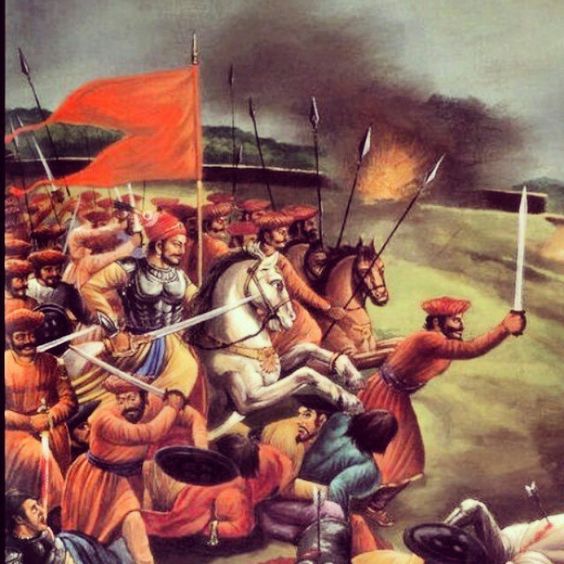
An artist’s representation of a Maratha attack
(“Instead of commencing with the removal of the existing government, and the general assumption of the whole authority to himself, a Maratha chieftain begins, by appearing at the season of harvest, and demanding a consideration for his forbearance in withholding the mischief he has it in his power to inflict. This visit is annually repeated, and the demand proportionally enhanced. Whatever is thus exacted is called the chauth, and the process of exaction a mulk-giri expedition.” (Prinsep’s History… of the Marquess of Hastings, i. 22.))
Thus, Shivaji’s power was exactly similar in origin and theory to the power of the Muslim States in India and elsewhere, and he only differed from them in the use of that power. Universal toleration and equal justice and protection were his distinctive features in the permanently occupied portion of his realm, as we have shown elsewhere.
The coincidence between Shivaji’s foreign policy and that of a Quranic sovereign is so complete that both the history of Shivaji by his courtier Krishnaji Anant and the Persian official history of Bijapur use exactly the same word, mulk-giri, to describe such raids into neighbouring countries as a regular political ideal. The only difference was that in theory at least, an orthodox Muslim king was bound to spare the other Muslim States in his path and not to spoil or shed the blood of true believers, while Shivaji (as well as the Peshwas after him) carried on his mulk-giri into all neighbouring States, Hindu no less than Islamic, and squeezed rich Hindus as mercilessly as he did Muhammadans. Then, again, the orthodox Islamic king, in theory at least, aimed at the annexation and conversion of the other States, so that after the short sharp agony of conquest was over those places enjoyed peace like the regular parts of his dominion.
-
Causes of Shivaji’s failure to build an enduring State
Why did Shivaji fail to create an enduring State? Why did the Maratha nation stop short of the final accomplishment of their union and dissolve before they had consolidated into an absolutely compact political body?
An obvious cause was, no doubt, the shortness of his reign, barely ten years after the final rupture with the Mughals in 1670. But this does not furnish the true explanation of his failure. It is doubtful if with a very much longer time at his disposal he could have averted the ruin which befell the Maratha State under the Peshwas, for the same moral canker was at work among his people in the 17th century as in the 18th. The first danger of the new Hindu kingdom established by him in the Deccan lay in the fact that the national glory and prosperity resulting from the victories of Shivaji and Baji Rao I created a reaction in favour of Hindu orthodoxy; it accentuated caste distinctions and ceremonial purity of daily rites which ran counter to the homogeneity and simplicity of the poor and politically depressed early Maratha society. Thus, his political success sapped the main foundation of that success.
In the security, power and wealth engendered by their independence, the Marathas of the 18th century forgot the past record of Muslim persecution; their social grades turned against each other. The Brahmans living east of the Sahyadri range despised those living west of it, the men of the hills despised their brethren of the plains, because they could now do so with impunity. The head of the State, though a Brahman, was despised by his Brahman servants belonging to other branches of the caste— because the first Peshwa’s great-grandfather’s great-grandfather had once been lower in society than the Desh Brahmans’ great-grandfathers’ great-grandfathers! While the Chitpavan Brahmans were waging social war with the Deshastha Brahmans, a bitter jealousy raged between the Brahman ministers and governors and the Kayastha secretaries. We have unmistakable traces of it as early as the reign of Shivaji. “Caste grows by fission.” It is antagonistic to national union. In proportion as Shivaji’s ideal of a Hindu swaraj was based on orthodoxy, it contained within itself the seed of its own death. As Rabindranath Tagore remarks :
“A temporary enthusiasm sweeps over the country and we imagine that it has been united; but the rents and holes in our body-social do their work secretly; we cannot retain any noble idea long.
“Shivaji aimed at preserving the rents; he wished to save from Mughal attack a Hindu society to which ceremonial distinctions and isolation of castes are the very breath of life. He wanted to make this heterogeneous society triumphant over all India! He wove ropes of sand; he attempted the impossible. It is beyond the power of any man, it is opposed to the divine law of the universe, to establish the swaraj of such a caste-ridden, isolated, internally-torn sect over a vast continent like India.”
(From his Rise and Fall of the Sikh Power, as translated by me in Modern Review, April 1911.)
The first danger of the new Hindu kingdom established by him in the Deccan lay in the fact that the national glory and prosperity resulting from the victories of Shivaji and Baji Rao I created a reaction in favour of Hindu orthodoxy; it accentuated caste distinctions and ceremonial purity of daily rites which ran counter to the homogeneity and simplicity of the poor and politically depressed early Maratha society. Thus, his political success sapped the main foundation of that success.
Shivaji and his father-in-law Gaikwar were Marathas, i.e., members of a despised caste. Before the rise of the national movement in the Deccan in the closing years of the 19th century, a Brahman of Maharashtra used to feel insulted if he was called a Maratha. “No,” he would reply with warmth, “I am a Dakshina Brahman.” Shivaji keenly felt his humiliation at the hands of the Brahmans to whose defence and prosperity he had devoted his life. Their insistence on treating him as a Shudra drove him into the arms of Balaji Avji, the leader of the Kayasthas, and another victim of Brahmanic pride. The Brahmans felt a professional jealousy for the intelligence and literary powers of the Kayasthas, who were their only rivals in education and Government service, and consoled themselves by declaring the Kayasthas a low caste not entitled to the Vedic rites and by proclaiming a social boycott of Balaji Avji who had ventured to invest his son with the sacred thread. Balaji naturally sympathised with his master and tried to raise him in social estimation by engaging Gaga Rhatta who “made Shivaji a pure Kshatriya”. The high-priest showed his gratitude to Balaji for his heavy retainer by writing a tract [or rather two] in which the Kayastha caste was glorified, but without convincing his contemporary Brahmans.
(Nor has he succeeded in convincing posterity. In 1916, Mr. Rajwade, a Brahman writer, published a denial of the Kayastha claims (Chaturtha Sam. Britta), on the occasion of editing this tract. He has provoked replies, one of which, Rajwade’s Gaga Bhatti by K. T. Gupte makes some attempt at reasoning and the use of evidence, while another, The Twanging of the Bow by K. S. Thakre, has the same tone as Milton’s Tetrachordon or Against Salmasius! This is happening in the 20th century, and yet Mr. Rajwade and Prof. Bijapurkar—who persistently treated Shivaji’s descendants at Kolhapur as Shudras—are nationalists, even Chauvinists. It was with a house so divided against itself that the Puna Brahmans of the 18th century hoped to found an all-Indian Maratha empire, and there are Puna Brahmans in the 20th century who believe that the hope failed only through the superior luck and cunning of the English!)
There was no attempt at well-thought-out organised communal improvement, spread of education, or unification of the people, either under Shivaji or under the Peshwas. The cohesion of the people in the Maratha State was not organic but artificial, accidental, and therefore precarious. It was solely dependent on the ruler’s extraordinary personality and disappeared when the country ceased to produce supermen among its rulers.
A Government of personal discretion is, by its very nature, uncertain. This uncertainty reacted fatally on the administration. However well-planned the machinery and rules might be, the actual conduct of the administration was marred by inefficiency, sudden changes, and official corruption, because nobody felt secure of his post or of the due appreciation of his merit. This has been the bane of all autocratic States in the East and the West alike, except where the autocrat has been a “hero as king” or where a high level of education, civilization and national spirit among the people has prevented the evil.
There was no attempt at well-thought-out organised communal improvement, spread of education, or unification of the people, either under Shivaji or under the Peshwas. The cohesion of the people in the Maratha State was not organic but artificial, accidental, and therefore precarious. It was solely dependent on the ruler’s extraordinary personality and disappeared when the country ceased to produce supermen among its rulers.
-
Hindrances to true nationality in Shivaji’s age
The society of Shivaji’s age and country was so different from our own that some straining of the historical imagination is necessary before we can understand the difficulties that he had to combat.
Land was the only stable thing in an ever-changing world subject to the appalling outbursts of nature’s forces, which swept away man and his handiwork, and the even more violent transformations of political revolution. But the new conquerors always left the land to the old peasant because he alone could till it in that age of sparse population, and they continued the revenue collection in the hands of the old hereditary middleman, because they alone knew the details of the locality and could ensure some payment from the land to a distant sovereign who would have found it impossible to collect his dues from each petty tiller of the soil directly. The offices in connection with land, therefore, tended to become hereditary and the contractor of revenue blossomed in time into a landowner with a permanent family claim to a portion of the yield of his village or district. Attachment to one’s ancestral land was the strongest passion in the age of little trade and small scale industries. I know of a Brahman family which migrated from the Ratnagiri district to Ahmadabad six generations ago and no longer owned an inch of land in their ancient home nor keep any business connection with it, and yet they have carefully preserved for two centuries the old title-deeds of their long-abandoned lands.
And in that age land rights were unsettled and perplexing by reason of the variety and complication of the personal claims to one and the same tract. Illustrations of this state of things can be found almost everywhere in the Deccan; I give the case of Savant-vadi as readily available in print. In this small region there was in the 16th century a desai (or zamindar) of the Prabhu caste at Kudal for collecting the revenue on behalf of the Bijapur Sultan, with a dalvi or captain of the Rajput caste under him to lead his troops. The dalvi rebelled against his master the desai and sought the help of a neighbouring savant or chief of the Maratha caste. At first the desai suppressed the rebel with the support of his sovereign. But in the third generation an able savant rose to power, secured the desai-ship of Banda from Adil Shah, and after extirpating most of the Prabhu desais annexed the Kudal pargana. But some members of the dispossessed family escaped and revived their claim of land. Next, Shivaji stepped in to oust the savant! Further complications were introduced by two branches of the same family (often two brothers) fighting for the same estate and transmitting their disputes to their sons and grandsons.
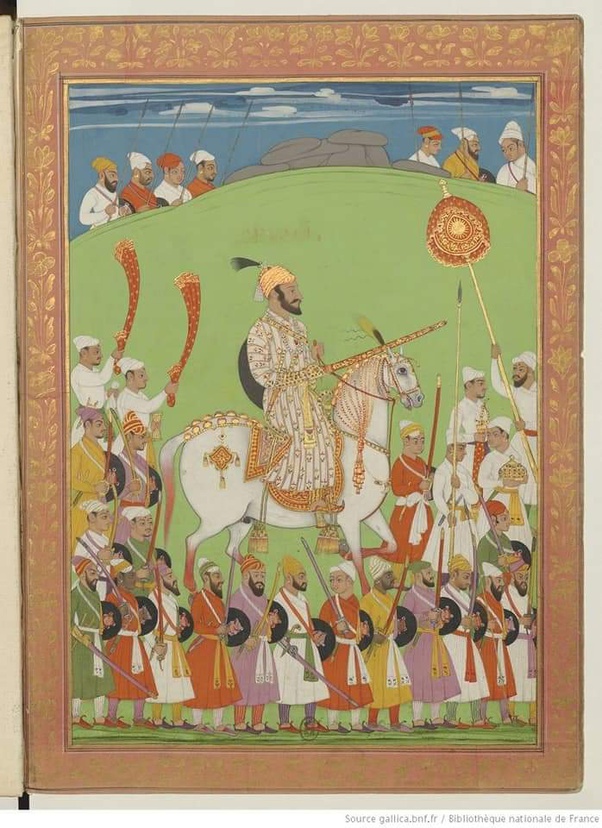
Shivaji by Mir Mohammad (Courtesy: National Library of France)
Into this world if bewildering confusion of land-rights and revenue offices—where nothing was generally known for certain or acknowledged as a clear final settlement—Shivaji (like all other conquerors) burst as a new dissolving force. He had to give his own decision on these claims. All who lost their suits before him, all who were displaced in office by his nominees, immediately turned against him and tried to make their claims good by joining his enemies and opposing his Government. There was no national feeling, no spirit of accepting the law of the land even when honestly administered.
To every one in that age his own fief (watan) was the only reality, the only object of a man’s lifelong endeavour, his highest reward on earth, while Fatherland (patria), if thought of at all, was felt to be an abstract idea, a nonentity. Watan could yield honour, power and the pleasures of life, while patria was a mere word, a figment of the imagination.
To every one in that age his own fief (watan) was the only reality, the only object of a man’s lifelong endeavour, his highest reward on earth, while Fatherland (patria), if thought of at all, was felt to be an abstract idea, a nonentity. Watan could yield honour, power and the pleasures of life, while patria was a mere word, a figment of the imagination.
A further hindrance to the growth of patriotism was the infinitely minute sub-division of society, which made the formation of one nation, or a compact body of men moved by the community of life, thought and interests, impossible, and even inconceivable. Apart from the impassable chasm between the Hindus and the Muslims living on the same soil and under the same rulers, the Hindus themselves were split up into innumerable mutually warring (or, at best, contemptuously detached and indifferent) fragments. Not only did one caste despise and persecute another, but even among the members of the same caste there were distinctions as sharp as those marking off the Muhammadan from the Hindu or the Shudra from the Brahman. Certain families claimed to be of nobler blood (kulin) than all others of the same caste and locality, and depressed and insulted the latter in society. The highest aim of a Hindu in that age—as even in our times—was to elevate his own family (and often also his own sub-division of a caste) in the social scale by lavish bounty to the Brahmans and the caste elders, by hypergamy, or by a nearer approach to the practices of the highest or “twice-born” castes. But the dominant families (or castes) tried to keep the newer or lower ones down at their former level of degradation by turning all the engines of social persecution against them. They took away from such daring aspirants and disturbers of the primeval stereotyped usage and custom, not only the benefit of the clergy but also all the amenities of social life and the services of the public servants of the village. This boycott or outcasting (gramanya) was a more terrifying penalty than death itself.
It was only human nature if the noblest members of the despised families (or castes) resented this injustice and tyranny of society and, in the bitterness of public humiliation, sought to be avenged on the prosecuting church and State by going over to the enemies of their country and faith. Such action, on the part of the oppressors and the oppressed alike, is impossible where a true sense of nationality has taken root. Patriotism could not grow on the Indian soil (except among compact clans of blood-kindred like the Rajputs). The State, as an impersonal, continuous being—higher and more durable than our individual selves—could not be conceived of by the rulers of Hindu India whose sole care was for the benefit of self and not for the good of the community as a whole.
As an acute English observer wrote in 1803: “Every Maratha prince, and every jagirdar or military chief in the [Maratha] empire, has a khazana or collection of treasure, consisting of specie and jewels, which is lodged in a secret depository within the walls of a strong fortress, often erected for the purpose, on one of the most inaccessible mountains in his dominions. This private treasure is the first and never-ceasing object of his ambition to increase … No want of money for supporting a war, even in defence of his own territory, ever induces a Maratha chief to supply the deficiency from his private treasury; the loss of which would be to him a much more grievous calamity than the subjugation of his country.”
(Asiatic Annual Register for 1803, p. 4. A recent example was that of Daulat Rao Sindhia in 1809, as described by Capt. Broughton: “While Sindhia is daily submitting to these and similar insults, from his unpaid soldiery, he possessed a privy purse of 50 lakhs; which no distress either of himself or his troops is sufficiently powerful to induce him to violate.” Letters from a Mahratta Camp, Const. Ed., p. 160.)
The dominant families (or castes) tried to keep the newer or lower ones down at their former level of degradation by turning all the engines of social persecution against them. They took away from such daring aspirants and disturbers of the primeval stereotyped usage and custom, not only the benefit of the clergy but also all the amenities of social life and the services of the public servants of the village. This boycott or outcasting (gramanya) was a more terrifying penalty than death itself.
It was only human nature if the noblest members of the despised families (or castes) resented this injustice and tyranny of society and, in the bitterness of public humiliation, sought to be avenged on the prosecuting church and State by going over to the enemies of their country and faith.
Such were the men among whom Shivaji tried to build up his edifice of an independent national State, the men whom he had to employ as his instruments, the men to whom he had to leave his uncompleted task. The leaders were actuated by an insane pride of birth, an all-devouring jealousy about precedence, an ambition that blinded them to all consequences, an incapacity for self-subordination to law and corporate loyalty that marks the lesser breeds, a lack of political vision and of practical realism. As for the masses, they were human sheep, worthy to be led by such shepherds; their horizon was bounded by the hard conditions of their daily toil, with a simple emotional faith as their only solace.
In such conditions not even a superman can create a nation and leave an enduring State behind him. Shivaji with his transcendent genius could have barely laid their true foundations if a long reign of internal peace had been granted to him and he had been followed by a line of worthy successors. But he lived for less than six years after his coronation, and his kingdom perished with his sons.
-
Neglect of the economic factor by the Marathas
The Maratha rulers neglected the economic development of the State. Some of them did, no doubt, try to save the peasantry from illegal exactions, and to this extent they promoted agriculture. But commerce was subjected to frequent harassment by local officers, and the traders could never be certain of freedom of movement and security of their rights on mere payment of the legal rate of duty. The internal resources of a small province with no industry, little trade, a sterile soil, and an agriculture dependent upon scanty and precarious rainfall— could not possibly support the large army that Shivaji kept or the imperial position and world-dominion to which the Peshwas aspired.
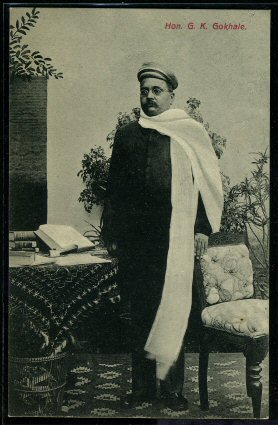
Gopal Krishna Gokhale
The necessary expenses of the State could be met, and all the parts of the body-politic could be held together only by a constant flow of money from outside its own borders, i.e., by a regular succession of raids. As the late Mr. G. K. Gokhale laughingly told me when describing the hardships of the present rigid land assessment in the Bombay Presidency, “You see, the land revenue did not matter much under Maratha rule. In those old days, when the crop failed our people used to sally forth with their horses and spears and bring back enough booty to feed them for the next two or three years. Now they have to starve on their own lands.”
Thus, by the character of his State, the Maratha’s hands were turned against everybody and everybody’s hands were turned against him. It is the Nemesis of a Krieg-staat (a Government that lives and grows only by wars of aggression) to move in a vicious circle. It must wage war periodically if it is to get its food; but war, when waged as a normal method of supply, destroys industry and wealth in the invading and invaded countries alike, and ultimately defeats the very end of such wars. Peace is death to a Krieg-staat; but peace is the very life-breath of wealth. A State founded on war, therefore, kills the goose that lays the golden eggs. To take an illustration, Shivaji’s repeated plunder of Surat scared away trade and wealth from that city, and his second raid (in 1670) brought him much less booty than his first, and a few years later the constant dread of Maratha incursion entirely impoverished Surat and effectually dried up this source of supply. Thus, from the economic point of view, the Maratha State had no stable basis, no normal means of growth within itself.
It is the Nemesis of a Krieg-staat (a Government that lives and grows only by wars of aggression) to move in a vicious circle. It must wage war periodically if it is to get its food; but war, when waged as a normal method of supply, destroys industry and wealth in the invading and invaded countries alike, and ultimately defeats the very end of such wars. Peace is death to a Krieg-staat; but peace is the very life-breath of wealth. A State founded on war, therefore, kills the goose that lays the golden eggs.
-
Excess of finesse and intrigue
Lastly, the Maratha leaders trusted too much to finesse. They did not realise that without a certain amount of fidelity to promises no society can hold together. Stratagem and falsehood may have been necessary at the birth of their State, but it was continued during the maturity of their power. No one could rely on the promise of a Maratha minister or the assurance of a Maratha general. Witness the long and finally fruitless negotiations of the English merchants with Shivaji for compensation for the looting of their Rajapur factory. The Maratha Government could not always be relied on to abide by their treaty obligations.

Yashwantrao Holkar and Daulat Rao Sindhia
Shivaji, and to a lesser extent Baji Rao I, preserved an admirable balance between war and diplomacy. But the latter-day Marathas lost this practical ability. They trusted too much to diplomatic trickery, as if empire were a pacific game of chess. Military efficiency was neglected, war at the right moment and in the right fashion was avoided, or, worse still, their forces were frittered away in unseasonable campaigns and raids conducted as a matter of routine, and the highest political wisdom was believed to consist in raj-karan or diplomatic intrigue. Thus, while the Maratha spider was weaving his endless cobweb of hollow alliances and diplomatic counter-plots, the mailed fist of Wellesley was thrust into his laboured but flimsy tissue of state-craft, and by a few swift and judicious strokes his defence and screen was torn away and his power left naked and helpless. In rapid succession the Nizam was disarmed, Tipu was crushed, and the Peshwa was enslaved. While Sindhia and Holkar were dreaming the dream of the overlordship of all India, they suddenly awoke to find that even their local independence was gone. The man of action, the soldier-statesman, always triumphs over the mere scheming Machiavel. Punic perfidy never succeeds in the long run.
-
Character of Shivaji
Shivaji’s private life was marked by a high standard of morality. He was a devoted son, a loving father and an attentive husband, though he did not rise above the ideas and usage of his age, which allowed a plurality of wives and the keeping of concubines even among the priestly caste, not to speak of warriors and kings. Intensely religious from his very boyhood, by instinct and training alike, he remained throughout life abstemious, free from vice, devoted to holy men, and passionately fond of hearing scripture readings and sacred stories and songs. But religion remained with him an ever fresh fountain of right conduct and generosity; it did not obsess his mind nor harden him into a bigot. The sincerity of his faith is proved by his impartial respect for the holy men of all sects (Muslim as much as Hindu) and toleration of all creeds. His chivalry to women and strict enforcement of morality in his camp was a wonder in that age and has extorted the admiration of hostile critics like Khafi Khan.
He had the born leader’s personal magnetism and threw a spell over all who knew him, drawing the best elements of the country to his side and winning the most devoted service from his officers, while his dazzling victories and ever ready smile made him the idol of his soldiery. His royal gift of judging character was one of the main causes of his success, as his selection of generals and governors, diplomatists and secretaries was never at fault, and his administration was a great improvement on the past.
His army organisation was a model of efficiency; everything was provided for beforehand and kept in its proper place under a proper caretaker; an excellent spy system supplied him in advance with the most minute information about the theatre of his intended campaign; divisions of his army were combined or dispersed at will over long distances without failure; the enemy’s pursuit or obstruction was successfully met and yet the booty was rapidly and safely conveyed home without any loss. His inborn military genius is proved by his instinctively adopting that system of warfare which was most suited to the racial character of his soldiers, the nature of the country, the weapons of the age, and the internal condition of his enemies. His light cavalry, stiffened with swift-footed infantry, was irresistible in the age of Aurangzib. More than a century after his death, his blind imitator Daulat Rao Sindhia continued the same tactics when the English had galloper guns for field action and most of the Deccan towns were walled round and provided with defensive artillery, and he therefore failed ignominiously.
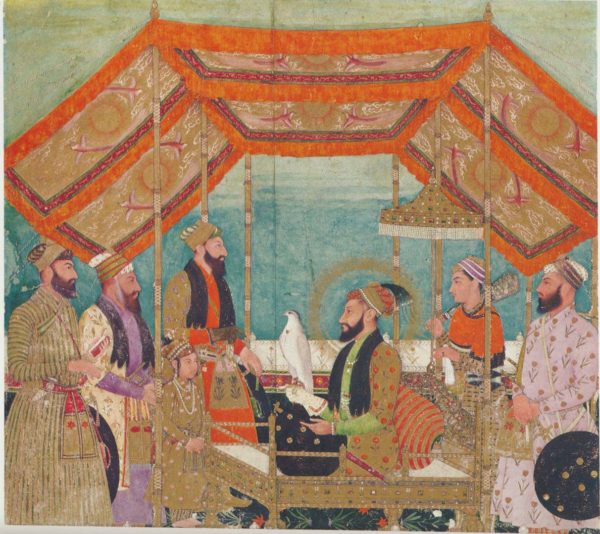
Aurangzeb holds court
Intensely religious from his very boyhood, by instinct and training alike, he remained throughout life abstemious, free from vice, devoted to holy men, and passionately fond of hearing scripture readings and sacred stories and songs. But religion remained with him an ever fresh fountain of right conduct and generosity; it did not obsess his mind nor harden him into a bigot. The sincerity of his faith is proved by his impartial respect for the holy men of all sects (Muslim as much as Hindu) and toleration of all creeds.
-
Shivaji’s genius analyzed
The greatness of Shivaji’s genius can be fully realised not from the extent of the kingdom he won for himself, nor from the value of the hoarded treasure he left behind him, but from a survey of the conditions amidst which he rose to sovereignty.
He was truly an original explorer, the maker of a new road in mediaeval Indian history, with no example or guide before him. When he chose to declare his independence, the Mughal empire seemed to be at the height of its glory. Every local chief who had, anywhere in India, revolted against it had been crushed. For a small jagirdar’s son to defy its power, appeared as an act of madness, a courting of sure ruin. Shivaji, however, chose this path, and he succeeded.
His success can be explained only by an analysis of his political genius. First and foremost he possessed that unfailing sense of reality in politics, that recognition of the exact possibilities of his time (tact des choses possibles) which Cavour defined as the essence of statesmanship. His daring was tempered and guided by an instinctive perception of how far his actual resources could carry him, how long a certain line of action or policy was to be followed, and where he must stop. For the lack of this political insight his rash son Shambhuji came to a miserable end and undid the work of Shivaji’s life.
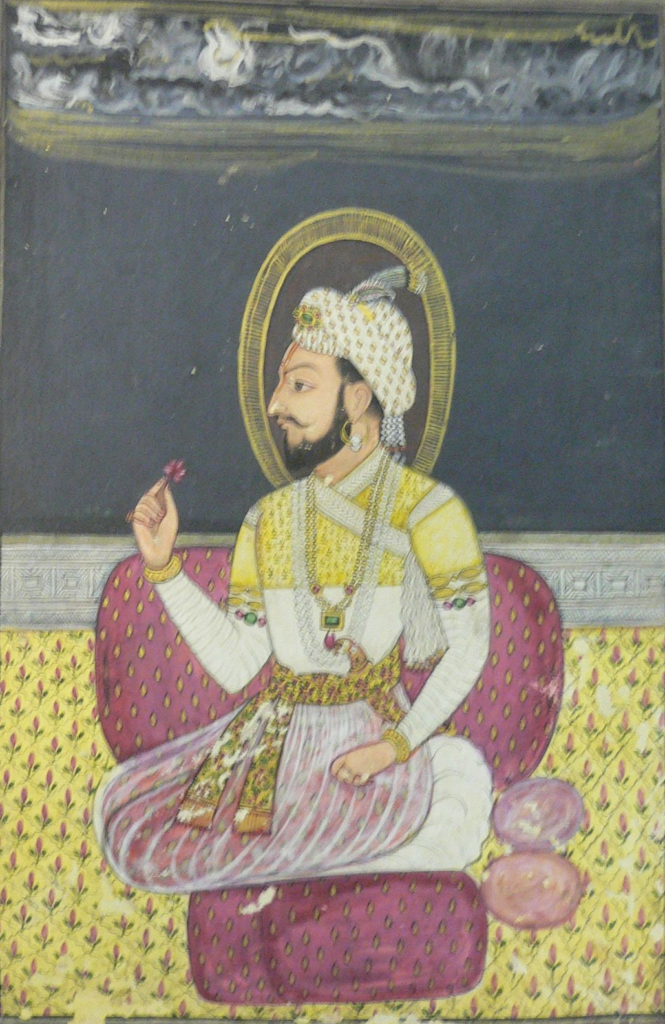
Shambhuji. Late 17th Century
Shivaji possessed the true master’s gift of judging character at sight and choosing the fittest instruments for his work. This is proved by the successful execution of his agents in his absence. Many of the distant expeditions of his reign were conducted not by himself but by his generals, who almost always carried out his orders according to plan. This is a novel feat in an Asiatic monarchy, where everything depends on the master’s presence. It was the training gained in Shivaji’s service, aided by the Maratha national character for personal independence and initiative, that enabled the disorganized Maratha people to stand up against the resources of the mighty Aurangzib for eighteen years after the murder of Shambhuji and ultimately to defeat him, even though they had no king or capital to form the centre of the national defence.
His reign brought peace and order to his country, assured the protection of women’s honour and the religion of all sects without distinction, extended the royal patronage to the truly pious men of all creeds (Muslims no less than Hindus), and presented equal opportunities to all his subjects by opening the public service to talent irrespective of caste or creed. This was the ideal policy for a State with a composite population like India.
(He was himself a Hindu, sincere in belief and orthodox in practice, and yet he had a number of Muhammadan officers in the highest positions, such as Munshi Haidar (who became Chief Justice of the Mughal empire on entering Aurangzib’s service), Siddi Sambal, Siddi Misri, and Daulat Khan (admirals), besides commanders like Siddi Halal and Nur Khan. (Dil. i. 100.) He gave legal recognition to the Muslim qazis in his dominions.)
His gifts were peace and a wise internal administration. The stability of these good conditions was the only thing necessary for giving permanence to Shivaji’s work and ensuring national consolidation and growth. But that stability was denied to his political creation. Only his example and name remained to inspire the best minds of succeeding generations with ideals of life and government, not unmixed with vain regrets.
Shivaji possessed the true master’s gift of judging character at sight and choosing the fittest instruments for his work. This is proved by the successful execution of his agents in his absence. Many of the distant expeditions of his reign were conducted not by himself but by his generals, who almost always carried out his orders according to plan. This is a novel feat in an Asiatic monarchy, where everything depends on the master’s presence.
-
Shivaji’s political ideal and difficulties.
Did Shivaji merely found a Krieg-staat? Was he merely an entrepreneur of rapine, a Hindu edition of Alauddin Khilji or Timur?
I think it would not be fair to take this view. For one thing, he never had peace to work out his political ideal. The whole of his short life was one struggle with enemies, a period of preparation and not of fruition. All his attention was necessarily devoted to meeting daily dangers with daily expedients and he had not the chance of peacefully building up a well-planned political edifice.
In the vast Gangetic valley and the wide Desh country rolling eastwards through the Deccan, Nature has fixed no boundary to States. Here a kingdom’s size changes with daily changes in its strength as compared with their neighbours’. There can be no stable equilibrium among them for more than a generation. Each has to push the others as much for self-defence as for aggression. Each must be armed and ready to invade the others, if it does not wish to be invaded and absorbed by them. Where friction with neighbours is the normal state of things, a huge armed force, sleepless vigilance, and readiness to strike the first blow are the necessary conditions of the very existence of a kingdom. The evil could be remedied only by the establishment of a universal empire throughout the country from sea to sea.
Shivaji could not for a moment be sure of the Delhi Government’s pacific disposition or fidelity to treaty. The past history of the Mughal expansion into the Deccan since the days of Akbar, was a warning to him. The imperial policy of annexing the whole of South India was as unmistakable to Shiva as to Adil Shah or Qutb Shah. Its completion was only a question of time, and every Deccani Power was bound to wage eternal warfare with the Mughals if it wished to exist. Hence Shivaji lost no chance of robbing Mughal territory in the Deccan.
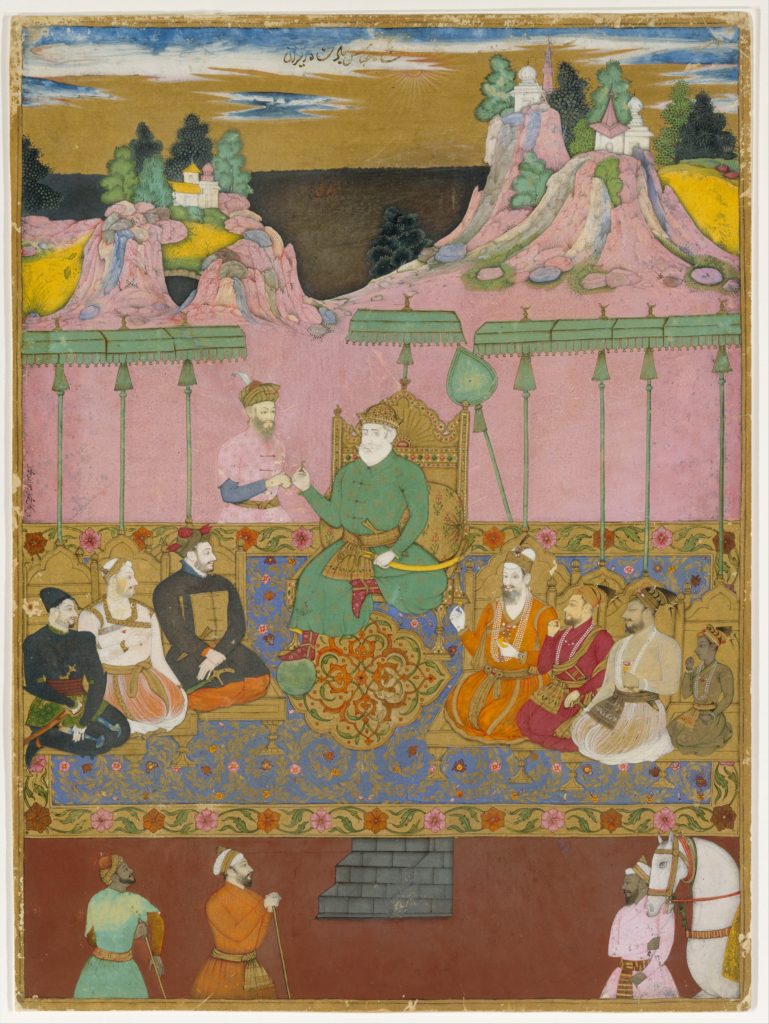
Sikandar Adil Shah
With Bijapur his relations were somewhat different. He could raise his head or expand his dominion only at the expense of Bijapur. Rebellion against his liege-lord was the necessary condition of his being. But when, about 1662, an understanding was effected between him and the Adil-Shahi ministers, he gave up molesting the heart of the Bijapur kingdom. With the Bijapuri barons whose fiefs lay close to his dominions, he had, however, to wage war till he had wrested Kolhapur, North Kanara and South Konkan from their hands. In the Kamatak division, viz., the Dharwar and Belgaum districts, this contest was still undecided when he died. With the provinces that lay across the path of his natural expansion he could not be at peace, though he did not wish to challenge the central Government of Bijapur. This attitude was changed by the death of Ali II. in 1672, the accession of the boy Sikandar Adil Shah, the faction-fights between rival nobles at the capital, and the visible dissolution of that Government. But Shivaji helped Bijapur greatly during the Mughal invasions of 1679.

Ali Aadil Shah II of Bijapur
-
His influence on the spirit
Shivaji’s real greatness lay in his character and practical ability, rather than in originality of conception or length of political vision. Unfailing insight into the character of others, efficiency of arrangements, and instinctive perception of what was practicable and most profitable under the circumstances— these were the causes of his success in life. To these must be added his personal morality and loftiness of aim, which drew to his side the best minds of his community, while his universal toleration and insistence on equal justice gave contentment to all classes subject to his rule. He strenuously maintained order and enforced moral laws throughout his own dominions, and the people were happier under him than anywhere else.
His splendid success fired the imagination of his contemporaries, and his name became a spell calling the Maratha race to a new life. His kingdom was lost within nine years of his death. But the imperishable achievement of his life was the raising of the Marathas into an independent self-reliant people, conscious of their oneness and high destiny, and his most precious legacy was the spirit that he breathed into his race.
The mutual conflict and internal weakness of the three Muslim Powers of the Deccan were, no doubt, contributory causes of the rise of Shivaji. But his success sprang from a higher source than the incompetence of his enemies. I regard him as the last great constructive genius and nation-builder that the Hindu race has produced. His system was his own creation and, unlike Ranjit Singh, he took no foreign aid in his administration. His army was drilled and commanded by his own people and not by Frenchmen. What he built lasted long; his institutions were looked up to with admiration and emulation even a century later in the palmy days of the Peshwas’ rule.
Shivaji was illiterate; he learnt nothing by reading. He built up his kingdom and Government before visiting any royal Court, civilised city, or organised camp. He received no help or counsel from any experienced minister or general. But his native genius, alone and unaided, enabled him to found a compact kingdom, an invincible army, and a grand and beneficent system of administration.
Before his rise, the Maratha race was scattered like atoms through many Deccani kingdoms. He welded them into a mighty nation. And he achieved this in the teeth of the opposition of four great Powers like the Mughal empire, Bijapur, Portuguese India, and the Abyssinians of Janjira. No other mediaeval Hindu has shown such capacity.
Before he came, the Marathas were mere hirelings, mere servants of aliens. They served the State, but had no lot or part in its management; they shed their lifeblood in the army, but were denied any share in the conduct of war or peace. They were always subordinates, never leaders.
Shivaji was the first to challenge Bijapur and Delhi and thus teach his countrymen that it was possible for them to be independent leaders in war. Then, he founded a State and taught his people that they were capable of administering a kingdom in all its departments. He has proved by his example that the Hindu race can build a nation, found a State, defeat enemies; they can conduct their own defence; they can protect and promote literature and art, commerce and industry; they can maintain navies and ocean-trading fleets of their own, and conduct naval battles on equal terms with foreigners. He taught the modern Hindus to rise to the full stature of their growth.
The mutual conflict and internal weakness of the three Muslim Powers of the Deccan were, no doubt, contributory causes of the rise of Shivaji. But his success sprang from a higher source than the incompetence of his enemies. I regard him as the last great constructive genius and nation-builder that the Hindu race has produced. His system was his own creation and, unlike Ranjit Singh, he took no foreign aid in his administration. His army was drilled and commanded by his own people and not by Frenchmen. What he built lasted long; his institutions were looked up to with admiration and emulation even a century later in the palmy days of the Peshwas’ rule.
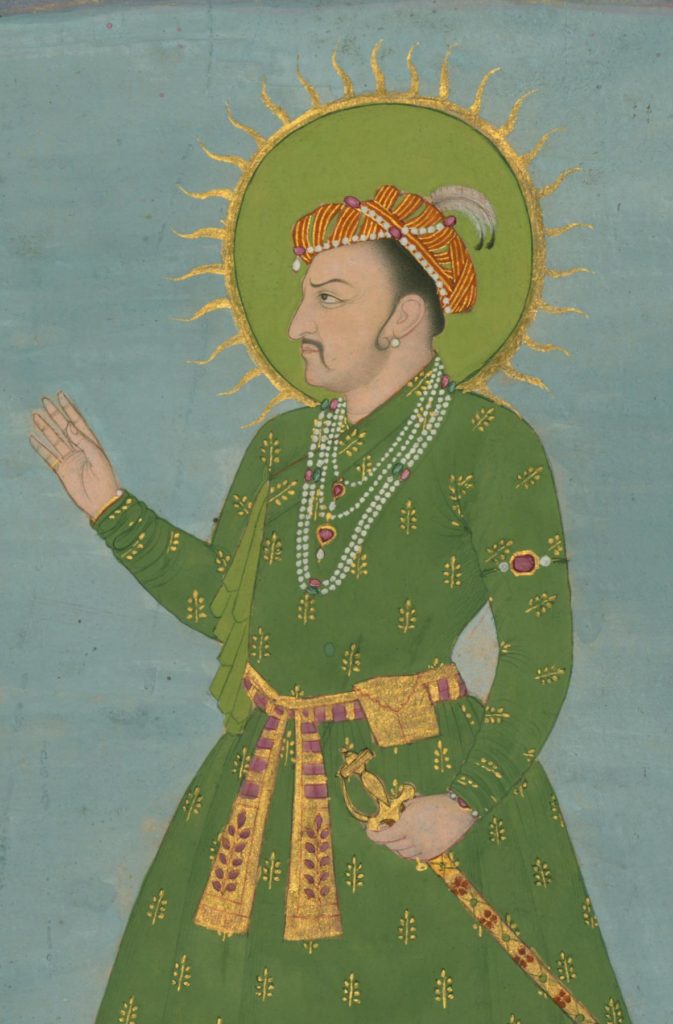
Emperor Jahangir
He has proved that the Hindu race can still produce not only jamadars (non-commissioned officers) and chitnises (clerks), but also rulers of men, and even a king of kings (Chhatrapati.) The Emperor Jahangir cut the Akshay Bat tree of Allahabad down to its roots and hammered a red-hot iron cauldron on to its stump. He flattered himself that he had killed it. But lo! Within a year the tree began to grow again and pushed the heavy obstruction to its growth aside!
Shivaji has shown that the tree of Hinduism is not really dead, that it can rise from beneath the seemingly crushing load of centuries of political bondage, exclusion from the administration, and legal repression; it can put forth new leaves and branches; it can again lift up its head to the skies.
For the purposes of easier reading, this excerpt has been carried without citations present in the original. You can buy Shivaji and His Times here.
ARCHIVE
In this chapter from Shivaji Kon Hota? or Who Was Shivaji? Govind Pansare analyses Shivaji’s approach towards religion, shattering myths that surround his modern day iconography as a ‘Hindu Emperor’, revealing not just Shivaji’s tolerance but also his respect for Islam, and – most importantly – laying bare the contours of the communal and power politics of Shivaji’s time.
Govind Pansare’s bestselling Shivaji Kon Hota? is remarkable not just for the amount of historical research Pansare uses to dispel myths around the Maratha hero but also for the lucid and easy style in which it has been written. The book has sold over 2,00,000 copies in eight languages and has been translated from the Marathi into English (Who Was Shivaji?) by Uday Narkar.
Historian Anirudh Deshpande writes in the introduction to the book: “The strength and popularity of Shivaji Kon Hota? must be perceived in it not being a product of professional history. It is a modern text not tainted by the historical imagination of nationalism. The book’s lasting relevance, readers will realize, lies in its unostentatious application of reason and the historical method of Marx to a highly emotive subject of Indian history.”
Prabhat Patnaik writes, in the afterword, how Pansare portrays Shivaji neither as an “upholder of Hinduism” nor as a “mere ‘backward caste’ leader asserting himself against Brahmanical dominance” but as “a ‘secular’ ruler who pioneered a Welfare State”. Also: “Pansare’s book is based on a speech he delivered in May 1987. It portrayed Shivaji not only as socially progressive, but also as a rationalist.”
In the chapter from the book that we have carried below—‘Shivaji and Religion’—Pansare uses logic as well as historical sources and scholarly works to argue against the assumption that Shivaji is a suitable icon for Hindutva. He does this by breaking up the chapter into 11 sections, each section building up to his thesis. Hence, he takes us through the question of what Shivaji’s approach to religion actually was, to his popular image as a ‘Hindu emperor’, to a similar image being built up for Rana Pratap and Prithviraj Chauhan, to what historical records tell us about the attitudes of Hindu and Muslim rulers of the time as well as Hindus and Muslims who served under rulers from both religions. He goes on to the contentious subject of the ‘Loot and Destruction of Temples’: what these were actually driven by, and purpose they were meant to serve, versus how they are perceived today. He contextualises this with records of endowments given to temples by Muslim rulers, as well as the loot of temples by Hindu rulers. He builds the case that “power” rather than “religion” was the dominant theme behind such attacks. Further, he lists Shivaji’s battles against other Hindus and Marathas, including Shivaji’s own relatives.
In the concluding section, while stressing Shivaji’s “pride” in being a Hindu, Pansare underscores the Maratha hero’s open and rational approach to faith by citing – as he does throughout the chapter – various sources as evidence. One that stands out is a line written by Shivaji’s chief justice, Raghunath Pandit Rao: “Shrimant Mararaj has ordained that everybody is free to follow his religion and nobody is allowed to disturb it.”
Another is a letter written by Shivaji to Aurangzeb, whose translation we have also carried in full below (courtesy LeftWord Books).
Shivaji and Religion
Shivaji’s Approach
What was Shivaji’s approach to religion in general? What was his actual practice in this respect? How did he treat both Hindu and Muslim religions? These are historically very important questions. These are also relevant in today’s times.
Shivaji was a Hindu. He was born in Maharashtra and it remained his place of operations throughout. Hindus therefore are proud of him. It is quite natural. Maharashtrian Hindus in particular are more proud of him. It is also very natural — nothing wrong in it. It is but human to look at one’s own greatness, the greatness of one’s own religion, and the greatness of one’s own country or region in the light of the great heroes belonging to one’s own religion. Moreover, the fewer the number of such heroic people in a community or a religion the more ordinary people take pride in them.
However, we tend to create, unconsciously, a larger than life image of such “heroes.” Many times the image is deliberately projected as one-dimensional as it suits one’s present day purposes and conveniences. In the process, a distortion creeps in and the image itself becomes distorted. It loses its identity.
There are several reasons why Shivaji’s work, his administration, his time, his social reforms and his attitude to religion are not projected adhering to the historical truth. His image in popular imagination is sometimes contrary to the truth.
Even an illiterate Maharashtrian knows Shivaji. They know the stories of his life. They know many things — places, names, incidences related to him. How did all this information reach out to the four corners of Maharashtra?
Innumerable ballads on Shivaji, his times, on miraculous, dramatic and sublime incidences in his life have been sung. Can one name a Marathi shahir, a bard, whether in Shivaji’s time or even today, who has not sung of Shivaji? The answer is an emphatic “No.” Every shahir has done it, and they are right to do so. The same is true of folk songs and all folklore. Kirtanas are no exception. Take anything — speeches, discourses, theatre and cinema. These are the means by which history is taken to people.
Distortions, interpolations in the historical accounts in the process of imaginative reconstruction, are not unlikely. Even if we overlook such distortions, we have to admit that the media mentioned above have their own natural limitations.
There are several reasons why Shivaji’s work, his administration, his time, his social reforms and his attitude to religion are not projected adhering to the historical truth. His image in popular imagination is sometimes contrary to the truth.
How can the miracles be done away with if the audience gathers to be entertained? The ballad would be quite uninteresting without some “imaginative” stories. Various figures of speech become indispensable, especially the hyperbole. If these “performances” were to only enumerate the figures of historical dates, and not use the figures of speech, if they were to logically analyze, and not to resort to the hyperbole, would there be a second “performance”? Moreover, the authors-performers have to take into account the level of understanding of their audiences. They themselves have their own limitations. All this has contributed to creating the image of Shivaji in the way we have received it. Of course there are many other factors involved in the distortion: self-interest, contemporary political expediency, a wrong approach to history or, at the least, inadequate understanding, and so on.
Shivaji and Muslims
Shivajis image, widespread amongst the masses, could be summarized thus: “Shivaji was anti-Muslim. His life mission was to oppose the Muslim religion. He was a protector of the Hindu religion. He was a Hindu Emperor (Hindu Padpatshah). He was a protector of cows and Brahmans (Go-Brahman Pratipalaka).”
A couplet by his contemporary poet, Bhushan, reflects this image. He wrote, “Shivaji na hota, to sunta hoti sabki” (“But for Shivaji, all would have been forcibly circumcised”). There have been such similar instances of misinterpretation held in a large number. “Shivaji’s war was a kind of crusade. Religion was the inspiration of his mission, Shivaji fought for religion. He succeeded because he fought for religion. In fact, he was a reincarnation of God himself! He was the reincarnation of Vishnu or Shiva. God took on this reincarnation to save the religion. Goddess Bhavani gifted the sword to save the religion.”
So on and so forth.
All these theories need to be tested against the historical facts. It will not be proper to uncritically accept them because we are Hindus or because they are convenient to us in the present circumstances. At the same time we should also beware of its flipside. There is a growing tendency among the Muslims to say, “We belong to the Muslim religion. It is our need to teach Muslims to hate Hindus. As many Hindus worship Shivaji; we should hold him as the savior of Hindu religion and as an aggressor of Muslim religion.” Such an uncritical approach too is erroneous. What is the truth?
Shivajis image, widespread amongst the masses, could be summarized thus: “Shivaji was anti-Muslim. His life mission was to oppose the Muslim religion. He was a protector of the Hindu religion. He was a Hindu Emperor (Hindu Padpatshah). He was a protector of cows and Brahmans (Go-Brahman Pratipalaka).”
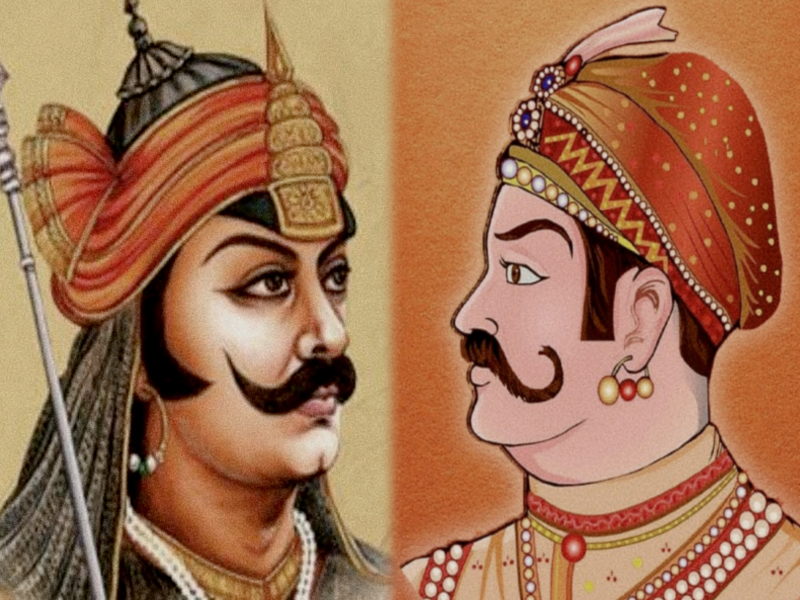
Rana Pratap and Prithviraj Chauhan
Shivaji, Rana Pratap, Prithviraj Chauhan
Let us take the claim: Shivaji succeeded because he was a savior of Hindu religion. If this were the fact why did Rana Pratap or Prithviraj Chauhan not succeed? In actual fact, both of them were high caste Kshatriya Hindus. At least some people had doubts about Shivaji’s being a Kshatriya. Both Rana Pratap and Prithviraj Chauhan were no less than Shivaji in respect of bravery, sacrifice, determination and hard work. Possibly they could be a grade better than him in these aspects. Then why did history take the course it did? If it was a religious crusade, why did one succeed and why were the other two badly defeated? If it was God’s will that the Hindu Rashtra be founded then why was it founded in Maharashtra alone? Why did God not will that it be founded in Rana Pratap’s and Prithviraj Chauhan’s land as well?
It is not true that Shivaji succeeded because he believed in the Hindu religion. Evidence suggests that he set out to do something better for the world than merely save his religion.
Let us assume for a moment that his contemporary rulers belonged to a religion other than Islam. Suppose, there were kings belonging to the Hindu religion. Would Shivaji, then, hate Muslims? Why did Shivaji fight against the Muslim kings? Was it because they were Muslims or because they were kings? If he fought for both the reasons, then which of the two was the main reason? What was important: their being kings or their being Muslims?
Religious Tolerance of Some Muslim Kings
The historical record shows that not all Muslim kings were intolerant to Hindus and to the Hindu religion. History provides us with several instances of the tolerance of Muslim rulers. In Maharashtra, Shivaji’s province, we find many Muslim rulers who had political and familial relations with Hindus. Dattatray Balwant Parasnis’ Marathe Sardar offers the following analysis:
“Marathas were very powerful in Nizam Shahi, Qutb Shahi and Adil Shahi. Gangavi, the founder of Nizam Shahi, who was converted to Islam, was the son of Bahirambhat Kulkarni, a Brahman. The father of Ahmednagar King too was a Hindu. Yusuf Adil Shah of Vijapur [Bijapur] had married a Maratha girl. Qasim Barid was the founder of the throne of Bidar kingdom. His son also had married Sabaji’s daughter. Owing to such relations and customs there was tolerance to Hindus and the Marathas were quite powerful in these kingdoms.”
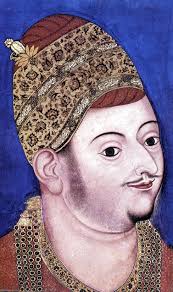
Yusuf Adil Shah of Vijapur [Bijapur]
In the same book, Parasnis quotes Justice Mahadev Govind Ranade:
“Hindus under the Southern Muslim kingdoms were encouraged by the kings (in many ways) and they were given many concessions and powers. This was because of a number of factors: alienation of the South Indian Muslims from the radical Muslims of the North, dominant position and a general goodwill of the Hindus in the Bahmani sultanate, the entry of Brahmans and Prabhus in the departments of Treasury and Tax Collection, entry of Marathi language in the administration because of them, the balance of forces resulting in Marathi warriors and officers getting promotions, the king’s court donning a deep imprint as a consequence of his marriage with Hindu girls, and deep affection of those converted to Islam for the people of their own caste.”
What does the name Hasan Gangu Bahmani, the founder of the Bahmani sultanate, tell us? A Muslim person called Hasan Jaffer had been working for a Brahman called Gangu. Later on he became a courtier of Tughlaq, the Emperor of Delhi. Gangu became the Emperor’s subedar in Maharashtra. He rebelled against the Emperor and founded his own throne in Maharashtra. As a sign of gratitude to and in memory of his former master he adopted a new name, half Hindu and half Muslim: Hasan Gangu. His own state was called Bahmani, i.e., related to Brahmans. If the relations between the Hindus and the Muslims had always been of extreme enmity, this would not have happened.
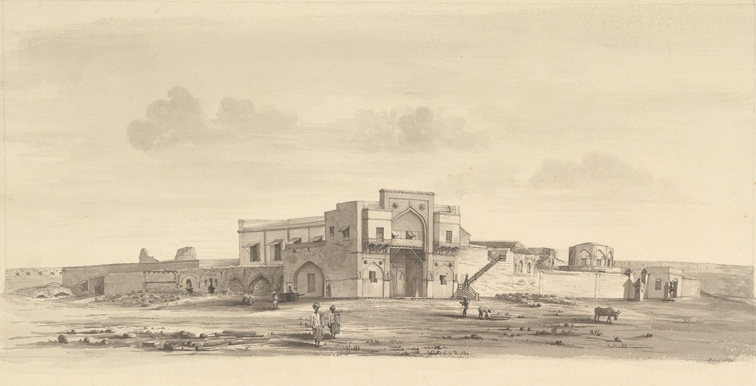
Ahmednagar fort
Hindu lords and Hindus remained loyal to Muslim kings, and the latter were tolerant to their subjects. If the subjects — whether Hindus or Muslims — threatened the state and if the state became endangered, the kings would become intolerant. What was important was not their being Hindus or Muslims, but the stability of the state.
“Marathas were very powerful in Nizam Shahi, Qutb Shahi and Adil Shahi. Gangavi, the founder of Nizam Shahi, who was converted to Islam, was the son of Bahirambhat Kulkarni, a Brahman. The father of Ahmednagar King too was a Hindu. Yusuf Adil Shah of Vijapur had married a Maratha girl. Qasim Barid was the founder of the throne of Bidar kingdom. His son also had married Sabaji’s daughter. Owing to such relations and customs there was tolerance to Hindus and the Marathas were quite powerful in these kingdoms.” —Dattatray Balwant Parasnis
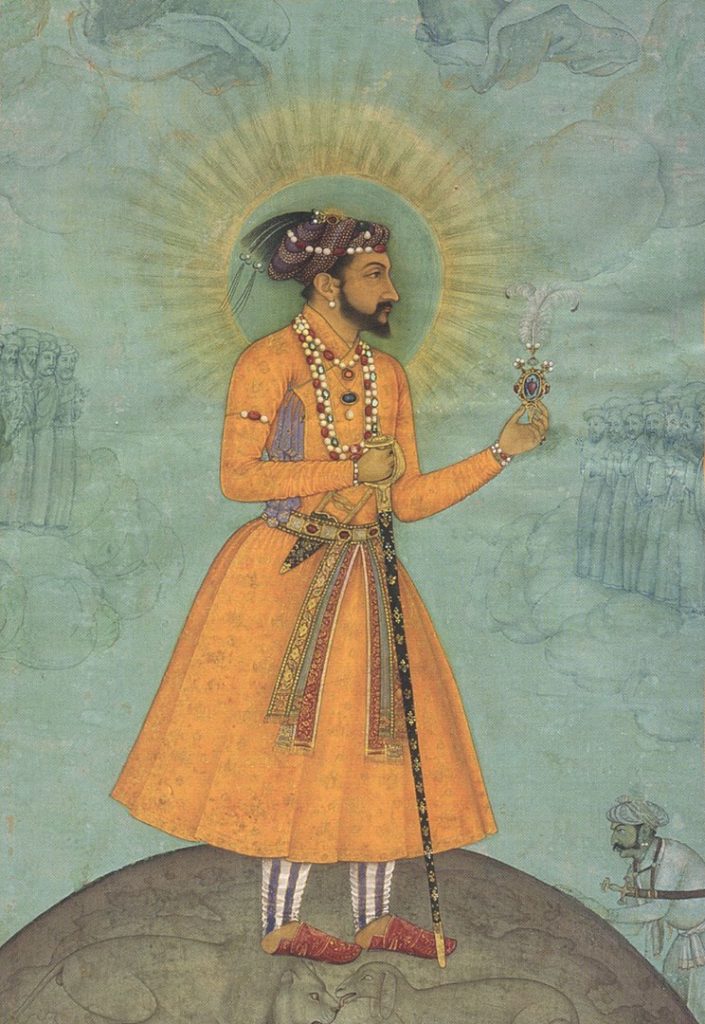
Shah Jahan, painted by Bichitr, c.1630, Chester Beatty Library
All the emperors of Delhi were not fundamentalist Muslims. This is an error of historical judgment. Akbar’s tolerance is well-known. He even tried to found a new syncretic religion called Din-e-Ilahi. In his times there was considerable cultural unity. Hindu Todar Mal, as revenue Minister, used his intelligence for the cause of a king who happened to be a Muslim. Jagannath Pandit, a high caste Brahman, was happily writing Sanskrit poetry in the court of Shah Jahan.
A story of Pandit Jagannath is quite well known. The Hindu king of Jaipur made great efforts to get this Hindu Pandit under his tutelage so as to add to the king’s status. Jagannath Pandit’s reply to his invitation is very revealing,
Only the Lord of Delhi or the Lord of the World has the might to fulfill my wishes. If any other king desires to do something for me it will be just enough for my hand to mouth existence.
The caste of the Lord of Delhi was not important. What was important was what he gave and how much he gave. Shah Jahan’s son Dara Shikoh was a Sanskrit scholar. He used to regularly meet with the scholars from Kashi. In this milieu, someone composed the Allopanishad — or the Allah Upanishad — on the lines of the well-known Upanishads such as the Chandogya Upanishad and Brihadaranyaka Upanishad. It was a sign of cultural complexity.
A scholar of the stature of Tryambak Shankar Shejwalkar argued that if Dara Shikoh, Aurangzeb’s elder brother, had ascended the throne rather than Aurangzeb, this continent would have come under one rule and would have become a very powerful country. In short, it can easily be seen that all the Muslim rulers were not the haters of the Hindus.
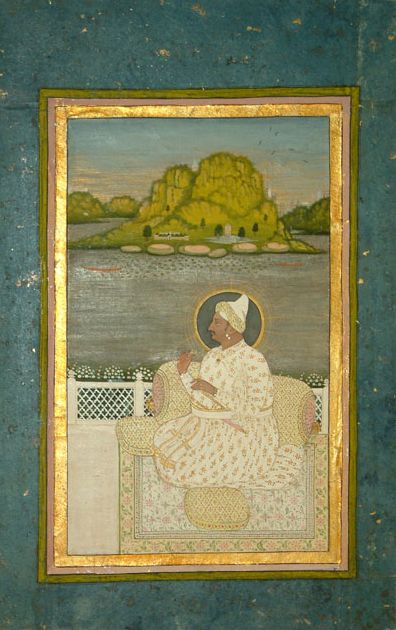
Todar Mal, Revenue Minister of Akbar
Shivaji’s Muslim Lieutenants
Shivaji had many Muslims working under him. They held very important positions in his army and administration. Many of them were appointed to very high and responsible posts.
Those who study the life and work of Shivaji cite the formation of his navy as an example of his foresight. The Konkan coastline is very long, and a well-equipped navy was essential for its defense. Shivaji installed such a naval force, with its leader being Darya Sarang Daulat Khan. He was a Muslim.
Shivaji’s personal bodyguard included a Muslim youth called Madari Mehtar. He was a trusted servant. Why should he, a Muslim, have helped Shivaji in his most dramatic and legendary escape from Agra? Would it have been possible if Shivaji had been a hater of Muslims?
Shivaji had many such Muslims in his employ. One of them was Kazi Hyder. After the battle of Saleri, Aurangzeb’s lieutenants in the South sent a Hindu Brahman ambassador so as to establish amicable relations with Shivaji. Shivaji in turn sent Kazi Hyder as his emissary. Thus a Muslim ruler had under him a Hindu ambassador and a Hindu ruler had a Muslim. If society were vertically split between the Hindu and Muslim communities this could not have happened.
Siddi Hilal was one such Muslim working for Shivaji. Shivaji defeated Rustum Zama and Fazal Khan near Raibaug in 1660. Siddi Hilal fought on Shivaji’s side. Adil Shah II’s uncle Siddi Jauhar came to lay siege against Shivaji at Panhala Fort that same year. Shivaji’s trusted aide, Netaji Palkar, used his armed detachments to dislodge the siege. Siddi Hilal and his son were at Netaji’s side at the time. Hilal’s son Siddi Wahwah was wounded and captured in this battle.
The Muslim chieftain Siddi Hilal, along with his son, fought for Shivaji, a Hindu, against a Muslim. Would this happen if the nature of wars at that time was communal, as a war between Hindus and Muslims? The chronicle Sabhasad Bakhar mentions the name of Shivaji’s lieutenant — Shama Khan. V.K. Rajwade points out in his Marathyanchya Itihasachi Sadhane (“Sources of Maratha History”) that Shivaji’s Sarnobat or chief of infantry was Noor Khan Beg. These were not isolated individuals. Muslim sardars worked for Shivaji along with the anonymous Muslim soldiers under them.
Evidence of Shivaji’s tolerance toward Muslims is found across the archives, deep in the chronicles of the time. Here is one example. Around 1648, about five hundred to seven hundred Pathans belonging to Vijapur army came to join Shivaji. Shivaji accepted the advice given to him at that time by Gomaji Naik Pansambal, his military advisor. Gomaji said, “These people have come hearing about your reputation. It will not be proper to turn them away. If you think that you should organize Hindus alone and will not be bothered about others, you will not succeed in establishing your rule. The one who wishes to establish rule must gather all the eighteen castes and the four varnas and assign to them their functions.” Shivaji had not yet established his ecumenical policy in 1648. He would base his policy on such advice. Grant Duff, in his History of the Marhattas (1830) mentions Gomaji Naik’s advice to Shivaji and then notes, “After this, Shivaji enlisted a large number of Muslims also in his army and this helped a great deal in founding his rule.”
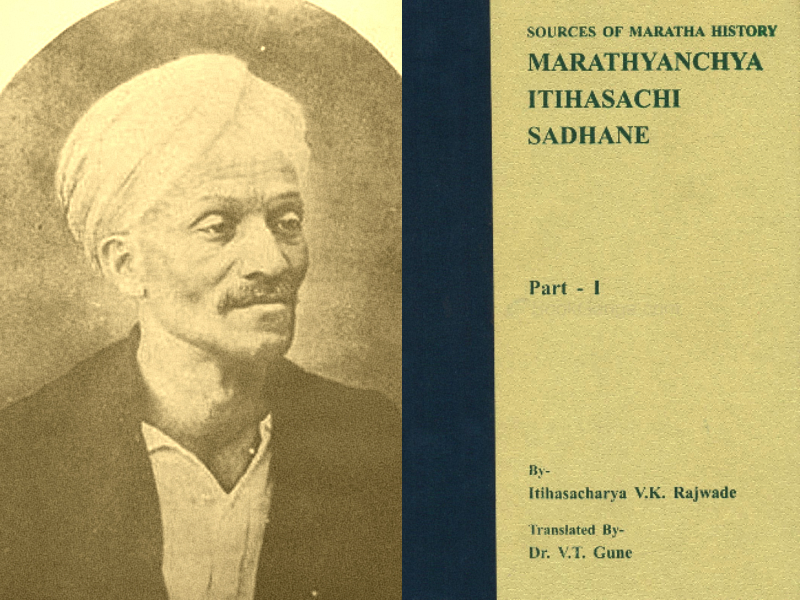
V.K. Rajwade and his Marathyanchya Itihasachi Sadhane
Shivaji installed… a naval force, with its leader being Darya Sarang Daulat Khan… Shivaji’s personal bodyguard included a Muslim youth called Madari Mehtar. He was a trusted servant. Why should he, a Muslim, have helped Shivaji in his most dramatic and legendary escape from Agra? Would it have been possible if Shivaji had been a hater of Muslims? Shivaji had many such Muslims in his employ. One of them was Kazi Hyder. After the battle of Saleri, Aurangzeb’s lieutenants in the South sent a Hindu Brahman ambassador so as to establish amicable relations with Shivaji. Shivaji in turn sent Kazi Hyder as his emissary… Siddi Hilal was one such Muslim working for Shivaji. Shivaji defeated Rustum Zama and Fazal Khan near Raibaug in 1660. Siddi Hilal fought on Shivaji’s side. Adil Shah II’s uncle Siddi Jauhar came to lay siege against Shivaji at Panhala Fort that same year. Shivaji’s trusted aide, Netaji Palkar, used his armed detachments to dislodge the siege. Siddi Hilal and his son were at Netaji’s side at the time. Hilal’s son Siddi Wahwah was wounded and captured in this battle… The chronicle Sabhasad Bakhar mentions the name of Shivaji’s lieutenant — Shama Khan. V.K. Rajwade points out in his Marathyanchya Itihasachi Sadhane (“Sources of Maratha History”) that Shivaji’s Sarnobat or chief of infantry was Noor Khan Beg.
Shivaji’s lieutenants, soldiers and chieftains were not Hindus alone. They were Muslims as well. If Shivaji had undertaken the task of eliminating Islam, these Muslims would certainly not have joined him. Shivaji had set out to demolish the despotic and exploitative rule of Muslim rulers. He had set out to bring in a rule that cared for the ryots. This is the reason why the Muslims too joined him in his cause.
The question of religion was not the main question. The main question was of the state.
Not loyalty to religion, but loyalty to the state, to a master was more important.
Hindu Sardars under Muslim Rulers
Just as there were Muslim Sardars and soldiers working with Shivaji, there were numerous Hindu Sardars and soldiers serving Muslim kings and emperors.
In fact Shivaji’s own father, Shahaji, was an influential Sardar working for Adil Shah, Vijapur’s Muslim ruler. Shahaji’s father-in-law, Lakhuji Jadhav, was the Nizam’s Mansabdar in Maharashtra. Adil Shahi’s other Mansabdars included More of Javali, Nimbalkar of Phaltan, Khem Sawant of Sawantwadi and Suryarao Shringarpure of Shringarpur.
Mirza Raja Jai Singh, a high caste Rajput Hindu, came on behalf of the Mughal emperor to defeat Shivaji, force him to sign a humiliating agreement, took him to Agra, where he arrested him and his son Sambhaji. All he was doing was to serve honourably under a Mughal emperor. When Mirza Raja Jai Singh invaded Shivaji’s dominion he had several Hindu Sardars under him. They were Jats, Marathas, Rajputs including Raja Rai Singh Sisodiya, Sujan Singh Bundela, Hari Bhan Gaur, Uday Bhan Gaur, Sher Singh Rathod, Chaturbhuj Chauhan, Mitra Sen, Indra Man Bundela, Baji Chandrarao, Govind Rao, etc.
Tanaji Malusare, a lieutenant of Shivaji, died in action while capturing Fort Kondana. This fort was renamed as Simhagadh to commemorate Tanaji’s heroic sacrifice. The officer in charge of Fort Kondana was a Hindu Rajput, Uday Bhanu, and he was a lieutenant of a Muslim Emperor.
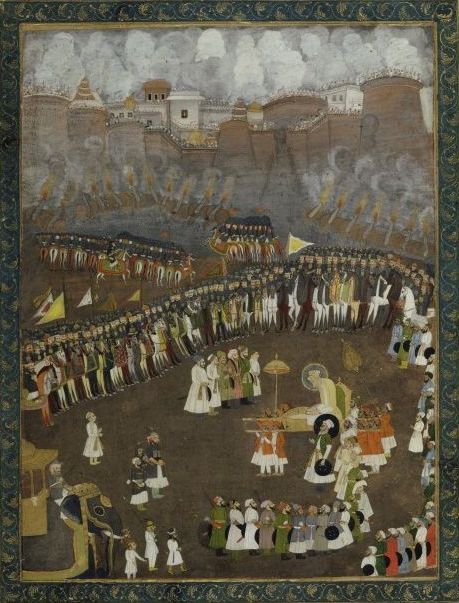
Aurangzeb leading the Mughal Army during the Battle of Satara
There were about 500 Sardars holding different mansabs under Akbar. Out of those 22.5 per cent were Hindus. In Shah Jahan’s empire, the ratio stood at 22.4 per cent. Aurangzeb is supposed to be the most fanatic of all the Muslim rulers. When he took over the empire, Hindus accounted for 21.6 per cent of the Mansabdars. When his reign ended, this figure rose to 31.6 per cent. It was Aurangzeb who had appointed Raja Jaswant Singh, a Hindu Rajput, as the Subedar (governor) of the Deccan. Aurangzeb’s first Minister too was a Hindu, Raghunath Das. He was a Rajput and yet fought against Rajputs on behalf of Aurangzeb. One of Rana Pratap Singh’s generals was Hakim Khan Soor, a Muslim. The Chief of the Peshwa’s artillery in the battle of Panipat was Ibrahim Khan Gardi.
The Hindus who served Muslim Kings with loyalty and occasionally fought against them were not castigated as sinners or religious renegades. They were not called anti-Hindu or pro-Muslim. Loyalty to the Master, rather than to religion, was more important in those times.
In ancient or medieval India wars were not waged on the grounds of religion. The main motive behind wars was to capture or to strengthen power. It was true that religion was temporarily used to support the main purpose. But it never was the sole or main motive.
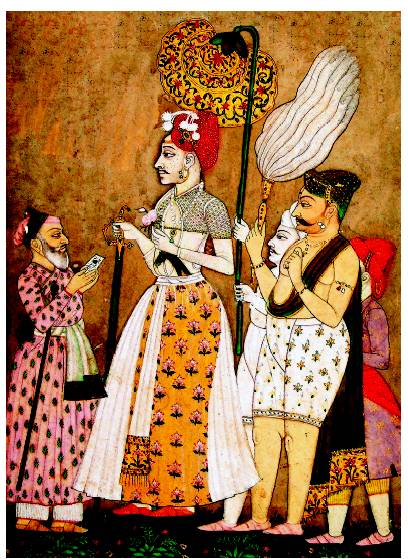
Sadashivrao Peshwa with Ibrahim Khan Gardi
It is true that there were several Muslims working under Shivaji and many more working under Muslim rulers. Similarly it is revealing to see who fought against whom. It becomes very clear that these wars were not Hindus versus Muslims as such. Muslim rulers fought amongst themselves.
Babar, a Muslim, became the Emperor of Delhi by defeating Sultan Ibrahim Khan Lodhi, a Muslim. Babar founded the Mughal dynasty. Both Sher Shah and Humayun were Muslims yet they fought a bitter war against each other. The rulers of Bijapur and Golconda were both Muslims. Aurangzeb fought a protracted war against these so-called Muslim rules. This shows that what was important was not religion but power. If at all religion had any importance it was secondary. The primary concern was political power.
The legendary battle of Haldi was fought between Rana Pratap and Akbar. This battle had a great importance for Rana Pratap in particular, and for Rajputs and Rajasthan in general. But can this battle of Haldi be described, by any stretch of imagination, as a battle between Hindus and Muslims?

Statue of Hakim Khan Soor, Udaipur
Akbar’s army was led by the Rajput Man Singh. That army consisted of 60,000 Mughal troops and 40,000 Rajput troops. Whereas Rana Pratap’s army had 40,000 Rajput soldiers, it consisted of a large division of Pathans under Hakim Khan Soor. It also had a cavalry under a Pathan called Taj Khan. The chief of Rana Pratap’s artillery too was a Muslim Sardar.
In fact Shivaji’s own father, Shahaji, was an influential Sardar working for Adil Shah, Vijapur’s Muslim ruler. Shahaji’s father-in-law, Lakhuji Jadhav, was the Nizam’s Mansabdar in Maharashtra. Adil Shahi’s other Mansabdars included More of Javali, Nimbalkar of Phaltan, Khem Sawant of Sawantwadi and Suryarao Shringarpure of Shringarpur.
Mirza Raja Jai Singh, a high caste Rajput Hindu, came on behalf of the Mughal emperor to defeat Shivaji, force him to sign a humiliating agreement, took him to Agra, where he arrested him and his son Sambhaji. All he was doing was to serve honourably under a Mughal emperor. When Mirza Raja Jai Singh invaded Shivaji’s dominion he had several Hindu Sardars under him. They were Jats, Marathas, Rajputs including Raja Rai Singh Sisodiya, Sujan Singh Bundela, Hari Bhan Gaur, Uday Bhan Gaur, Sher Singh Rathod, Chaturbhuj Chauhan, Mitra Sen, Indra Man Bundela, Baji Chandrarao, Govind Rao, etc.
Tanaji Malusare, a lieutenant of Shivaji, died in action while capturing Fort Kondana. This fort was renamed as Simhagadh to commemorate Tanaji’s heroic sacrifice. The officer in charge of Fort Kondana was a Hindu Rajput, Uday Bhanu, and he was a lieutenant of a Muslim Emperor.
Guru Govind Singh too fought against the central Muslim power. His army also had, along with Sikhs, thousands of Muslims. After Aurangzeb died, there was a fierce struggle for succession among his heirs. Guru Govind Singh helped Bahadur Shah in that feud.
The religious basis behind the uprising by the Jats, Rajputs, Marathas and Sikhs was flimsy. Their uprisings were basically against despotic central rule. The soldiers and noblemen were loyal to their masters irrespective of religion. Neither Hindu nationalism nor the mission of spreading Islam inspired the standing armies of the feudal period. To serve a master as long as he fed, was the general social practice.
Loot and Destruction of Temples
The refrain of fundamentalist Hindu organisations is commonly heard: “The Muslim kings were cruel and barbaric. They destroyed and desecrated temples. They attacked the Hindu religion. Therefore, all the Muslims are necessarily anti-Hindu. And, since they are anti-Hindu, the Hindus also must have to be anti-Muslim.”
Just as Hindu organisations use this kind of argument, the Muslim organisations too use a similar argument.
They tell their followers, “Hindu religion is the religion of Kafirs. What our forefathers did to destroy it was quite correct. If possible, we should also do the same. We should be at least against the Hindus.” The organisations tell their followers to regret the loss of their rule. They use such language to organise themselves on a religious basis.
It is true that the invading Muslim armies, while expanding their rule, looted and destroyed temples. But this is not the whole truth. It is a half-truth. The tribe-like armies of Arabs, Turks and Afghans were not regularly paid. It was an accepted practice for them to loot and keep their share with them as wage. Certain Hindu temples used to be very rich. While looting, the invaders destroyed some temples and divided the booty.
These armies would not care to touch the temples situated atop mountain peaks or deep inside the ravines. What could be the reason for this? The main purpose was to loot the wealth in temples and not to destroy them.
Looting wealth was the prime concern; religion was secondary. Destruction of temples was a means of achieving this purpose. A major portion of this loot went to the king. It was the chief source of the king’s revenue.
A second motive of attacking temples was to discourage the people who live in areas surrounding the temples. The violence was intended to create fear among them, to break their fighting spirit. People believed in religion and in god. It was easy for the invaders to make them believe that those who had looted god would easily loot them too. “Such a powerful god could not do anything; what can we mortals do?” This kind of helplessness and panic would spread all over. This would make it easy for the invaders to conquer the enemy. In Shivaji’s time, temples were not centers of religion alone. They were centers of wealth, of power and status. There was another benefit of looting temples. The invaders claimed that they were breaking the temples of kafirs, that they were destroying their religion. This worked as a camouflage to hide the real thing, the loot of wealth. This would help in garnering support of the priestly elites, mullahs and maulavis, as a device to get the support of the Muslim masses. Religion was used as a ruse to cover foul deeds.
The tribe-like armies of Arabs, Turks and Afghans were not regularly paid. It was an accepted practice for them to loot and keep their share with them as wage. Certain Hindu temples used to be very rich. While looting, the invaders destroyed some temples and divided the booty… The invaders claimed that they were breaking the temples of kafirs, that they were destroying their religion. This worked as a camouflage to hide the real thing, the loot of wealth. This would help in garnering support of the priestly elites, mullahs and maulavis, as a device to get the support of the Muslim masses. Religion was used as a ruse to cover foul deeds.
Loot followed by Endowments
The rulers who initially looted and demolished temples on their way to assuming power, would, once the enemy kingdom was conquered and their own rule was stabilized, award endowments and grants to those very temples. There are numerous such examples. Aurangzeb, who is known as a religious fanatic, destroyed many temples while invading kingdoms to expand his own empire. But the same Aurangzeb donated money to temples. He awarded two hundred villages to the Jagannath temple of Ahmedabad. He donated money to Hindu temples at Mathura and Benaras too. There are differences among scholars as to whether the Adil Shahi commander and Shivaji’s adversary, Afzal Khan, broke the idols in Pandharpur and Tuljapur temples. Some believe he did. Tryambak Shankar Shejwalkar, however, suggests otherwise. He writes that the idols in place today in these temples are quite ancient. Whatever the truth, it is recorded in the chronicles that Afzal Khan, while camping at Wai before launching his assault on Shivaji at Pratapgadh, not only continued the traditional rights of Brahman priests but also awarded new ones. Moreover, can we forget that when Afzal Khan supposedly destroyed the Bhavani temple at Tuljapur, he was accompanied by Pilaji Mohite, Shankarraoji Mohite, Kalyanrao Yadav, Naikji Sarate, Nagoji Pandhare, Prataprao More, Zunjarrao Ghatge, Kate, Baji Ghorpade and Sambhajirao Bhonsle. It is well known that Goddess Sharada temple at Shringeri was damaged while the Marathas looted it in 1791 and the Muslim King Tipu Sultan restored it later.
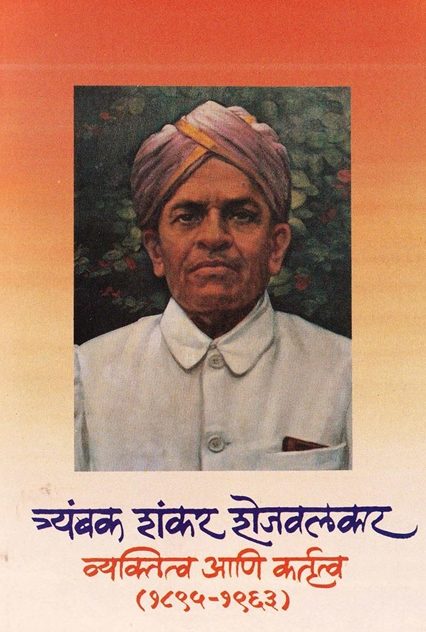
Tryambak Shankar Shejwalkar
Why was money donated to temples after a rule was stabilized? It was done to appease the sentiments of the Hindus and prevent any rebellion against the new rulers. Because of this, the Muslim rulers encouraged such donations.
Political power was the cause for looting and demolishing temples. It was the motivation of political power, once more, that led to the donations of money and property toward the repair of destroyed temples and the construction of new ones.
Political power was the cause for looting and demolishing temples. It was the motivation of political power, once more, that led to the donations of money and property toward the repair of destroyed temples and the construction of new ones.
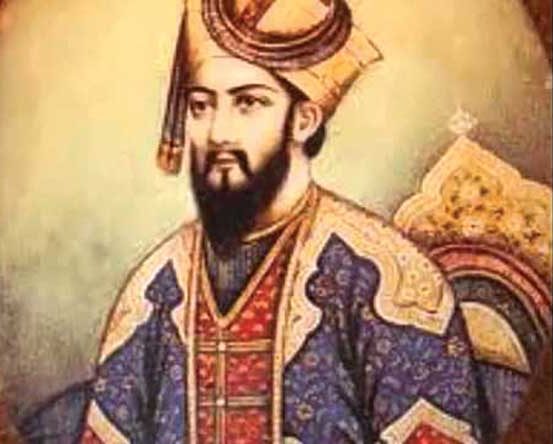
Mohammed bin Tughlaq
Dominance of Power, Subordination of Religion
Muslim kings were not alone in their loot of temples. Hindu kings also looted temples for their wealth.
Chronicles such as Kalhana’s Rajatarangini tell us that Harsha Dev, king of Kashmir, used to loot Hindu temples. He would melt idols for their metals. Harsha would even desecrate the idols by sprinkling them with human waste and urine before melting. What we do not find in these chronicles is evidence of communal riots having taken place because of the desecration of these idols by Harsha. It is telling that the revenue department of Harsha’s administration had a section called Devotpatan, Demolition of Gods.
If the Muslims started being a hindrance and a nuisance to the Muslim rule, the rulers would not hesitate to harass them in spite of the Mullahs and Maulavis. Marathi bakhars accuse Mohammed bin Tughlaq of massacring Mullahs and Sayyeds. Some historical accounts describe the fear amongst Mullahs of Emperor Jahangir. When he approached, some would hide.
What is the conclusion of all this? More important for the rulers of that era was their power, not their religion.
Shivaji’s Wars against Marathas and Hindus
Shivaji fought several big and small wars to found his kingdom. The rulers before him in the area were mainly Muslims. He waged wars against them. At the same time, Shivaji had to fight the Marathas as well. His was not a war against Islam, but a war for power. In Marathi Riyasat, Riyasatkar Sardesai writes, “The war against Vijapurkars did not mean the war between Hindus and Muslims. It could not have acquired such character.” There are meticulously kept historical records about this. It is not right to ignore them.
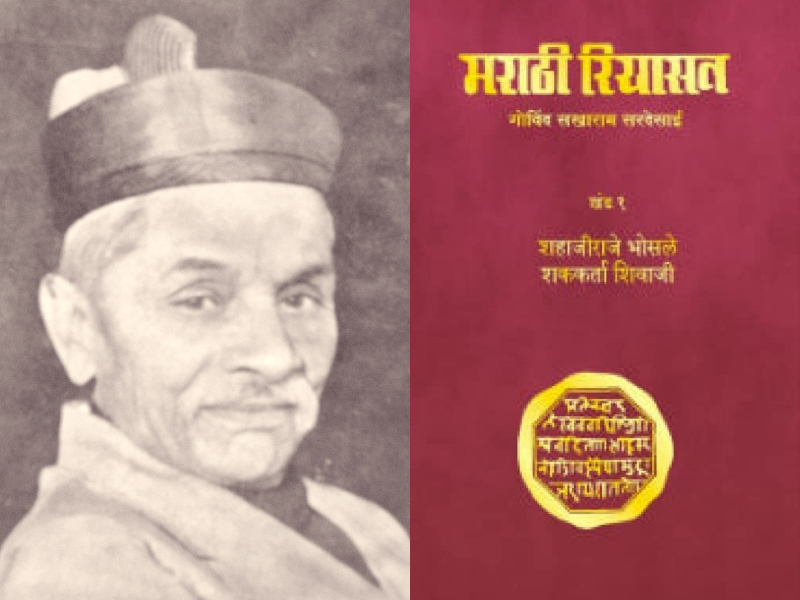
Riyasatkar Sardesai and his Marathi Riyasat
Shivaji faced an enormous challenge from powerful Maratha noblemen who served the Vijapurkars, such as Mohite, Ghorpade, More, Sawant, Dalavi, Surve, and Nimbalkar. Riyasatkar Sardesai, Krisnajee Anant Sabhasad (who wrote a bakhar for Shivaji), Grant Duff and Parasnis list the names of great and powerful Maratha noblemen who opposed Shivaji. They did not respect Shivaji and challenged his authority. Why were these and other such Hindu Maratha noblemen against Shivaji? They were all Hindus. They observed their religion with great faith. If Shivaji had undertaken the cause of protecting the Hindu religion — a Dharmakarya — why should all these Hindu noblemen have opposed him? Sardesai writes, “They feared to lose what they possessed.” What did they possess? Grant Duff describes Shivaji as a destroyer. What did he destroy? “In the regions that he won from the Vijapurkars, Shivaji replaced the old system of monopoly in tax collection with the collection of revenue based on evaluation of yields of crops every year.” This makes Shivaji’s destruction clear. Duff was angry that Shivaji had destroyed the monopoly system. But Capon’s ethical judgment could not help itself, “It was possibly beneficial to the people.” It was obvious who benefitted from Shivaji and who was disenfranchised.
The chief Maratha Hindu noblemen (Ghatge, Khandagale, Baji Ghorpade, Baji Mohite, Nimbalkar, Dabir, More, Bandal Sawant, Surve, Khopade, Pandhare, the Desais of Konkan and the Deshmukhs of Maval) all opposed Shivaji because of their vested interests. Shivaji’s close relations — Vyankoji Bhonsle and Mambaji Bhonsle as well as Jagdevrao Jadhav and Rathoji Mane — stood against him. It is no surprise that when Shaista Khan invaded Shivaji’s dominion from the north, Hindu noblemen accompanied him. Among the Maratha noblemen who joined Shaista Khan, we number Sakhaji Gaikwad, Dinkarrao Kakade, Rambhajirao Pawar, Sarjerao Ghatge, Kamlojirao Kakade, Jaswantrao Kakade. Tryambkrao Khandagale, Kanakojirao Gade, Antajirao and Dattajirao Khandagale. More surprising and painful is the fact that Shivaji’s own blood relations, Tryambakraoji, Jivajirao, Balajiraje and Parasojiraje Bhonsle were with the Mughal warlord, Shaista Khan. This Mughal army included Dattajiraje and Rustumrao Jadhav of Sindkhed. These Jadhavs were from Jijabai’s family. Krishnaji Kalbhor of Loni had joined Shaista Khan with the hope of obtaining the fiefdom of Pune. Shaista Khan confiscated the Deshmukhi from Shitole and awarded it to Kalbhor. Balajirao Honap lived near Lal Mahal in Pune. He had spent some time of his life under the protection of the umbrella of the Swaraj. But he felt more affinity to Shaista Khan than to Shivaji. Such were the Hindus. So much for their religiously-defined identity! Their loyalty was to their fief. It is clear as daylight. The only exception was Kanhoji Jedhe.
Shivaji held a very clear, and very bitter, view of these lords and noblemen. His Prime Minister has said, “They have a natural predisposition, a natural hunger to become powerful, to rob others. They become friendly with the enemy on the eve of the latter’s invasion with the hope of obtaining a fief. They meet the enemy on their own, without invitation. They pass on the secret information and abet the enemy’s entry into our state. They kill the nation.” The fief was all. Their religion was marginal. They burned for their fief, not for their religion.
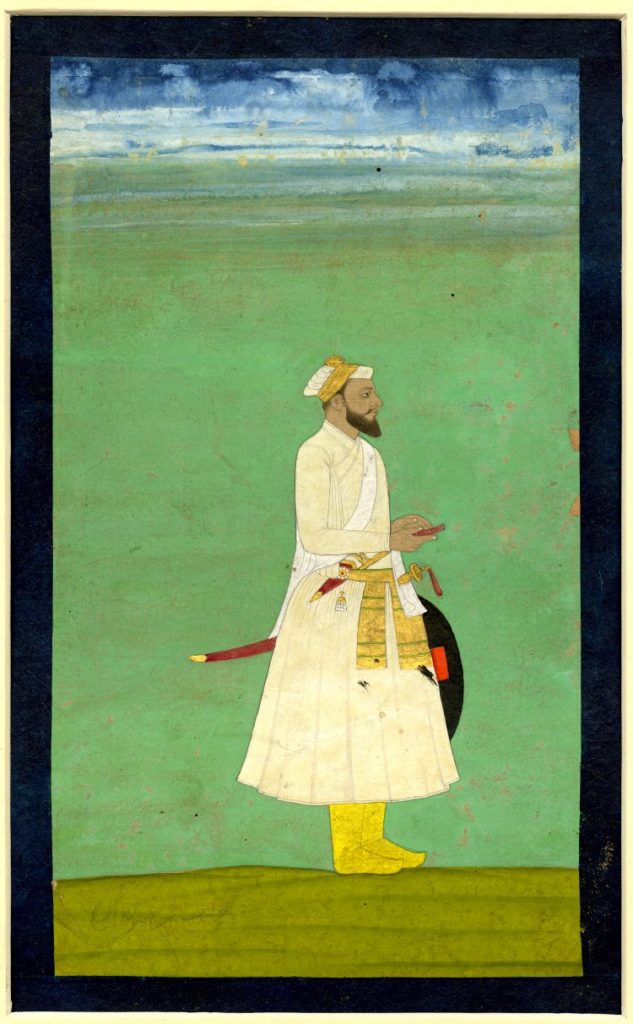
Shaista Khan
Riyasatkar Sardesai, Krisnajee Anant Sabhasad (who wrote a bakhar for Shivaji), Grant Duff and Parasnis list the names of great and powerful Maratha noblemen who opposed Shivaji. They did not respect Shivaji and challenged his authority. Why were these and other such Hindu Maratha noblemen against Shivaji? … Sardesai writes, “They feared to lose what they possessed.” What did they possess? Grant Duff describes Shivaji as a destroyer. What did he destroy? “In the regions that he won from the Vijapurkars, Shivaji replaced the old system of monopoly in tax collection with the collection of revenue based on evaluation of yields of crops every year.”
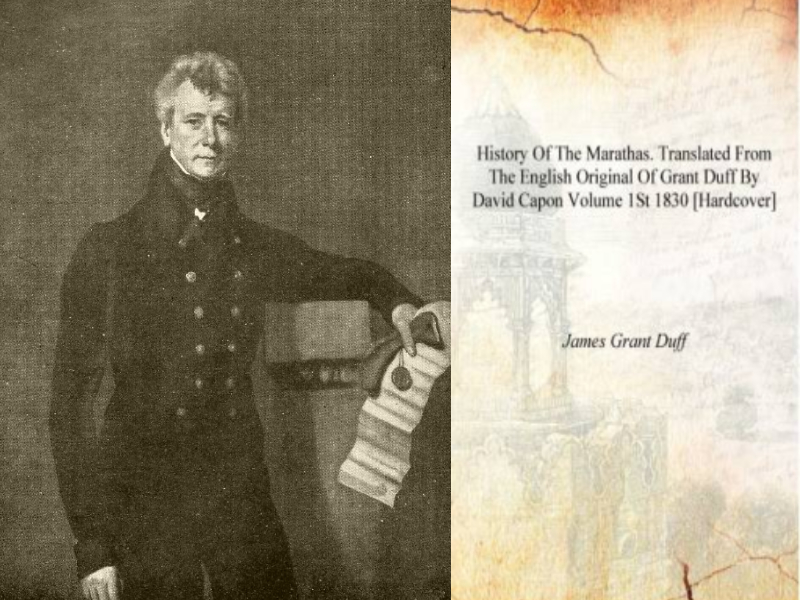
Grant Duff and his History of the Marhattas
Shivaji’s faith
Shivaji was not a non-believer or an atheist. He did not declare his state to be secular. Shivaji was a Hindu. He had faith in religion. He worshipped gods, goddesses and saints as well as donated wealth to temples.
But was he against Islam? If he had faith in his religion, did it mean that he hated Islam? Was it his intention or effort to Hinduise the Muslims? Was he trying to Maharashtrianise them?
If we wish to be faithful to history, the answers to these questions are plainly negative.
Shivaji had looted Surat on two occasions. The detailed accounts of both are well recorded. There are also records of the looting of the market at Junnar and other places. However, is there the tiniest of evidence that he demolished a single mosque? Or is there any evidence of him having constructed a temple in place of a mosque, which was supposed to have been built by demolishing a temple? Not at all. On the contrary, there are records that he donated money and land to mosques. Sabhasad’s Bakhar notes, “There were places of worship all over. Proper arrangement of their worship and care was made. He also looked after the arrangements in pirs and mosques.”
What was true of the mosques was also true of the Muslim sadhus and saints. Shivaji and his contemporary Marathas and Hindus worshipped and donated money to dargahs. They respected Muslim sadhus, pirs and fakirs. Shivaji had many gurus. They included a Muslim saint called Yakut Baba.
Shivaji’s tolerance for Muslim religion is recorded in many ways in historical documents. Khafi Khan’s Muntakhabu-l Lubab notes, “Shivaji had made a strict rule that wherever his soldiers went they were not to harm mosques, the Quran or women. If he found a volume of Quran, he would show respect to it and hand it over to his Muslim servant. If any helpless Hindu or Muslim were found, Shivaji would personally look after them until their relatives came to take them.” Shivaji’s chief justice, Raghunath Pandit Rao, in a letter of 2nd November 1669 writes, “Shrimant Mararaj has ordained that everybody is free to follow his religion and nobody is allowed to disturb it.”
Those who try to appropriate Shivaji for their narrow purposes will have to answer for the historical record. If there are any buyers for their hatred for Islam they should sell it on their own merit. They should not sell their commodity in Shivaji’s name. They should not sell that commodity under the brand of Shivaji.
At the same time, Muslims should not equate Shivaji with his image created by these so-called Shivabhaktas. They should look at history; they should appreciate his attitude to Islam. Only then should they form their opinion.
Shivaji was Hindu and he believed in his religion. But, as the king, he did not discriminate against his people on the basis of religion. He did not treat Hindus in one way and Muslims in another. He did not discriminate against Muslims because they belonged to another religion. Both Hindus and Muslims must understand this.
There were two kinds of Islamic kings. Some, like Akbar, were tolerant to Hindus. Some, like Aurangzeb, were intolerant. Aurangzeb levied the jaziya tax at the behest of the mullahs and the maulvis. There was an uprising against this tax. Shivaji wrote a letter, in Persian, to Aurangzeb about this. The letter gives a graphic idea of how Shivaji looked at various religions. Shivaji writes that levying the jaziya tax on the poor and helpless populace is against the basic tenets of Mughal rule. Aurangzeb’s great-grandfather Akbar had ruled for fifty-two years. He treated everyone with justice. The people therefore honored him as Jagatguru. Jahangir and Shah Jahan continued his policy. All of them became famous all over the world for this. These emperors could easily have collected the jaziya tax, but they did not do so. That is why they could become so rich and so honoured. Their empires grew. But in Aurangzeb’s rule both Hindu and Muslim soldiers were unhappy. The price of grains went up. It was not reasonable, as far as Shivaji was concerned, for the empire to collect the jaziya tax from poor Brahmans, Jogis, Bairagis, Jain Sadhus and Sanyasis. Such an act would ultimately only discredit the Mughal dynasty. Shivaji writes, “The Quran is the word of God himself. It is a heavenly Book. It calls God the ‘God of the entire World.’ It does not call him the God of Muslims alone. This is because both Hindus and Muslims are one before him. When the Muslims pray in the mosques, they in fact pray to Bhagwan. And Hindus too do the same when they toll the bell in a temple. To oppress a religion is therefore to pronounce enmity with God.”
Shivaji therefore appeals to Aurangzeb not to ignore reason. The Sultan of Gujarat had earlier sacrificed reason. But he had to pay for it. The Emperor would have to pay similarly. “Any inflammable matter burns out if it comes in contact with fire. Similarly, any rule perishes in people’s discontent. The fire of rebellion, born of the torture of innocents, can burn the whole kingdom faster than any fire. The Emperor therefore should not discriminate against any religious creed and oppress them. People, like insects, are harmless. However, if Hindu people are subjected to misery, your empire will be reduced to ashes in the fire of their anger.”
Shivaji has propounded an important principle for us Indians here. Akbar and other emperors did not subject the Indian people to religious cruelty and oppression. Because of such religious tolerance Akbar was hailed as Jagatguru. But Aurangzeb, by taxing poor people, acted against the principles of Islam. If the Quran is the word of God, for God Hindus and Muslims are not different. If the king harms people, they will destroy him, however powerful he might be.
In the context of his time, Shivaji’s thoughts and his policy were unique and unparalleled. Religion had a deep impact upon people’s life. But Shivaji taught us that other religions are as great as one’s own religion, and that though the forms of worship in each religion are different their goal is one. The thoughts of Akbar, Dara Shikoh and Ibrahim Adil Shah were not different from this.
Shivaji was religious. He was proud of being a Hindu. He awarded large gifts to temples and Brahmans. All this is true. However, his pride in his religion was not based on the hatred for other religions. He never thought that he could not be a great Hindu unless he hated Muslims. Even in medieval times his faith in religion was rational.
Shivaji had looted Surat on two occasions. The detailed accounts of both are well recorded. There are also records of the looting of the market at Junnar and other places. However, is there the tiniest of evidence that he demolished a single mosque? Or is there any evidence of him having constructed a temple in place of a mosque, which was supposed to have been built by demolishing a temple? Not at all. On the contrary, there are records that he donated money and land to mosques. Sabhasad’s Bakhar notes, “There were places of worship all over. Proper arrangement of their worship and care was made. He also looked after the arrangements in pirs and mosques.”
What was true of the mosques was also true of the Muslim sadhus and saints. Shivaji and his contemporary Marathas and Hindus worshipped and donated money to dargahs. They respected Muslim sadhus, pirs and fakirs. Shivaji had many gurus. They included a Muslim saint called Yakut Baba.
Shivaji’s tolerance for Muslim religion is recorded in many ways in historical documents. Khafi Khan’s Muntakhabu-l Lubab notes, “Shivaji had made a strict rule that wherever his soldiers went they were not to harm mosques, the Quran or women. If he found a volume of Quran, he would show respect to it and hand it over to his Muslim servant. If any helpless Hindu or Muslim were found, Shivaji would personally look after them until their relatives came to take them.” Shivaji’s chief justice, Raghunath Pandit Rao, in a letter of 2nd November 1669 writes, “Shrimant Mararaj has ordained that everybody is free to follow his religion and nobody is allowed to disturb it.”
Letter from Shivaji to Aurangzeb About Jaziya Tax
Circa 1657
From Shivaji, true to His Words, to Aurangzeb
I had to leave, due to a quirk of Destiny, without a
farewell. . . .
After our return we heard that the Emperor’s treasury has become empty. It is also learnt that the government of the Empire is running its daily administration by collecting jaziya from Hindus. In fact, formerly, Emperor Akbar ruled with great equanimity for fifty-two years. Therefore, apart from the Daudis and Mohammedis, the religious practices of Hindus such as Brahmans and Shevades were protected. The Emperor helped these religions. Therefore, he was hailed as a Jagatguru. This ensured success to him in all the endeavours that he undertook. He conquered land after land. After him Emperor Nuruddin Jehangir ruled for twenty-two years with the blessings of the Almighty and went to the heaven. Shah Jahan too ruled for thirty-two years. They were brave Emperors and earned great respect. They established many new practices. They too were capable of levying the jaziya. But all, small and big, follow their own religion and are God’s children. In spite of all this they never resorted to injustice. Even now all sing in their praise. All, big and small, feel blessed by them. One reaps as one sows. Those Emperors had always their eyes fixed on people’s welfare. Now, under your rule, you have lost many forts and provinces. The rest are also likely to be lost. This is because you do not spare in doing everything that is base. The ryots have become miserable. None of the revenue divisions is paying you even one per cent of its total produce. Even the Emperor and his progeny are living in impoverished condition. It is therefore not hard to imagine under what conditions the other lords must be living. In sum, soldiers are frustrated, merchants are howling and Muslims are crying. Hindus burn from within. Several cannot get sufficient food to eat. Is this governance? Over and above all this, there is jaziya. The word has spread east and west, far and wide, that the Emperor of Hindustan levies jaziya on Fakirs, Brahmans, Shevades, Jogis, Sanyasis, Bairagis, poor and miserable. The Emperor takes pride in this and even surpasses Emperor timur’s deeds. The Quran is a Heavenly Book. It is God’s utterance. It commands that God belongs to all Muslims and, in fact, the entire world. Good or bad, both are God’s creation. In masjids, it is He who is prayed. In temples, it is He for whom the bells are tolled. to oppose anyone’s religion is like forsaking one’s own religion. It is wiping out what God wrote; it is to blame God Himself. You should therefore discriminate between good and bad. This is all the more necessary as defaming matter is like defaming the Creator of matter Himself. Jaziya can in no way be called just. Sultan Ahmed Gujrathi ruled in this manner and soon bit dust. Those who are made to suffer injustice finally blow out smoke through their mouth hotter than even the fire that burns the Devil. The perpetrator burns out faster than the Devil himself. So it is advisable that the soiled mind is washed sooner than later. Above all this, if you feel that the true religion is in persecuting Hindus, you should first collect the jaziya from Raja Jai Singh. Others will easily follow suit. The poor are like ants and gnats. There is nothing heroic in persecuting them. It is very surprising to see that even loyal ones blatantly try to hide fire under hay. So be it. Let the Sun of the Empire shine bright from the Eastern Mountains of Heroism.
This excerpt has been carried courtesy the permission of LeftWord Books. You can buy Who Was Shivaji? here.
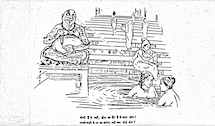
In the colonial period, the threat of the lecherous male gaze was used by the new patriarchy to restrict access to employment and public space for women, maintaining a patriarchal division of labour. Read how this process unfolded in our newest excerpt.
Saurav Kumar Rai
__

Was Lala Lajpat Rai's Hindu nationalism congruent with the principles of secularism? Explore our latest excerpt from Vanya Vaidehi Bhargav's fresh off-the-press book - Being Hindu, Being Indian: Lala Lajpat Rai's Ideas of Nation for more.
Vanya Vaidehi Bhargav
__
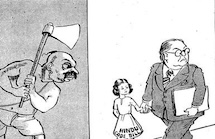
Popularly, we think that political cartoons question the powerful but what if this was not the case? What if political cartoons, replicated structures of the socially dominant? Read how in our new excerpt on political cartoons featuring Dr. Ambedkar.
Unnamati Syama Sundar
__

On Martyrs' day 2024, read the poet Sarojini Naidu's tribute to Gandhi given over All India Radio two days after his assassination.
Sarojini Naidu
__
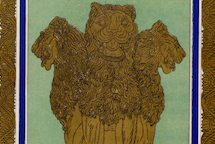
On Republic Day, the Indian History Collective presents you, twenty-two illustrations from the first illustrated manuscript (1954) of our Constitution.
Indian History Collective
__
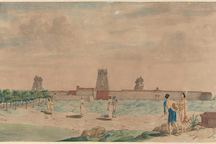
One of the key petitioners in the Ayodhya title dispute was Bhagwan Sri Ram Virajman. This petitioner was no mortal, but God Ram himself. How did Ram find his way from heaven to the Supreme Court of India to plead his case? Read further to find out.
Richard H Davis
__
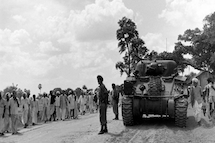
Labelled "one of the shortest, happiest wars ever seen", the integration of the princely state of Hyderabad in 1948 was anything but that. Read about the truth behind the creation of an Indian Union, the fault lines left behind, and what they signify
Afsar Mohammad
__
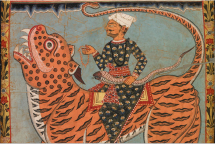
How did Bengal get a large Muslim population? Was it conversion by ruling elites was there something deeper at play? Read Dr. Eaton's classic essay to find out.
Richard Eaton
__
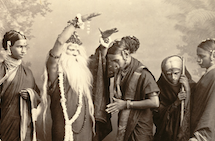
An excerpt from Shailaija Paik's new book 'Vulgarity of Caste' that documents the pivotal role Tamasha (the popular art form) has played in reinforcing and producing caste dynamics in Marathi society.
Shailaja Paik
__
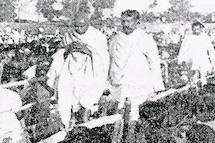
In 1942, two sub-districts in Bengal declared independence and set up a parallel government. The second part of our story brings you archival papers in the form of letters, newspaper reports, and judicial records documenting this remarkable movement.
Indian History Collective
__
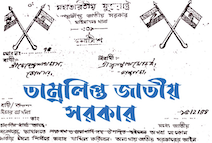
In 1942, five years before India was independent, two sub-divisions in Bengal not only declared their independence— they also instituted a parallel government. The first in a new series.
Indian History Collective
__
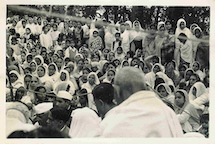
In his own words, read Mohandas Karamchand Gandhi's views on the proselytising efforts taken on by the organisations such as Arya Samaj, Tabhligi Jamaat, and the Church Missionary Society of England.
Mohandas Karamchand Gandhi
__
TIMELINE
-
2500 BC - Present 
2500 BC - Present Tribal History: Looking for the Origins of the Kodavas -
2200 BC to 600 AD 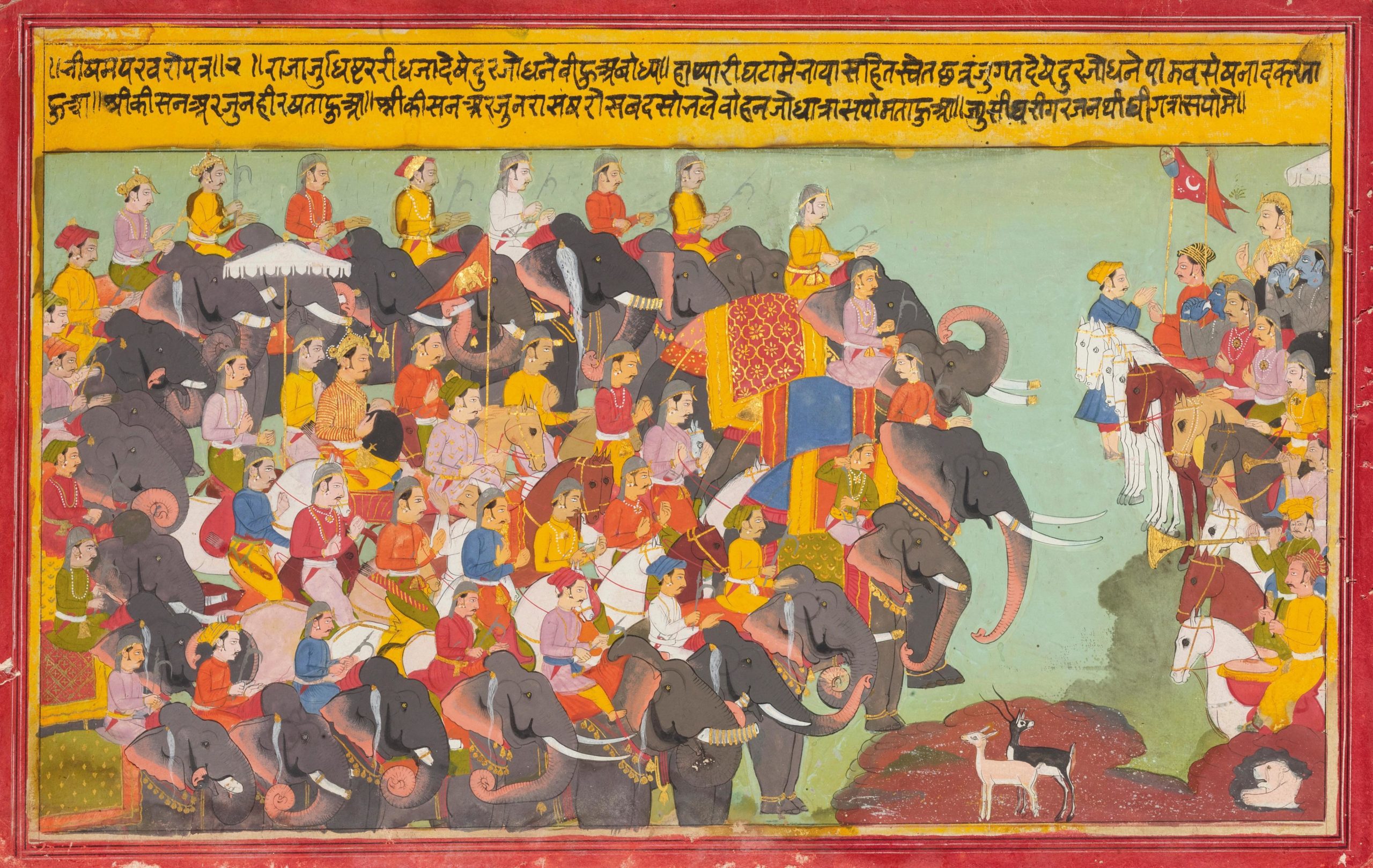
2200 BC to 600 AD War, Political Violence and Rebellion in Ancient India -
400 BC to 1001 AD 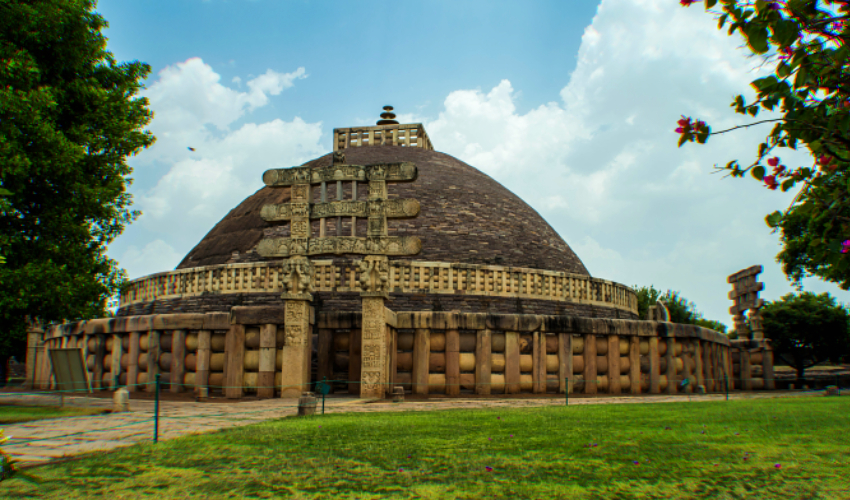
400 BC to 1001 AD The Dissent of the ‘Nastika’ in Early India -
600CE-1200CE 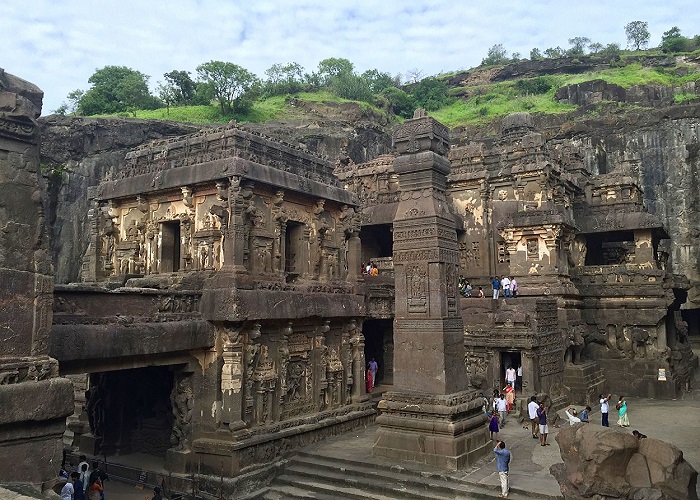
600CE-1200CE The Other Side of the Vindhyas: An Alternative History of Power -
c. 700 - 1400 AD 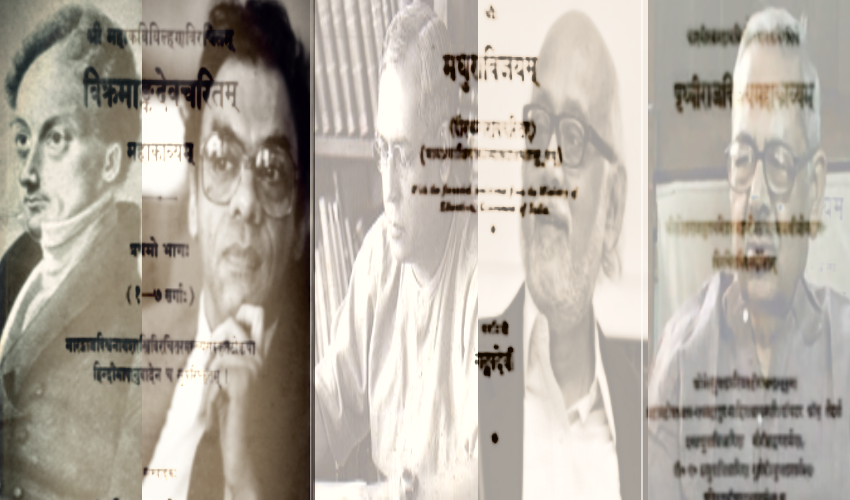
c. 700 - 1400 AD A Historian Recommends: Representing the ‘Other’ in Indian History -
c. 800 - 900 CE 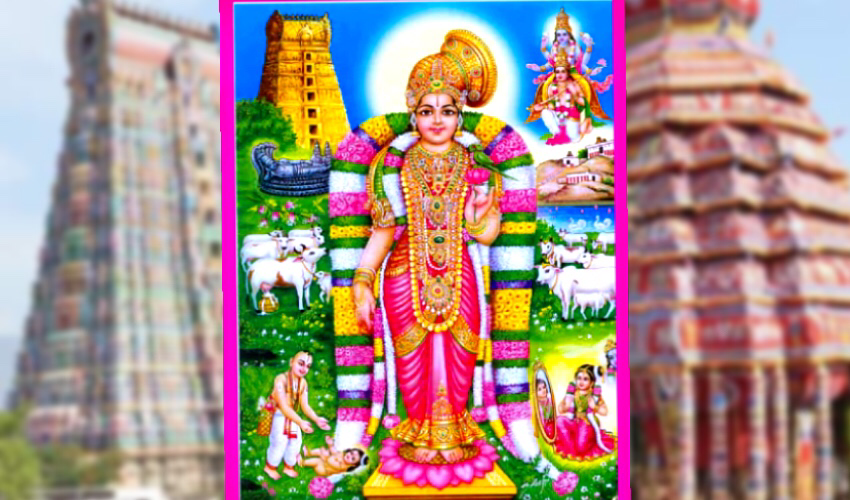
c. 800 - 900 CE ‘Drape me in his scent’: Female Sexuality and Devotion in Andal, the Goddess -
1192 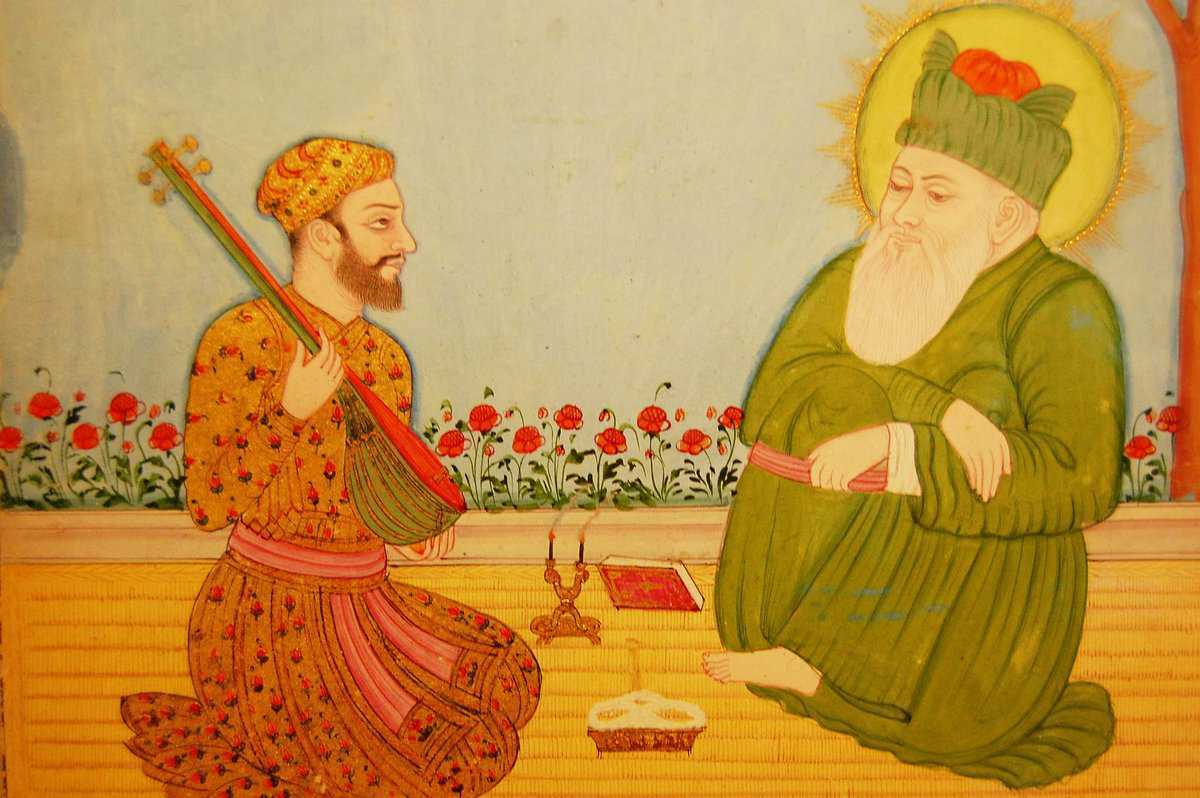
1192 Sufi Silsilahs: The Mystic Orders in India -
1200 - 1850 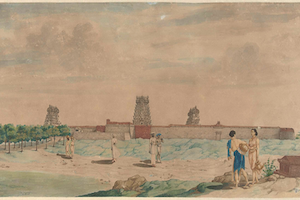
1200 - 1850 Temples, deities, and the law. -
c. 1500 - 1600 AD 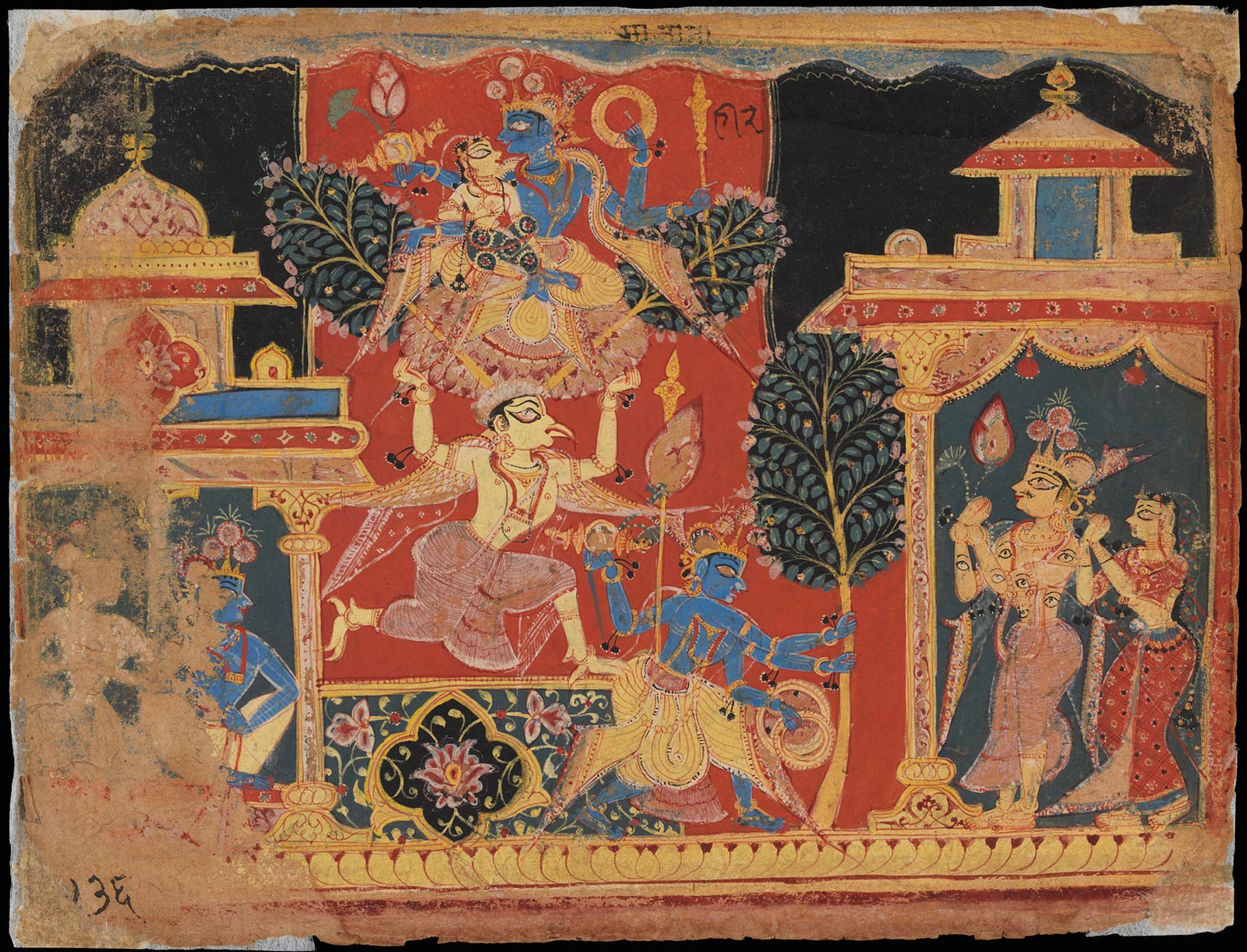
c. 1500 - 1600 AD A Historian Recommends: Religion in Mughal India -
1200-2020 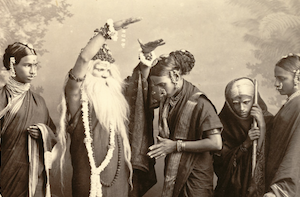
1200-2020 Policing Untouchables and Producing Tamasha in Maharashtra -
1530-1858 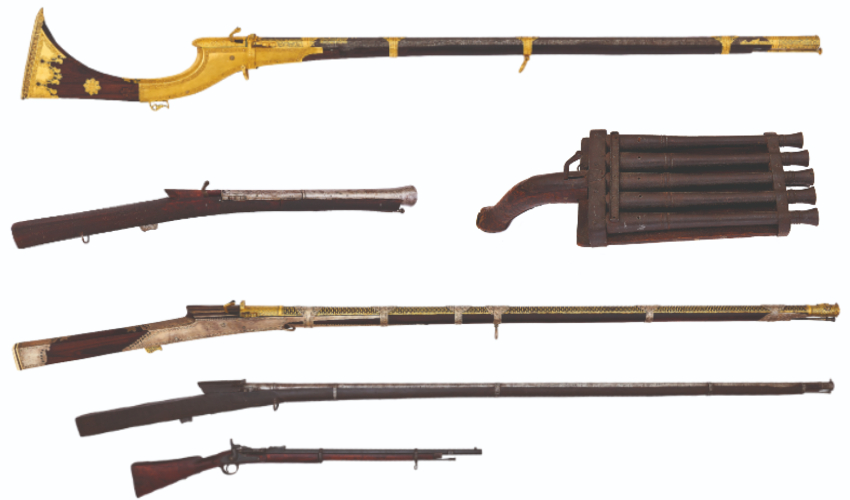
1530-1858 Rajputs, Mughals and the Handguns of Hindustan -
1575 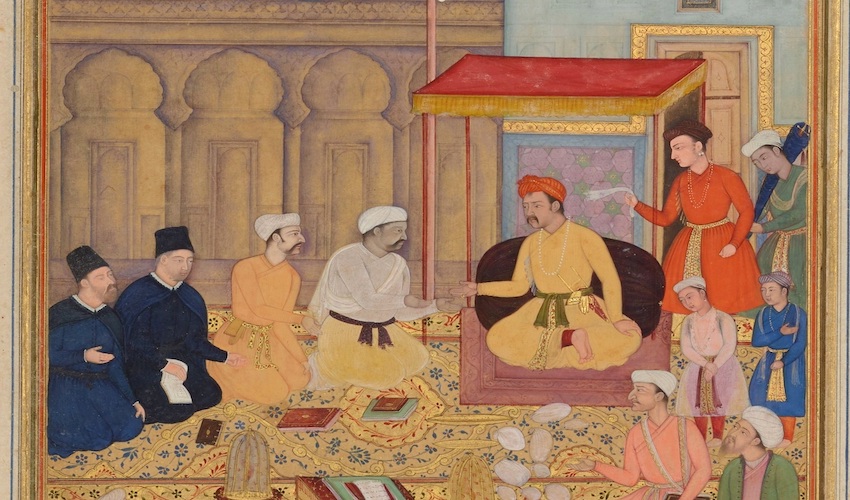
1575 Abdul Qadir Badauni & Abul Fazl: Two Mughal Intellectuals in King Akbar‘s Court -
1579 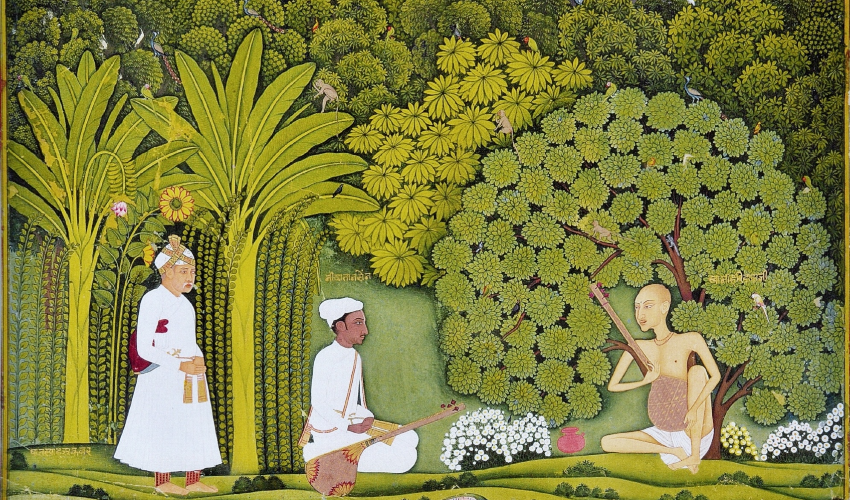
1579 Padshah-i Islam -
1550-1800 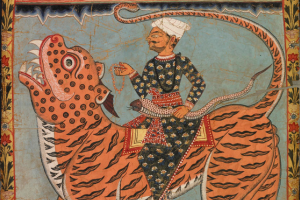
1550-1800 Who are the Bengal Muslims? : Conversion and Islamisation in Bengal -
c. 1600 CE-1900 CE 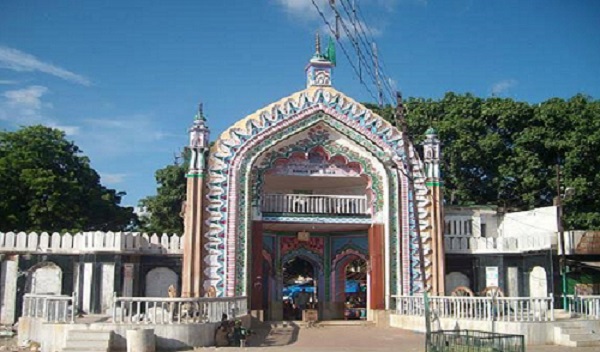
c. 1600 CE-1900 CE The Birth of a Community: UP’s Ghazi Miyan and Narratives of ‘Conquest’ -
1553 - 1900 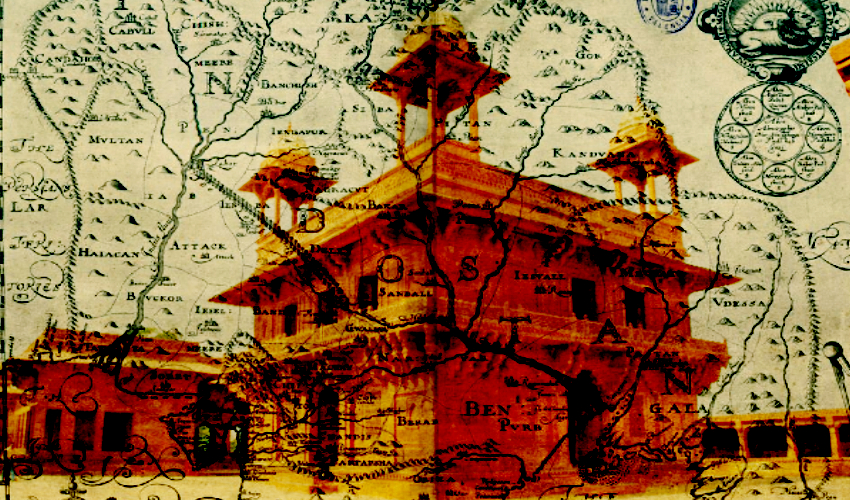
1553 - 1900 What Happened to ‘Hindustan’? -
1630-1680 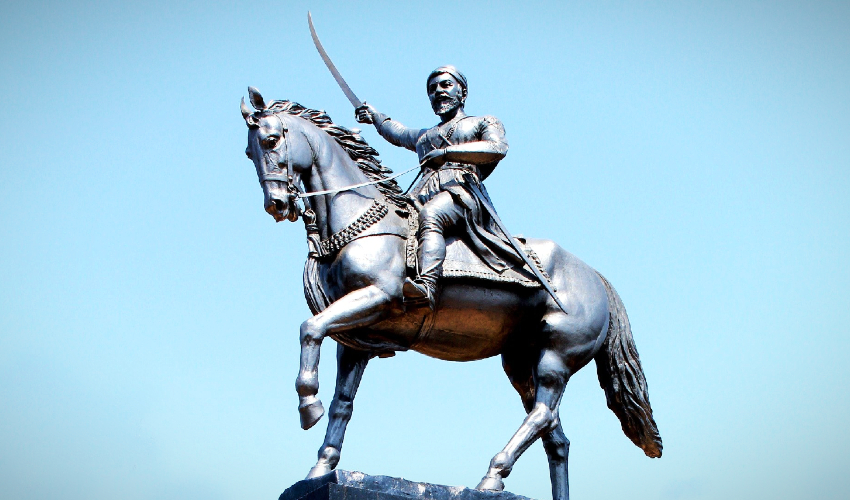
1630-1680 Shivaji: Hindutva Icon or Secular Nationalist? -
1630 -1680 
1630 -1680 Shivaji: His Legacy & His Times -
c. 1724 – 1857 A.D. 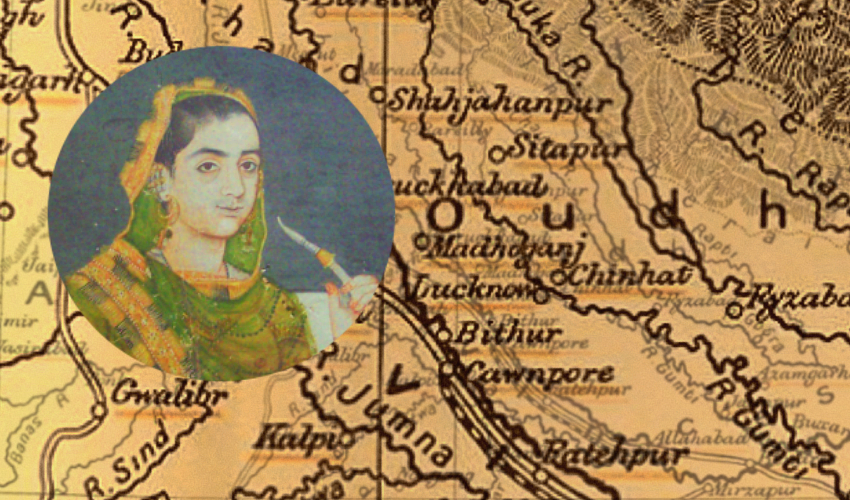
c. 1724 – 1857 A.D. Bahu Begum and the Gendered Struggle for Power -
1818 - Present 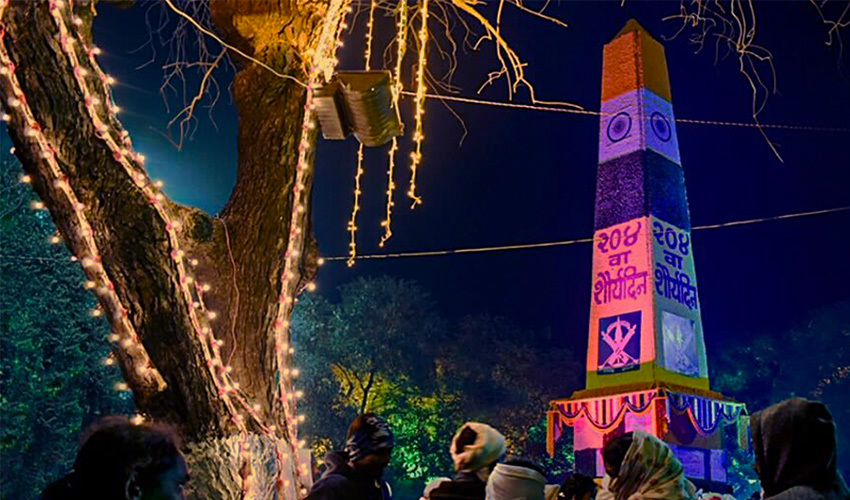
1818 - Present The Contesting Memories of Bhima-Koregaon -
1831 
1831 The Derozians’ India -
1855 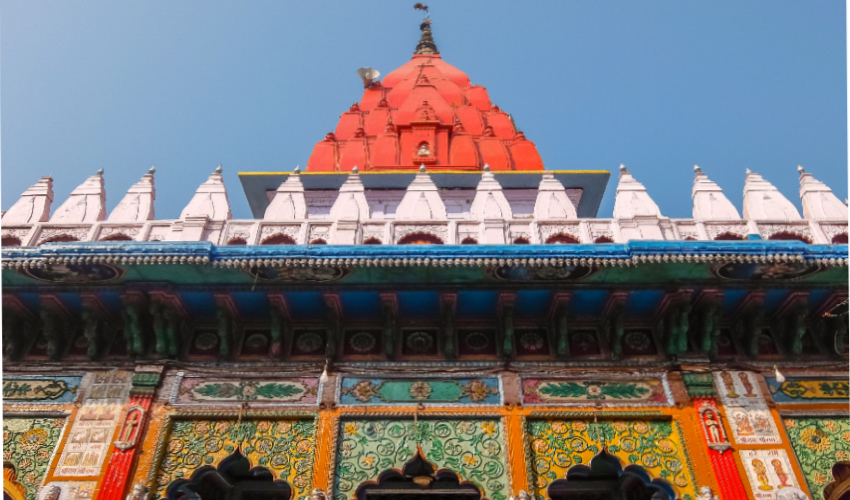
1855 Ayodhya 1855 -
1856 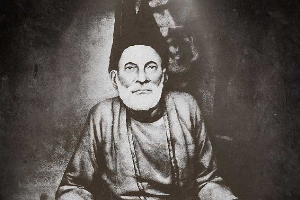
1856 “Worshipping the dead is not an auspicious thing” — Ghalib -
1857 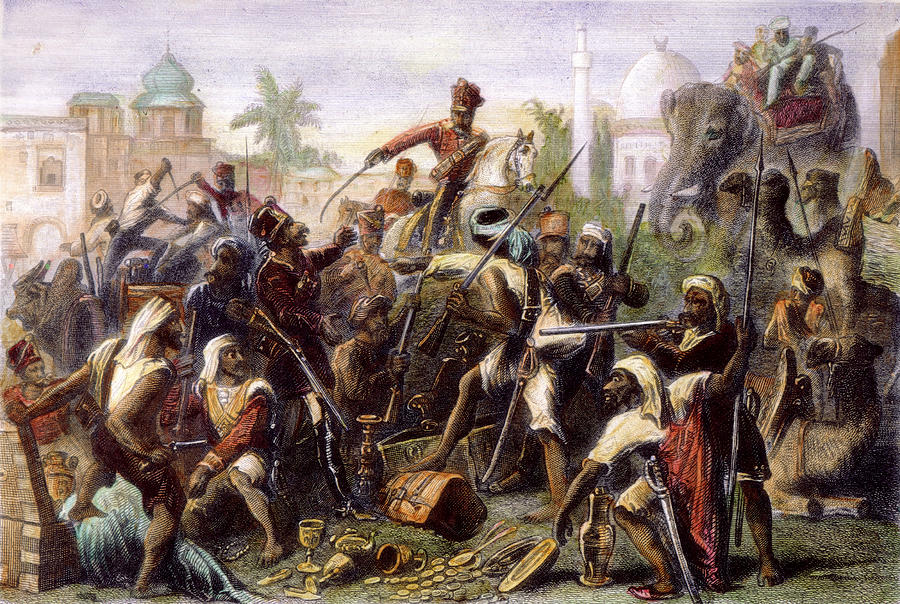
1857 A Subaltern speaks: Dalit women’s counter-history of 1857 -
1858 - 1976 
1858 - 1976 Lifestyle as Resistance: The Curious Case of the Courtesans of Lucknow -
1883 - 1894 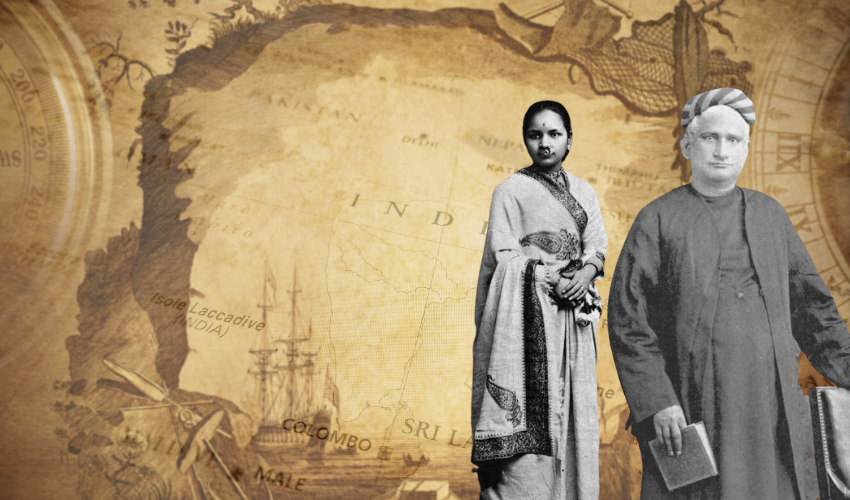
1883 - 1894 The Sea Voyage Question: A Nineteenth century Debate -
1887 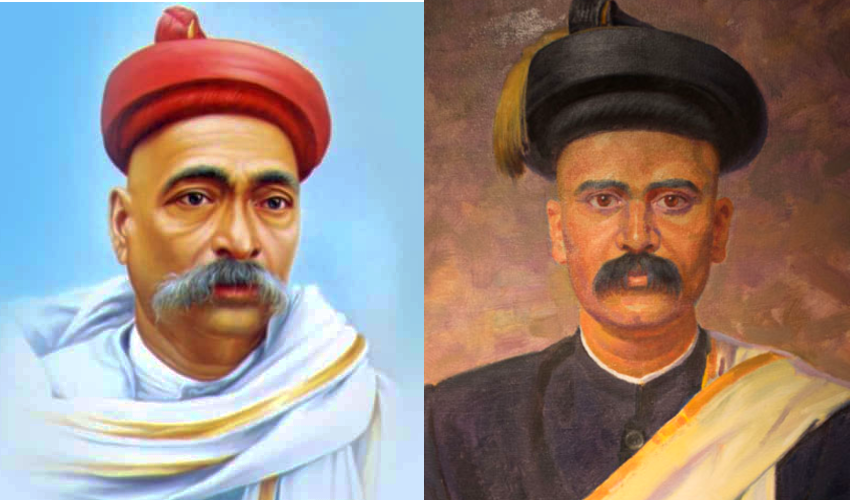
1887 The Great Debaters: Tilak Vs. Agarkar -
1893-1946 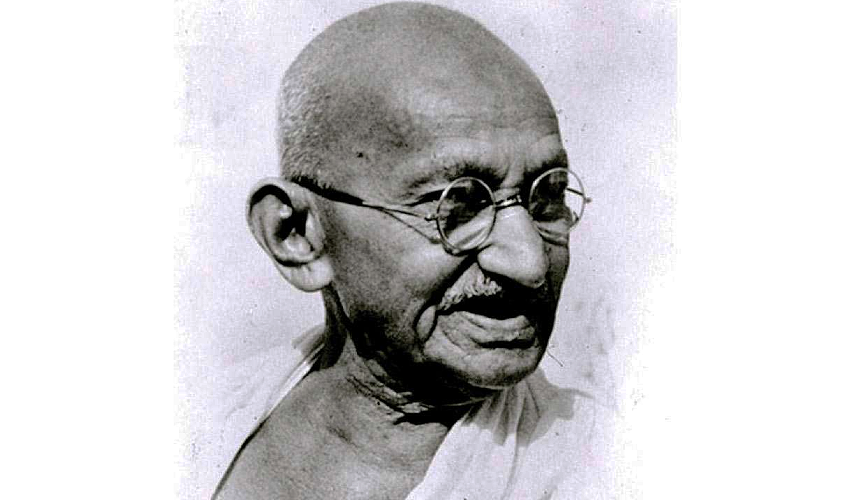
1893-1946 A Historian Recommends: Gandhi Vs. Caste -
1897 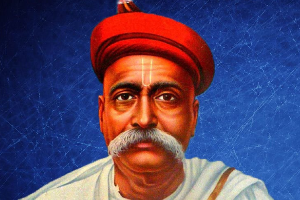
1897 Queen Empress vs. Bal Gangadhar Tilak: An Autopsy -
1913 - 1916 Modern Review 
1913 - 1916 A Young Ambedkar in New York -
1916 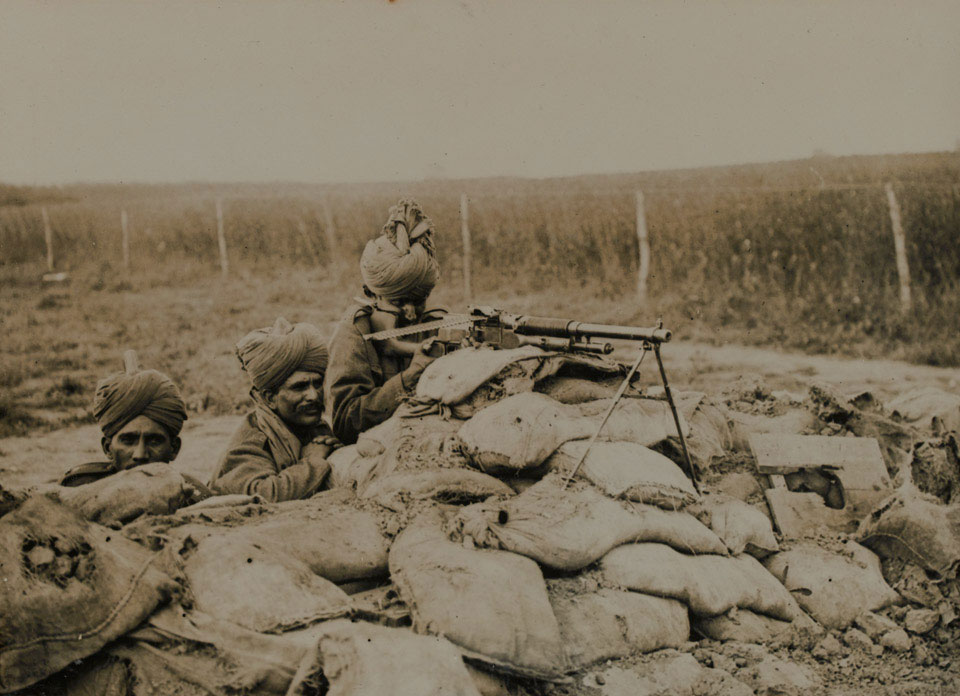
1916 A Rare Account of World War I by an Indian Soldier -
1917 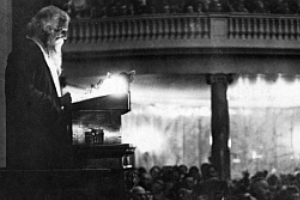
1917 On Nationalism, by Tagore -
1918 - 1919 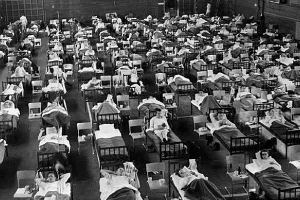
1918 - 1919 What Happened to the Virus That Caused the World’s Deadliest Pandemic? -
1920 - 1947 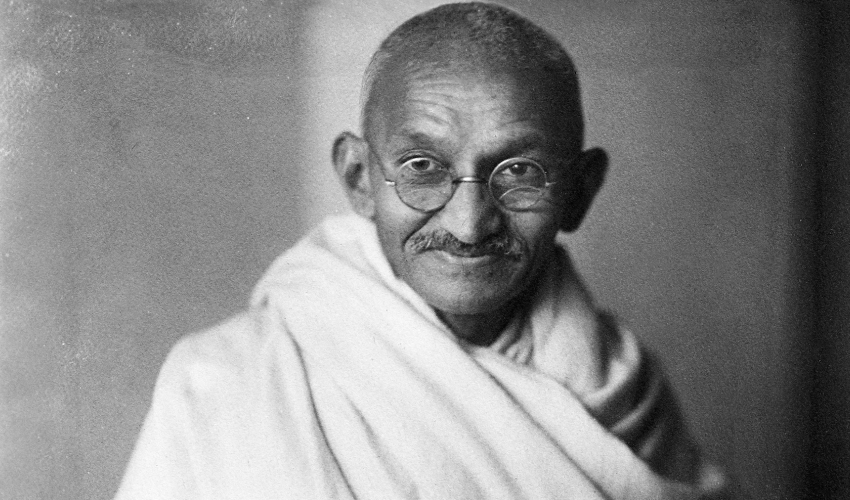
1920 - 1947 How One Should Celebrate Diwali, According to Gandhi -
1921 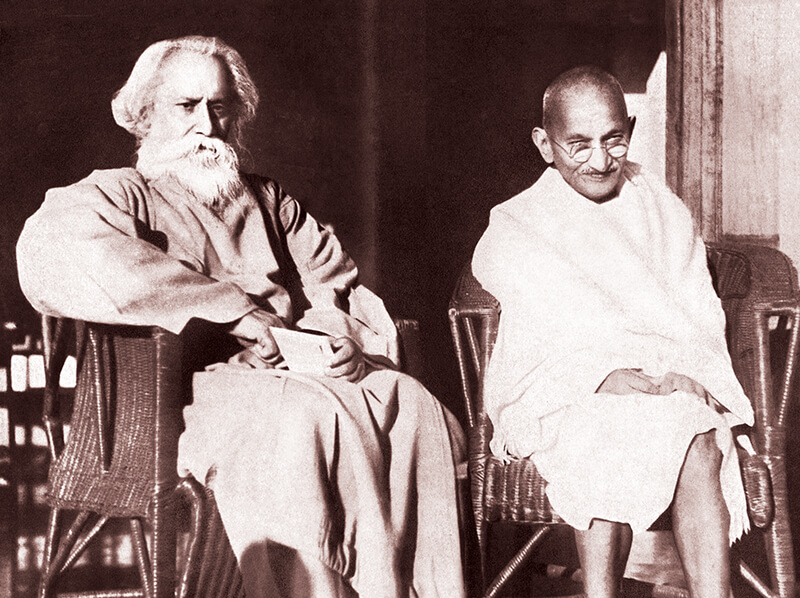
1921 Great Debates: Tagore Vs. Gandhi (1921) -
1921 - 2015 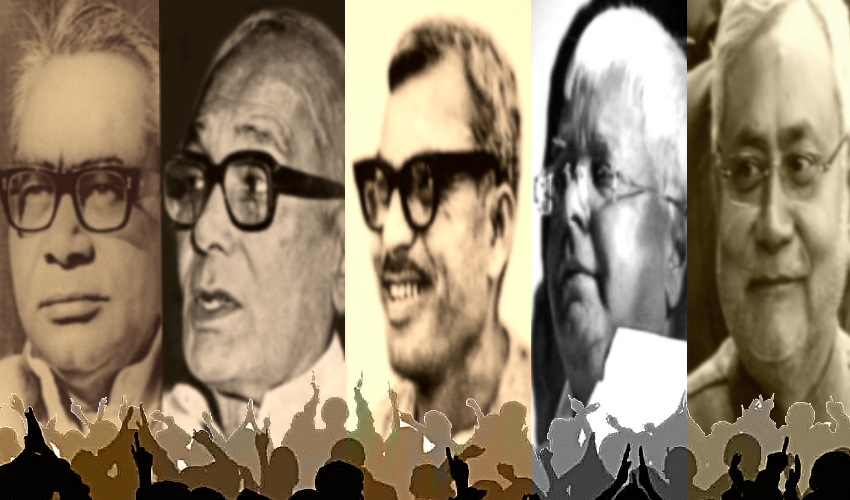
1921 - 2015 A History of Caste Politics and Elections in Bihar -
1915-1921 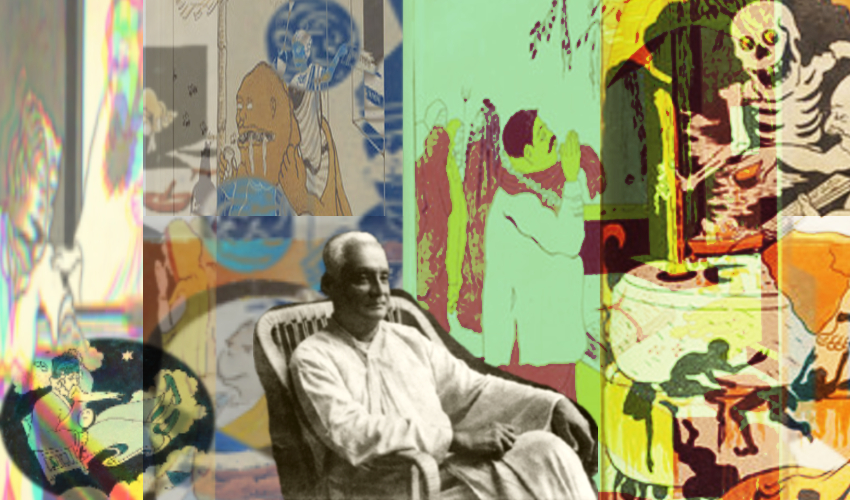
1915-1921 The Satirical Genius of Gaganendranath Tagore -
1924-1937 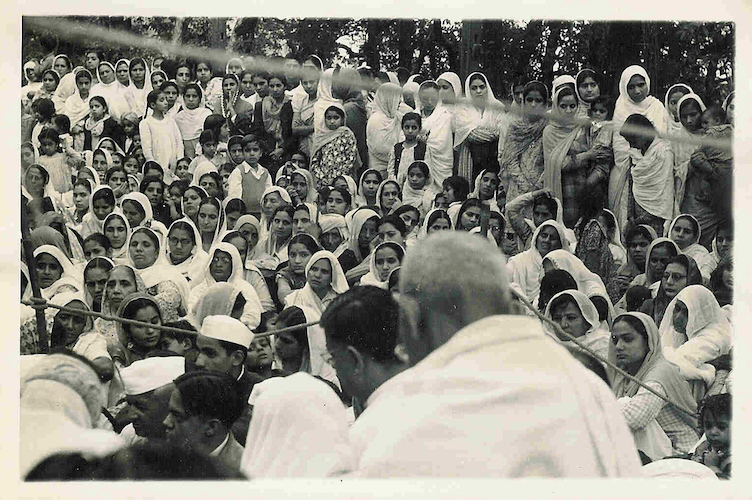
1924-1937 What were Gandhi’s Views on Religious Conversion? -
1900-1950 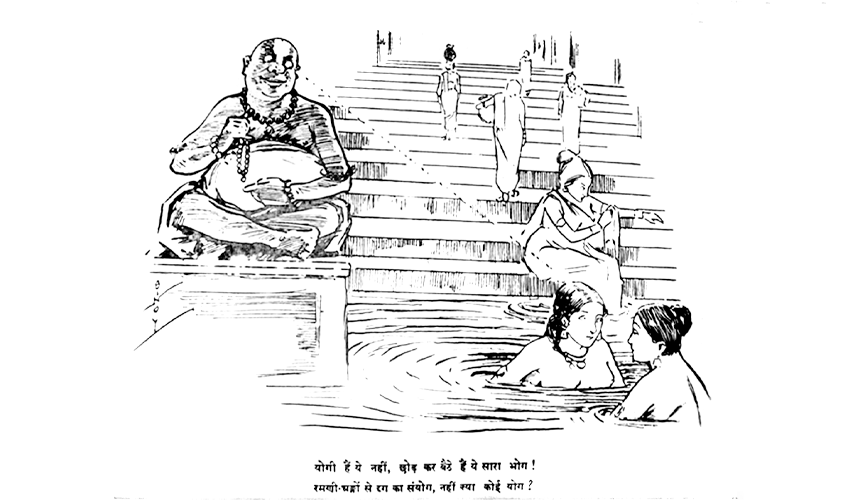
1900-1950 Gazing at the Woman’s Body: Historicising Lust and Lechery in a Patriarchal Society -
1925, 1926 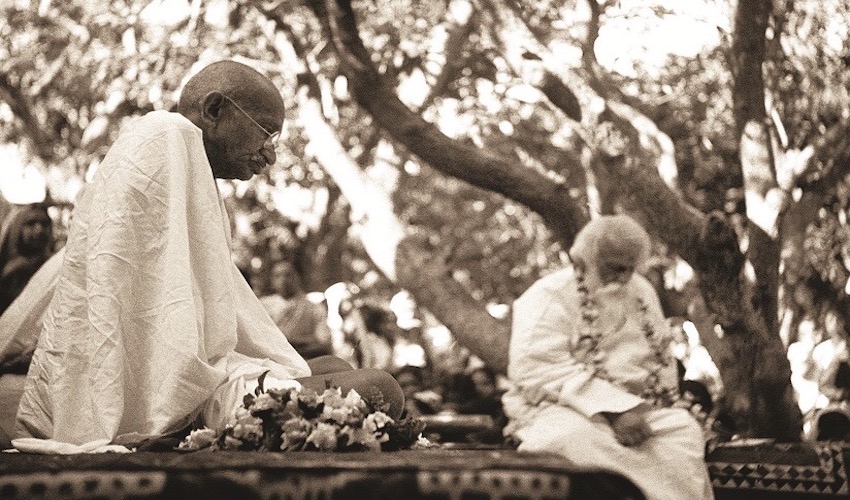
1925, 1926 Great Debates: Tagore vs Gandhi (1925-1926) -
1928 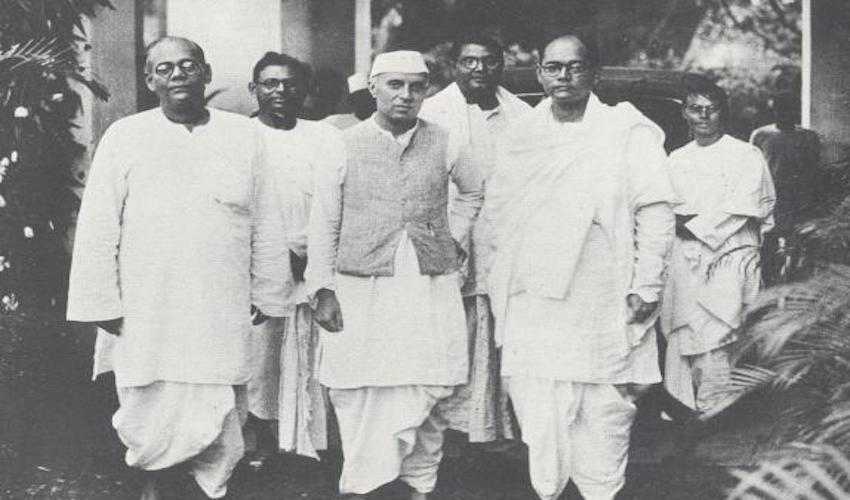
1928 Bhagat Singh’s dilemma: Nehru or Bose? -
1930 Modern Review 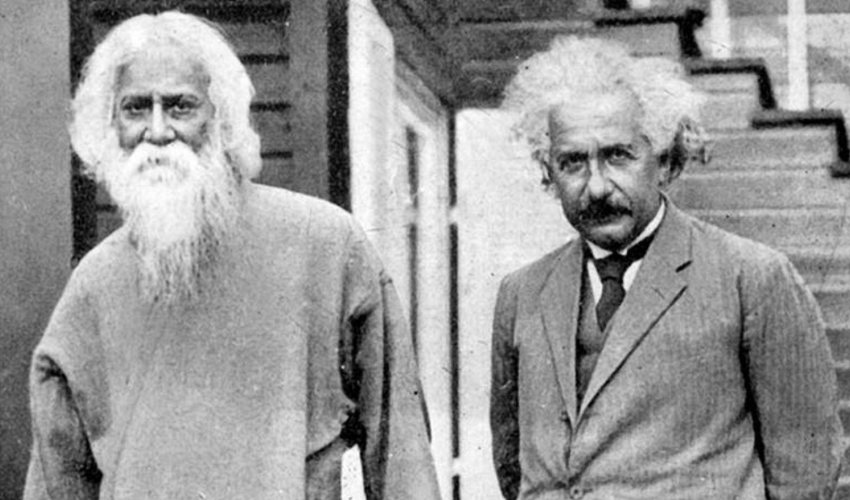
1930 The Modern Review Special: On the Nature of Reality -
1932 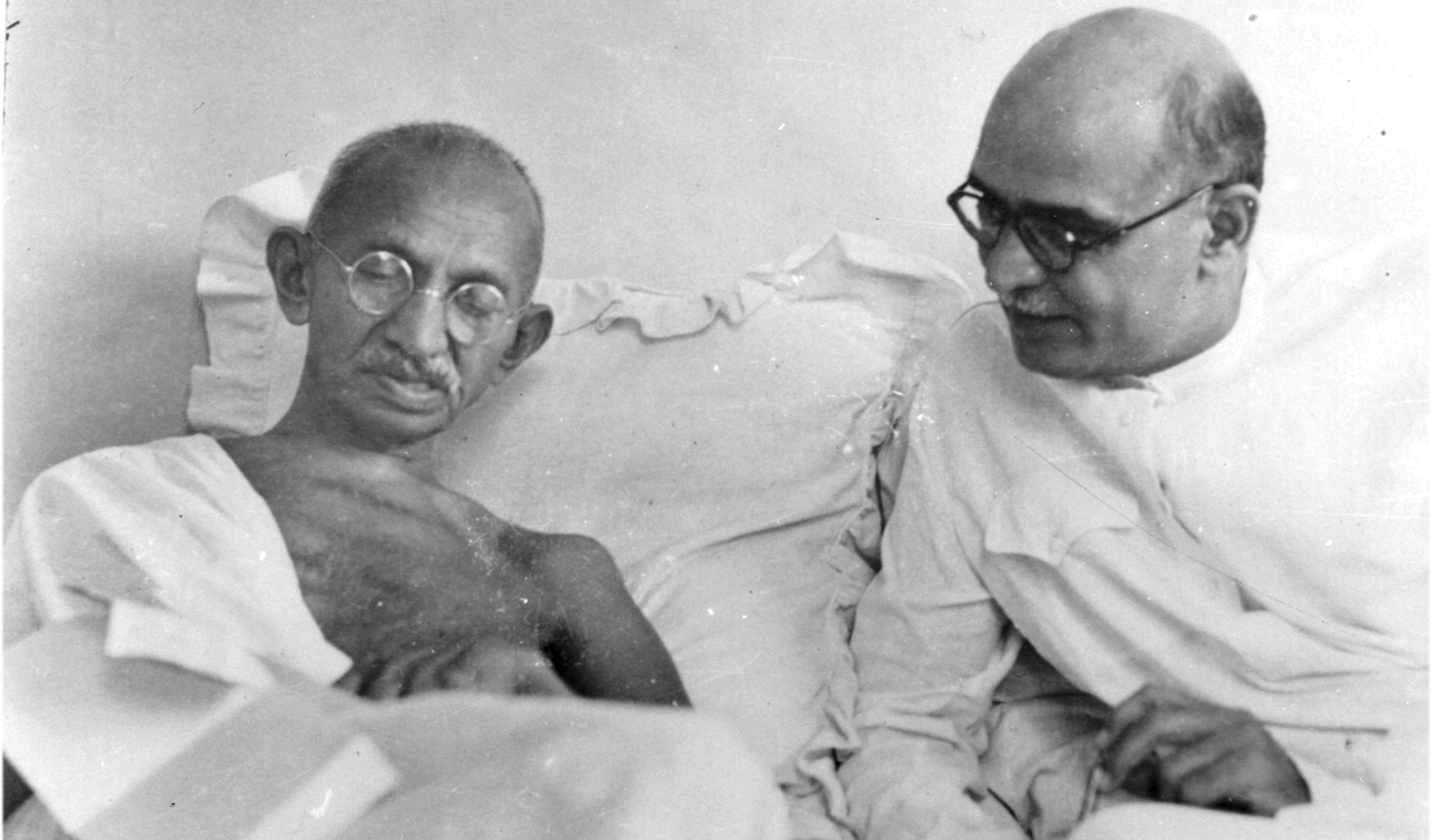
1932 Caste, Gandhi and the Man Beside Gandhi -
1933 - 1991 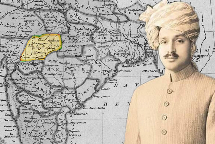
1933 - 1991 Raghubir Sinh: The Prince Who Would Be Historian -
1935 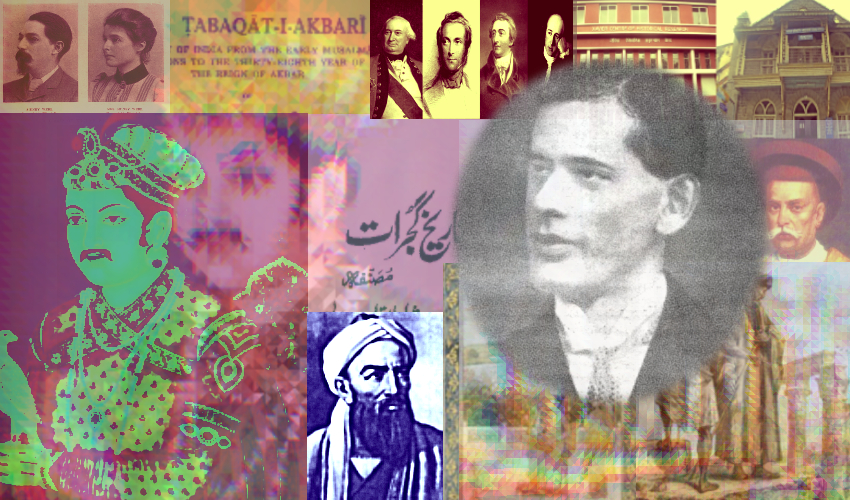
1935 A Historian Recommends: SA Khan’s Timeless Presidential Address -
1865-1928 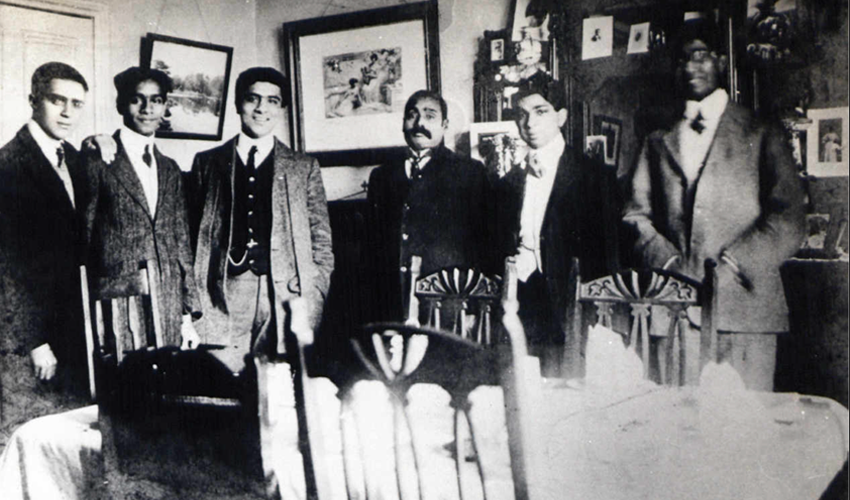
1865-1928 Understanding Lajpat Rai’s Hindu Politics and Secularism -
1935 Modern Review 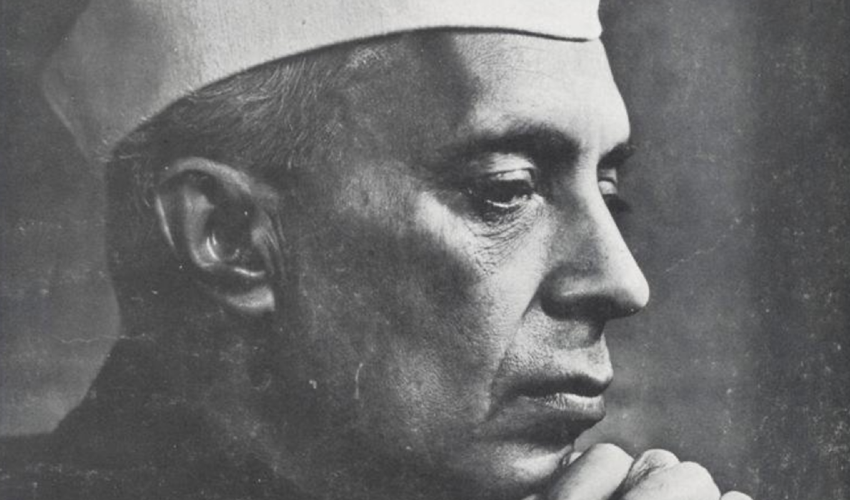
1935 The Modern Review Special: The Mind of a Judge -
1936 Modern Review 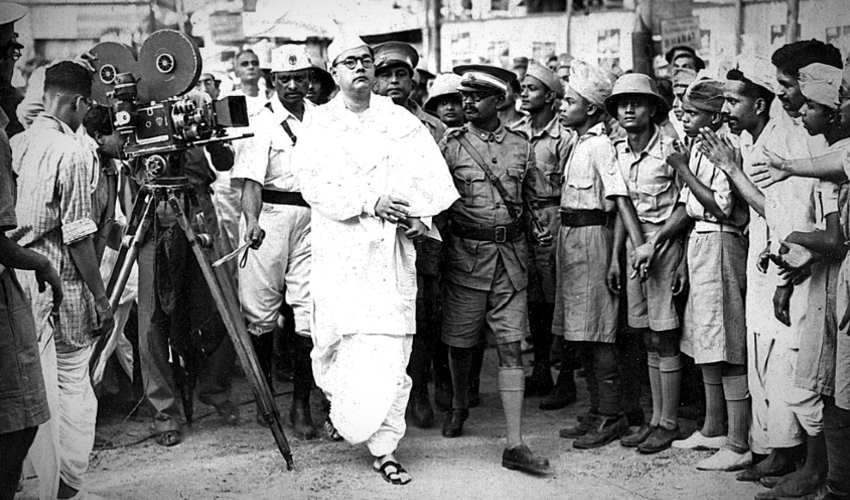
1936 The Modern Review Special: When Netaji Subhas Bose Was Wrongfully Detained for ‘Terrorism’ -
1936 
1936 Annihilation of Caste: Part 1 -
1936 Modern Review 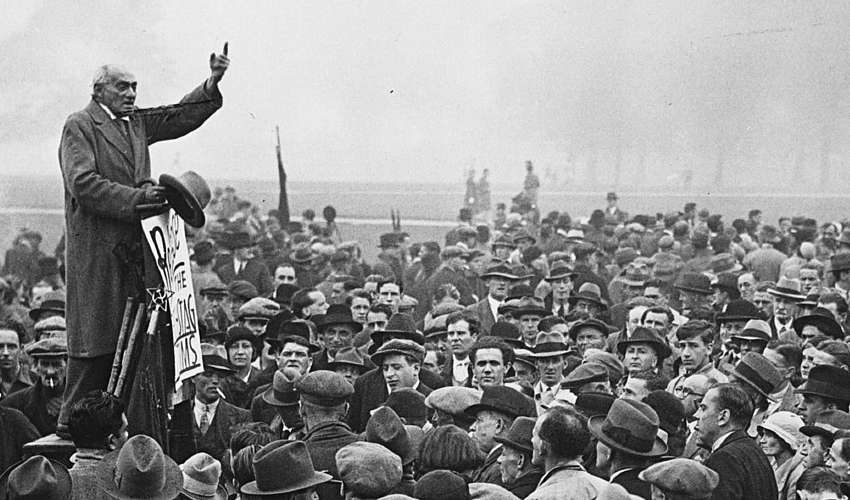
1936 The Modern Review Special: An Indian MP in the British Parliament -
1936 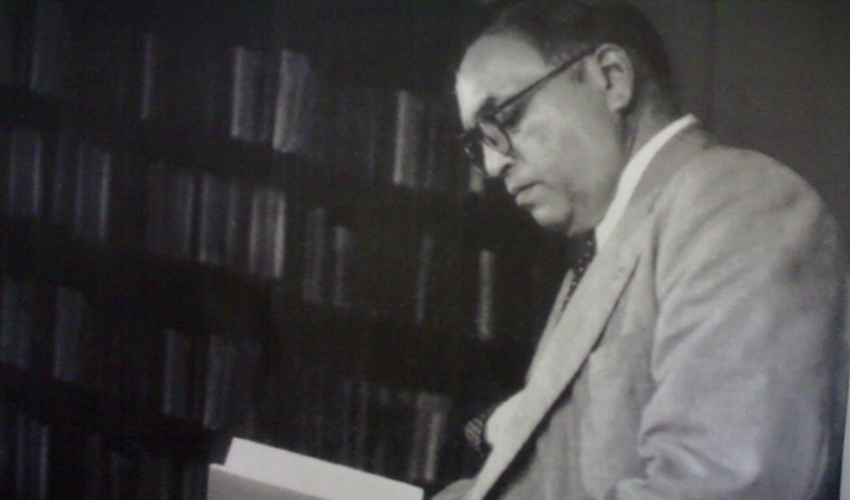
1936 Annihilation of Caste: Part 2 -
1936 
1936 A Reflection of His Age: Munshi Premchand on the True Purpose of Literature -
1936 Modern Review 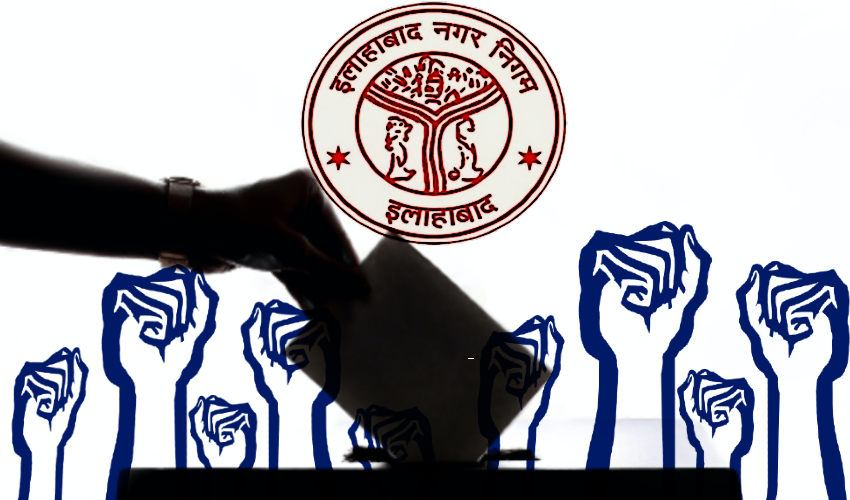
1936 The Modern Review Special: The Defeat of a Dalit Candidate in a 1936 Municipal Election -
1937 Modern Review 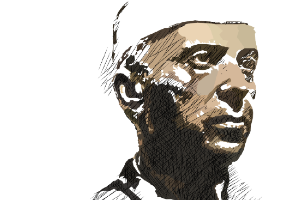
1937 The Modern Review Special: Rashtrapati -
1938 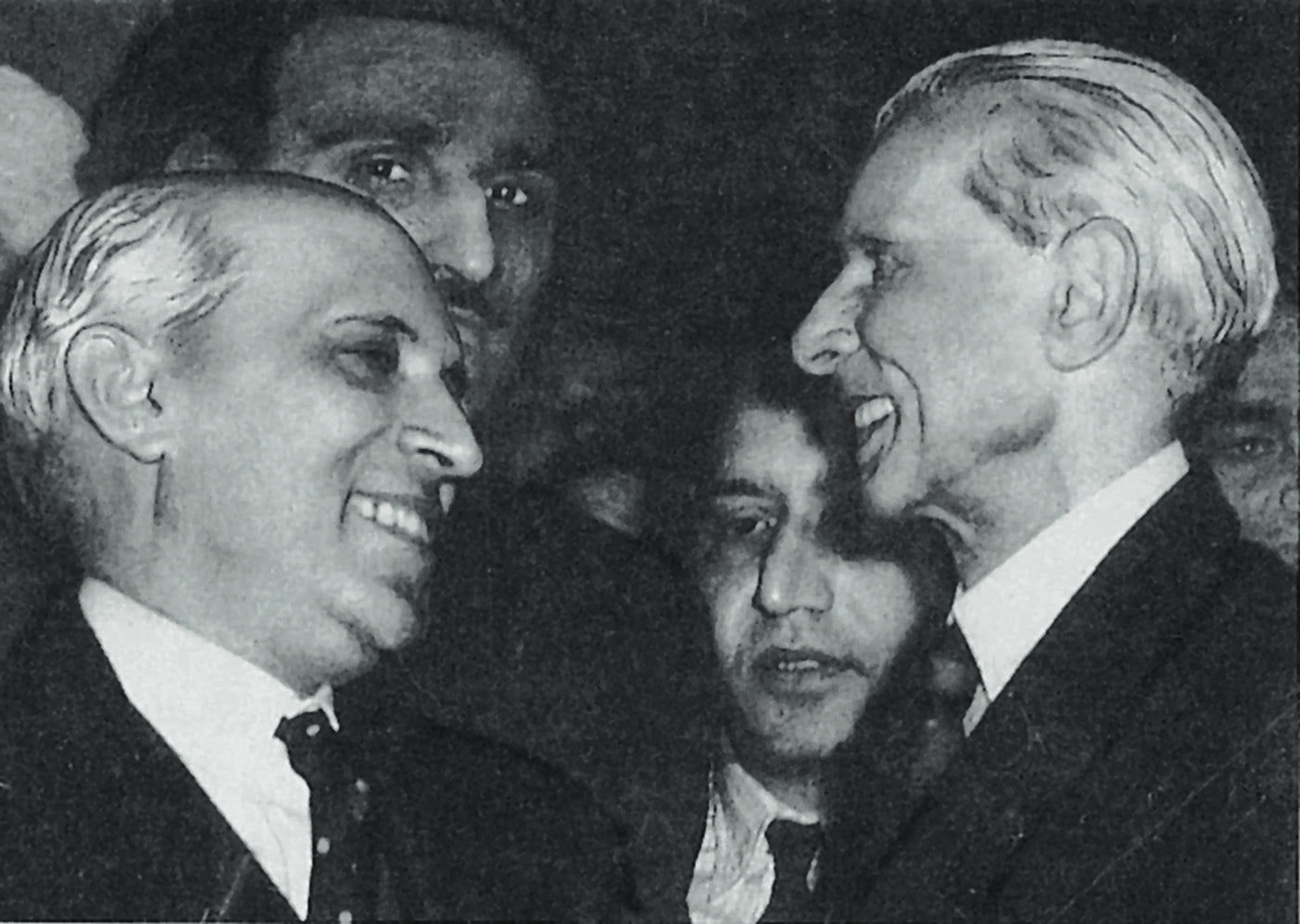
1938 Great Debates: Nehru Vs. Jinnah (1938) -
1942 Modern Review 
1942 IHC Uncovers: A Parallel Government In British India (Part 1) -
1942-1945 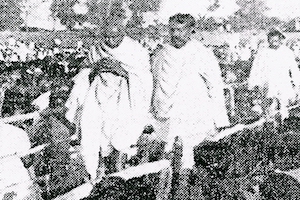
1942-1945 IHC Uncovers: A Parallel Government in British India (Part 2) -
1946 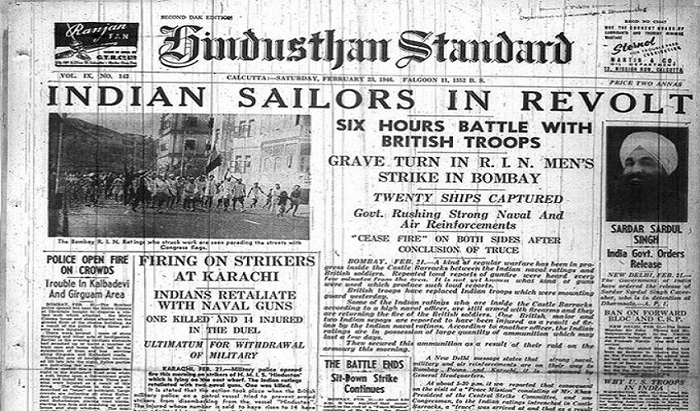
1946 Our Last War of Independence: The Royal Indian Navy Mutiny of 1946 -
1946 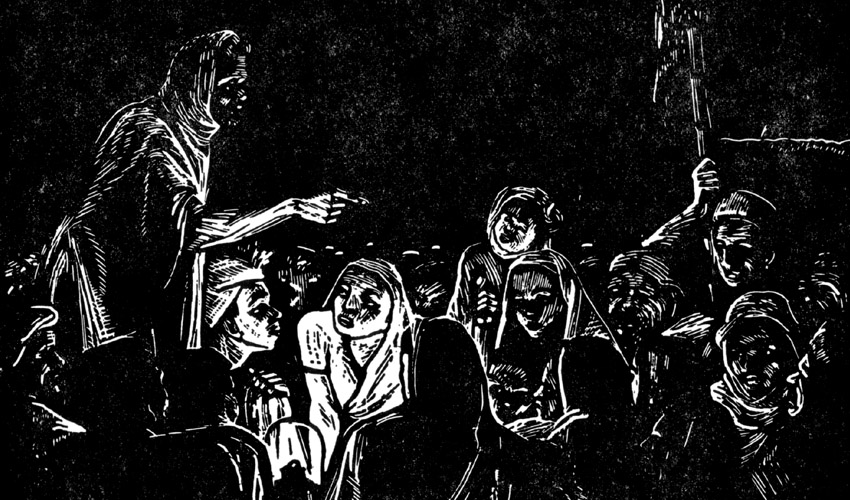
1946 An Artist’s Account of the Tebhaga Movement in Pictures And Prose -
1946 – 1947 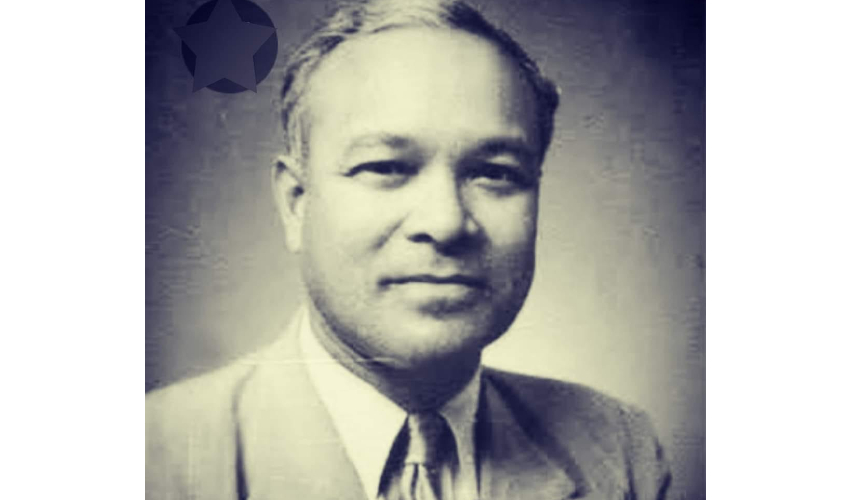
1946 – 1947 “The Most Democratic People on Earth” : An Adivasi Voice in the Constituent Assembly -
1946-1947 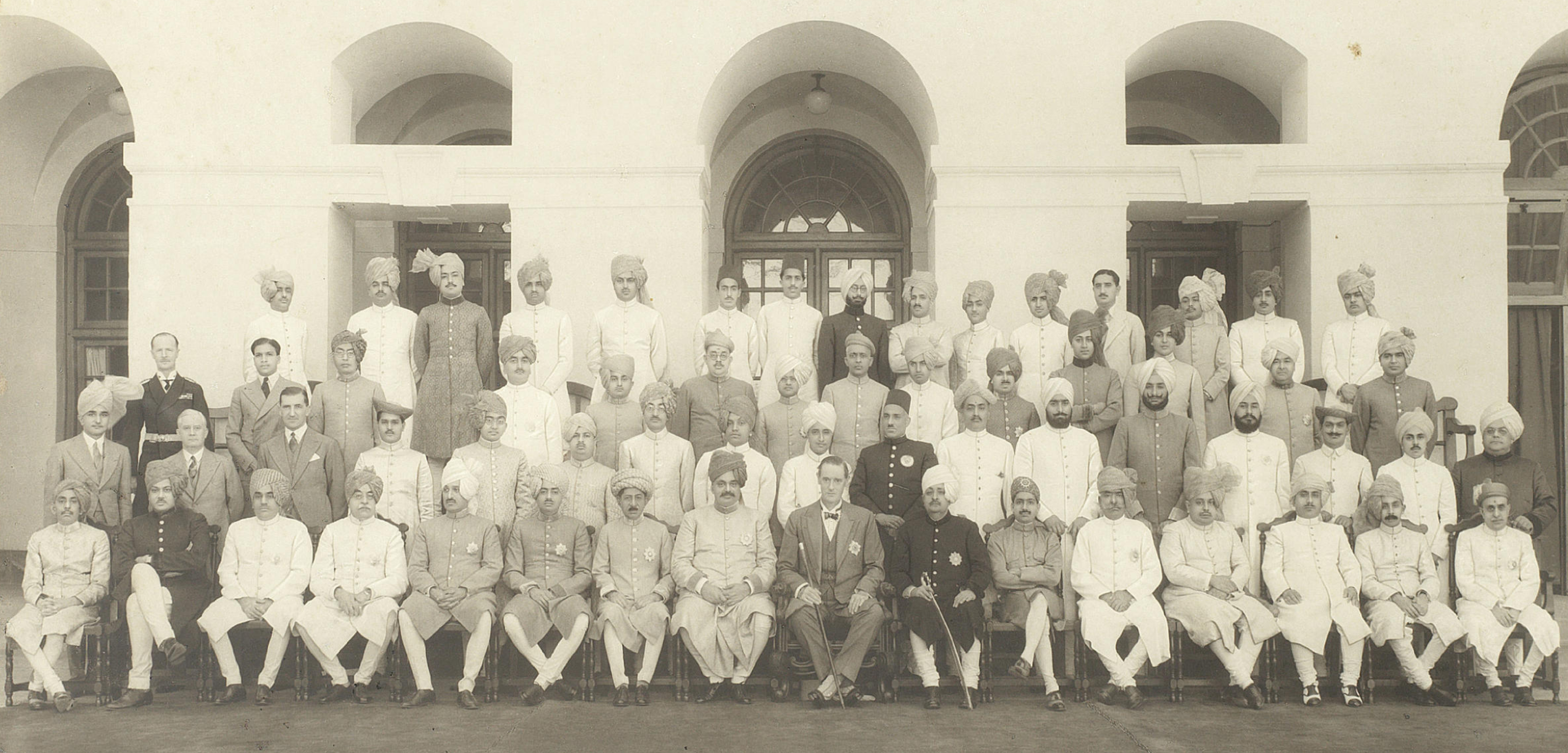
1946-1947 VP Menon and the Birth of Independent India -
1916 - 1947 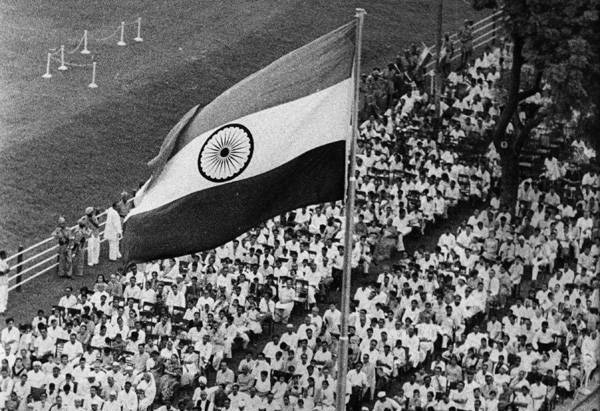
1916 - 1947 8 @ 75: 8 Speeches Independent Indians Must Read -
1947-1951 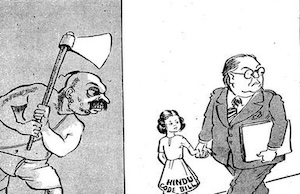
1947-1951 Ambedkar Cartoons: The Joke’s On Us -
1948 
1948 “My Father, Do Not Rest” -
1940-1960 
1940-1960 Integration Myth: A Silenced History of Hyderabad -
1948 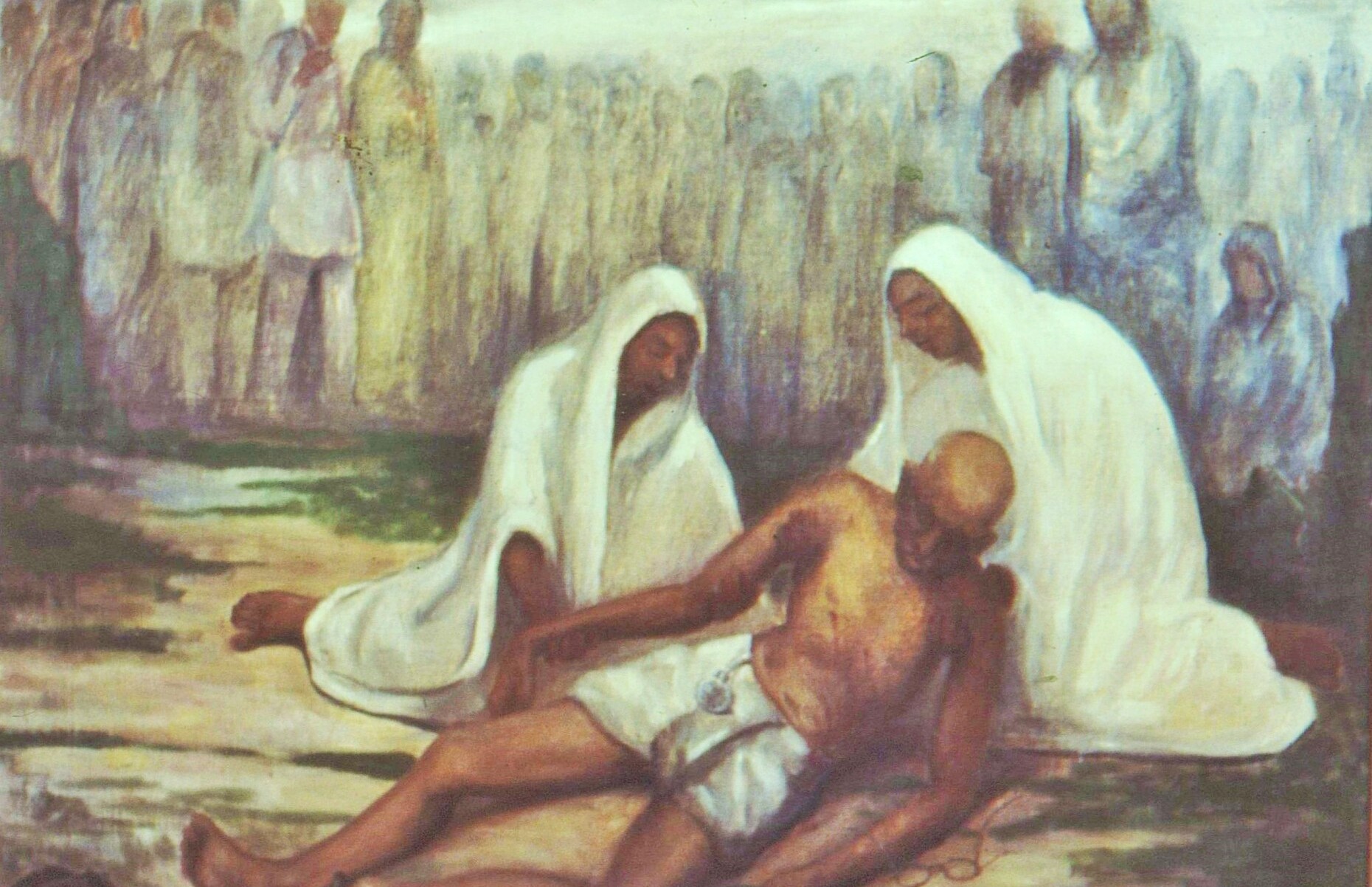
1948 The Assassination of a Mahatma, the Princely States and the ‘Hindu’ Nation -
1949 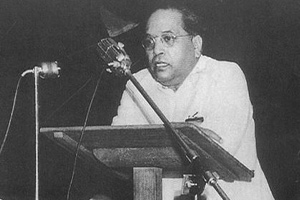
1949 Ambedkar warns against India becoming a ‘Democracy in Form, Dictatorship in Fact’ -
1950 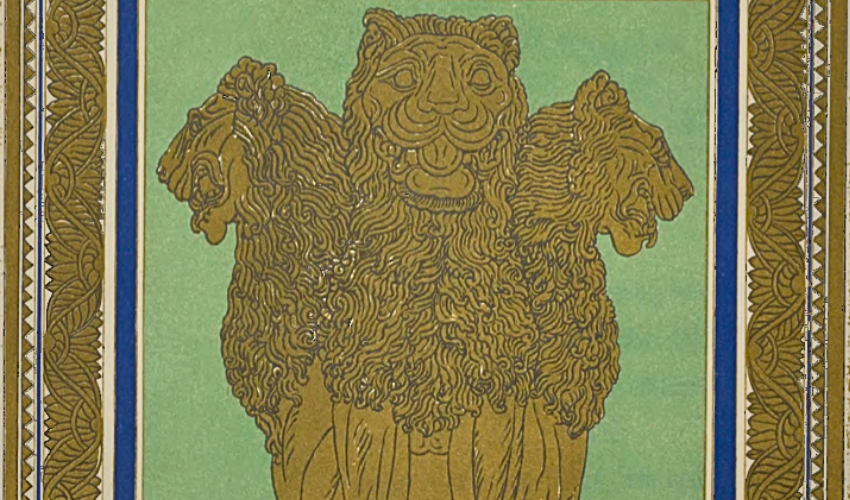
1950 Illustrations from the constitution -
1951 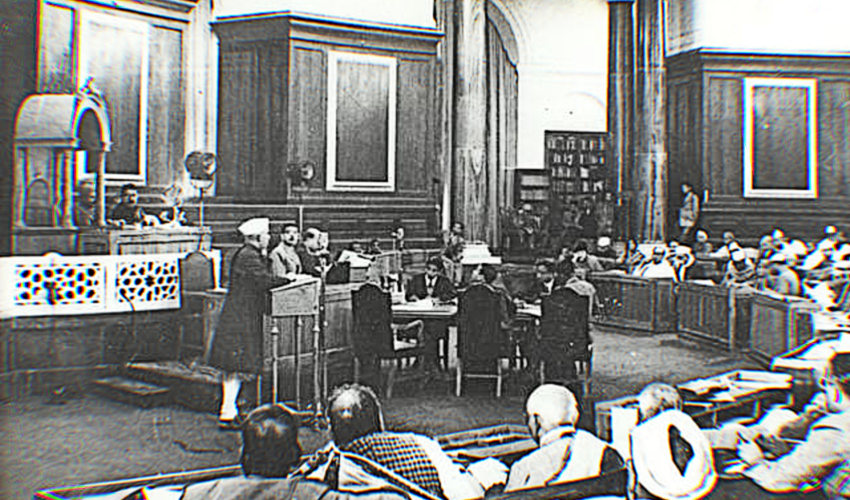
1951 How the First Amendment to the Indian Constitution Circumscribed Our Freedoms & How it was Passed -
1967 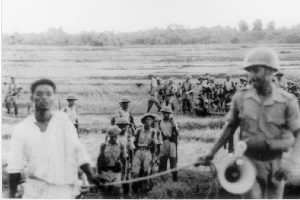
1967 Once Upon A Time In Naxalbari -
1970 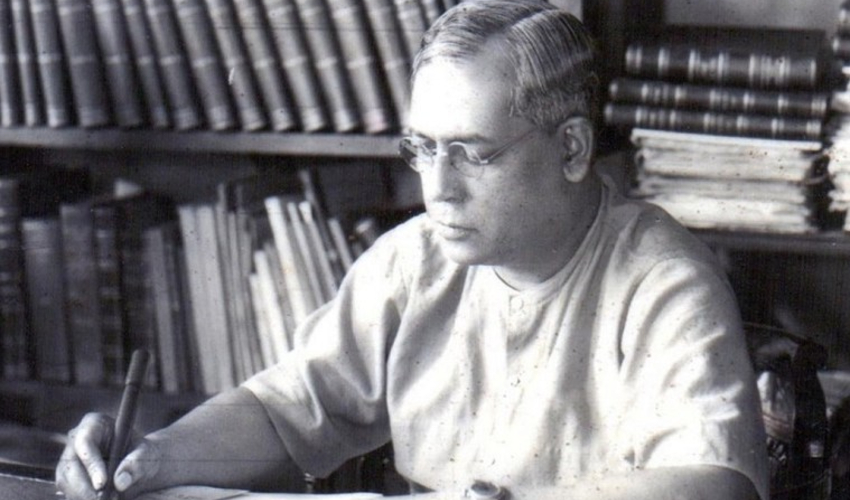
1970 R.C. Majumdar on Shortcomings in Indian Historiography -
1973 - 1993 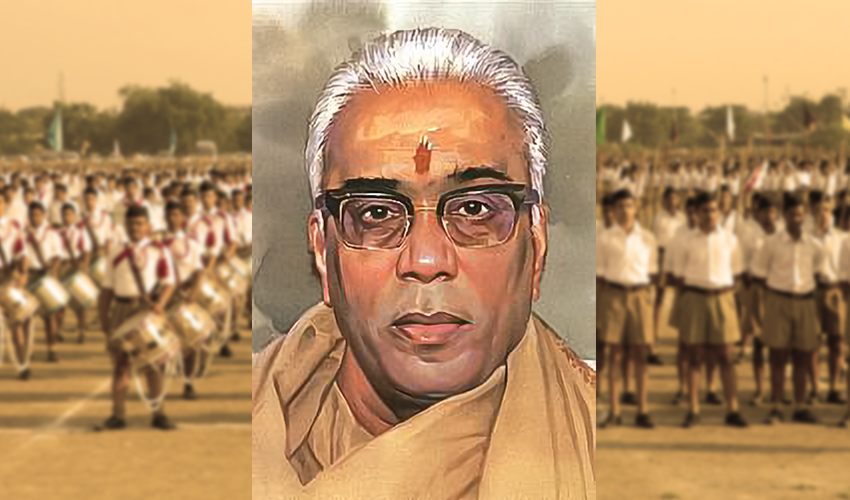
1973 - 1993 Balasaheb Deoras: Kingmaker of the Sangh -
1975 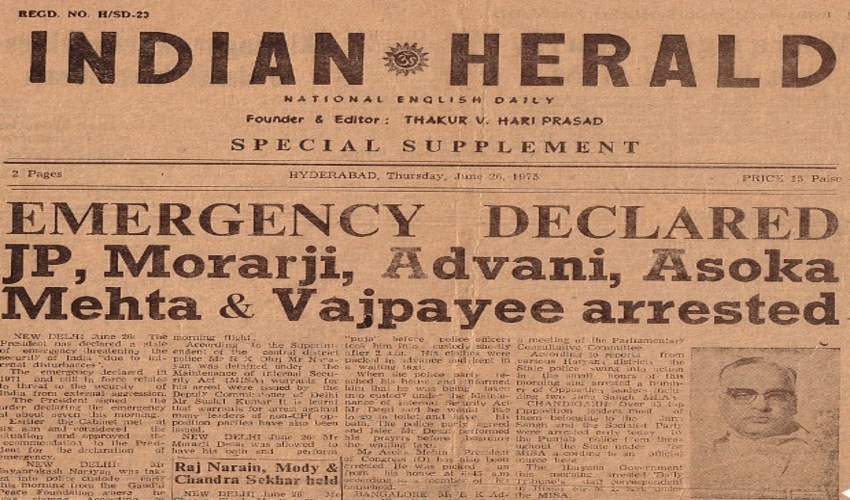
1975 The Emergency Package: Shadow Power -
1975 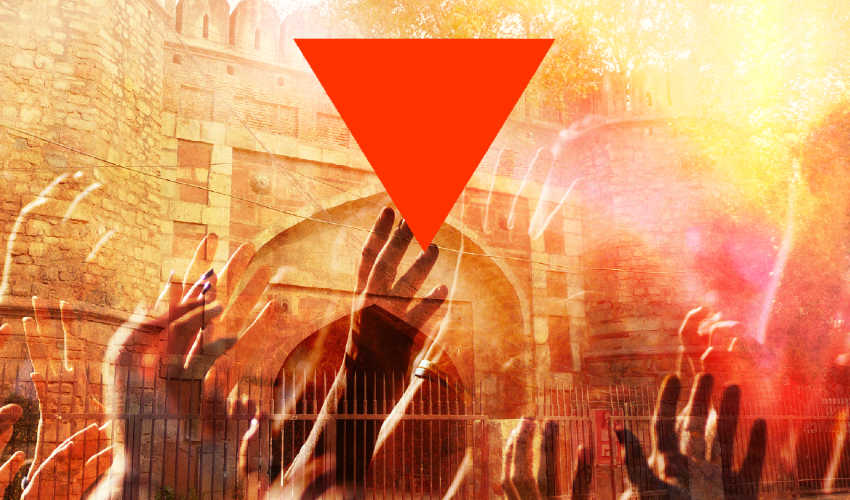
1975 The Emergency Package: The Prehistory of Turkman Gate – Population Control -
1977 – 2011 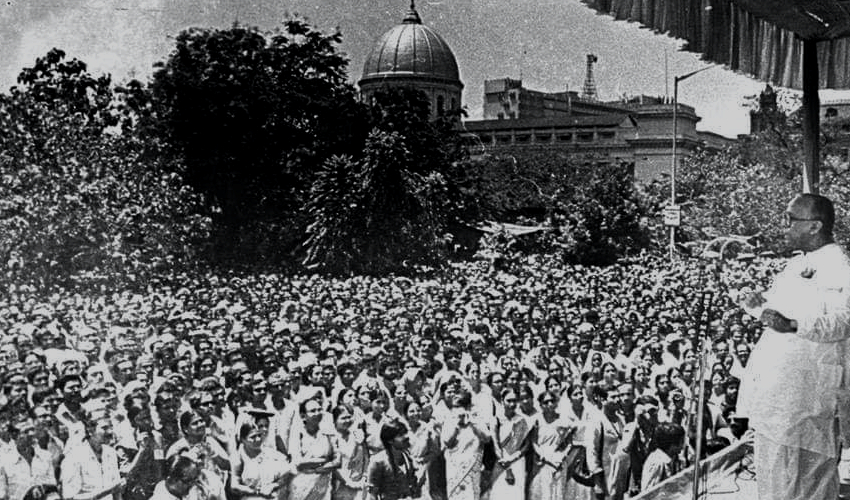
1977 – 2011 Power is an Unforgiving Mistress: Lessons from the Decline of the Left in Bengal -
1984 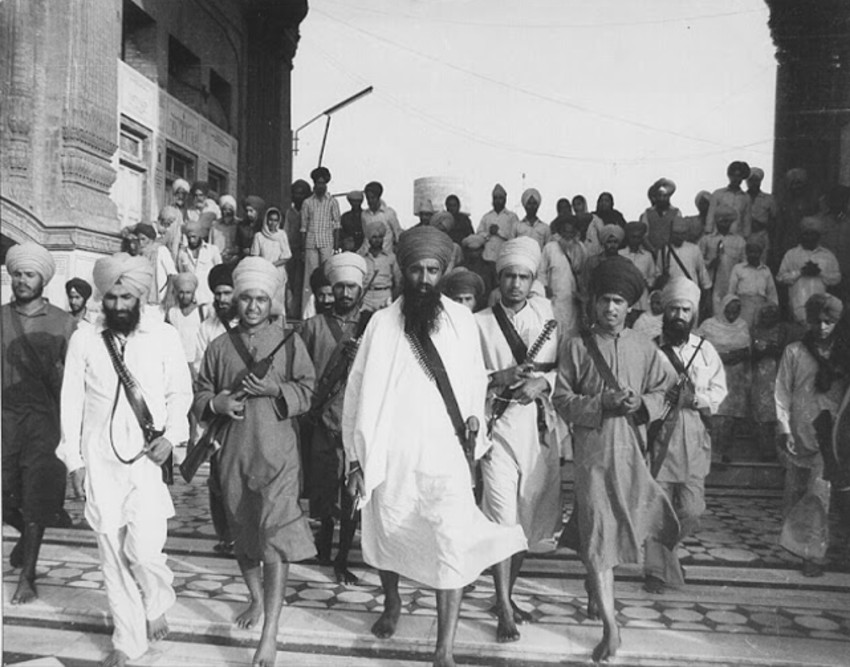
1984 Mrs Gandhi’s Final Folly: Operation Blue Star -
1916-2004 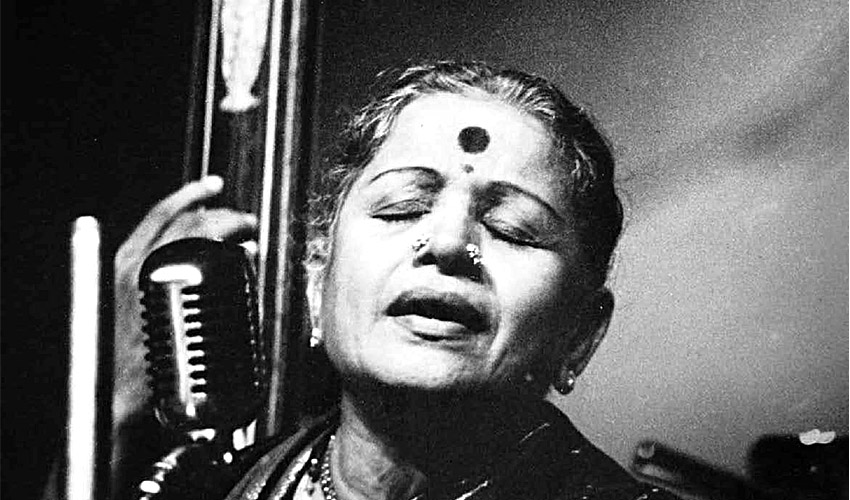
1916-2004 Amjad Ali Khan on M.S. Subbulakshmi: “A Glorious Chapter for Indian Classical Music” -
2008 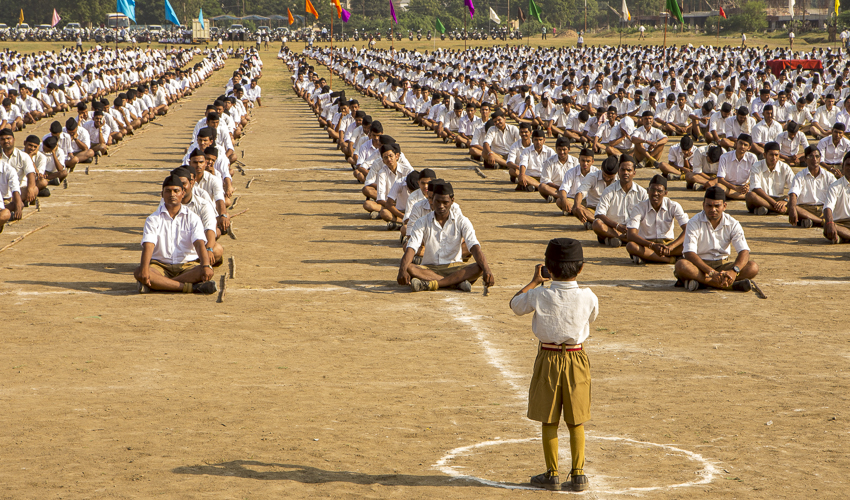
2008 Whose History Textbook Is It Anyway? -
2006 - 2009 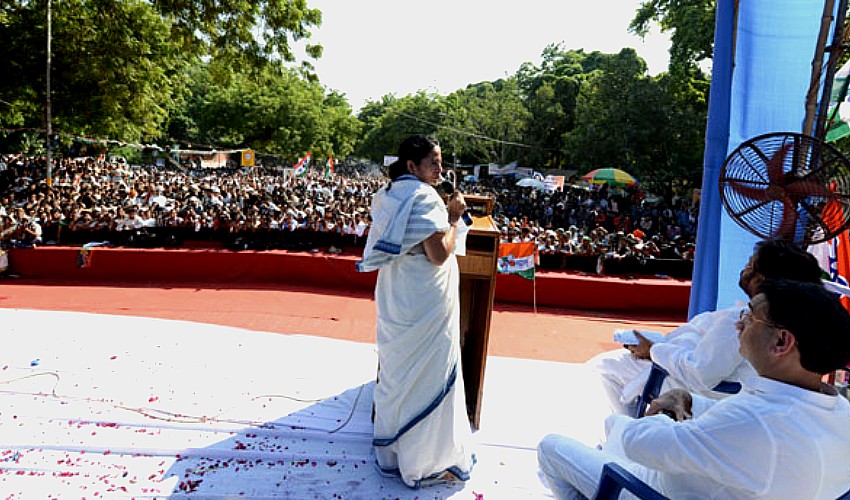
2006 - 2009 Singur-Nandigram-Lalgarh: Movements that Remade Mamata Banerjee -
2020 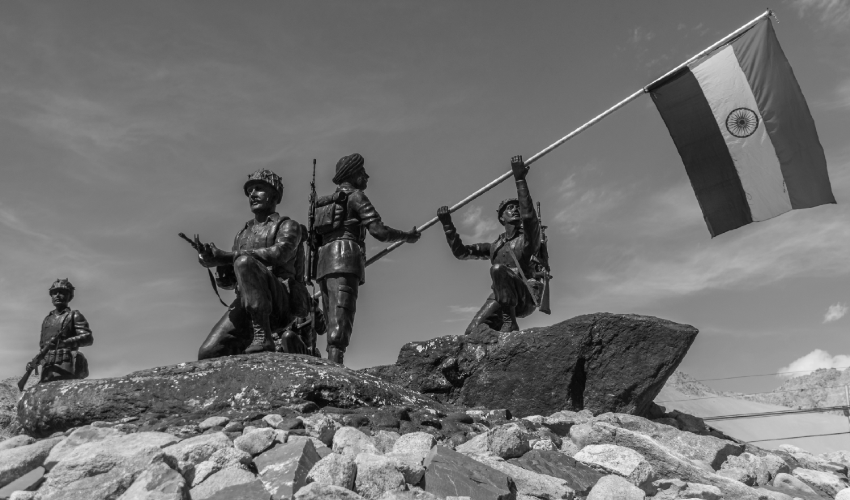
2020 The Indo-China Conflict: 10 Books We Need To Read -
2021 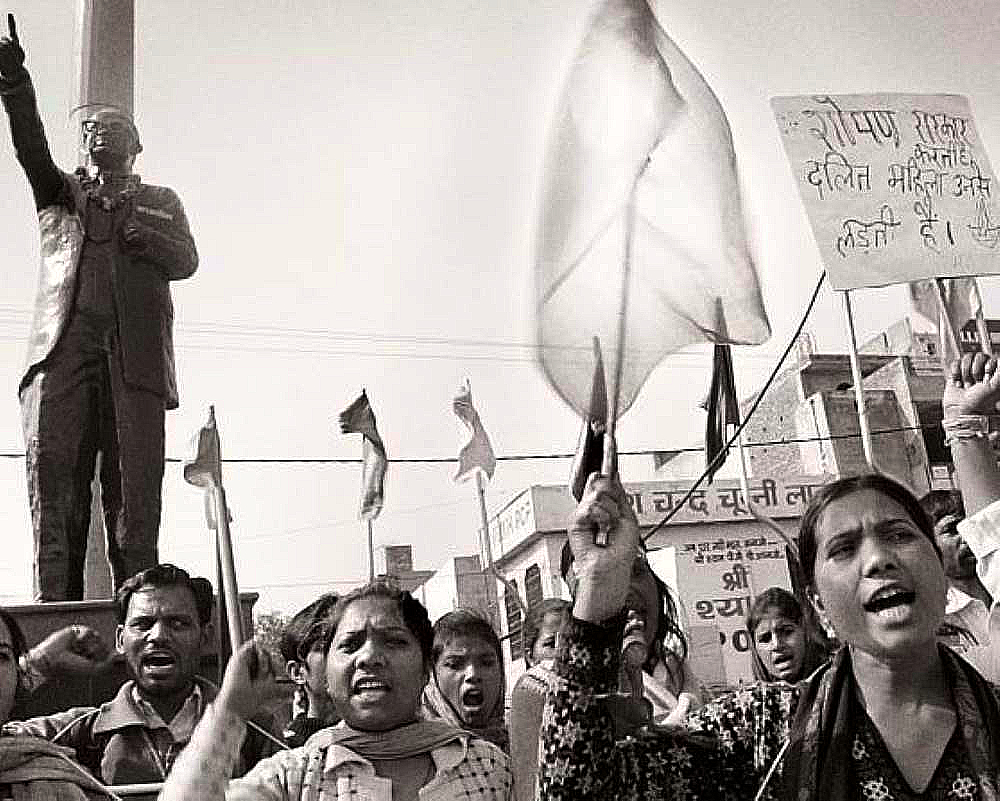
2021 Singing/Writing Liberation: Dalit Women’s Narratives

![The royal family of Sitamau. [Credit: indianrajputs.com]](http://indianhistorycollective.com/wp-content/uploads/2021/06/Raja-Raj-Singh-and-Family.jpeg)
